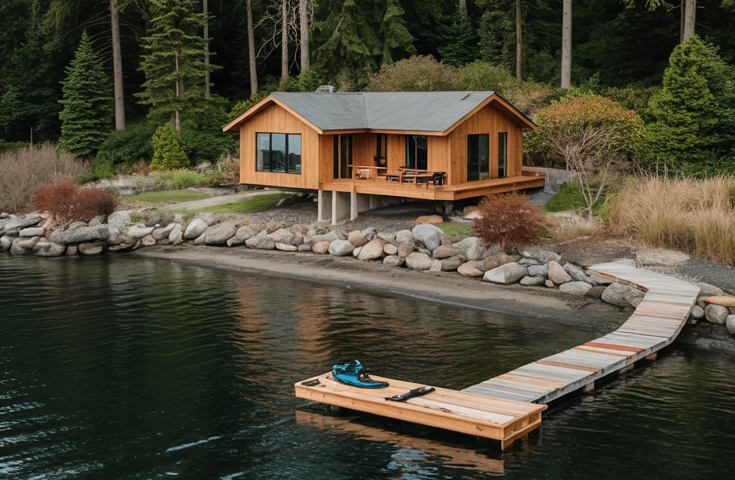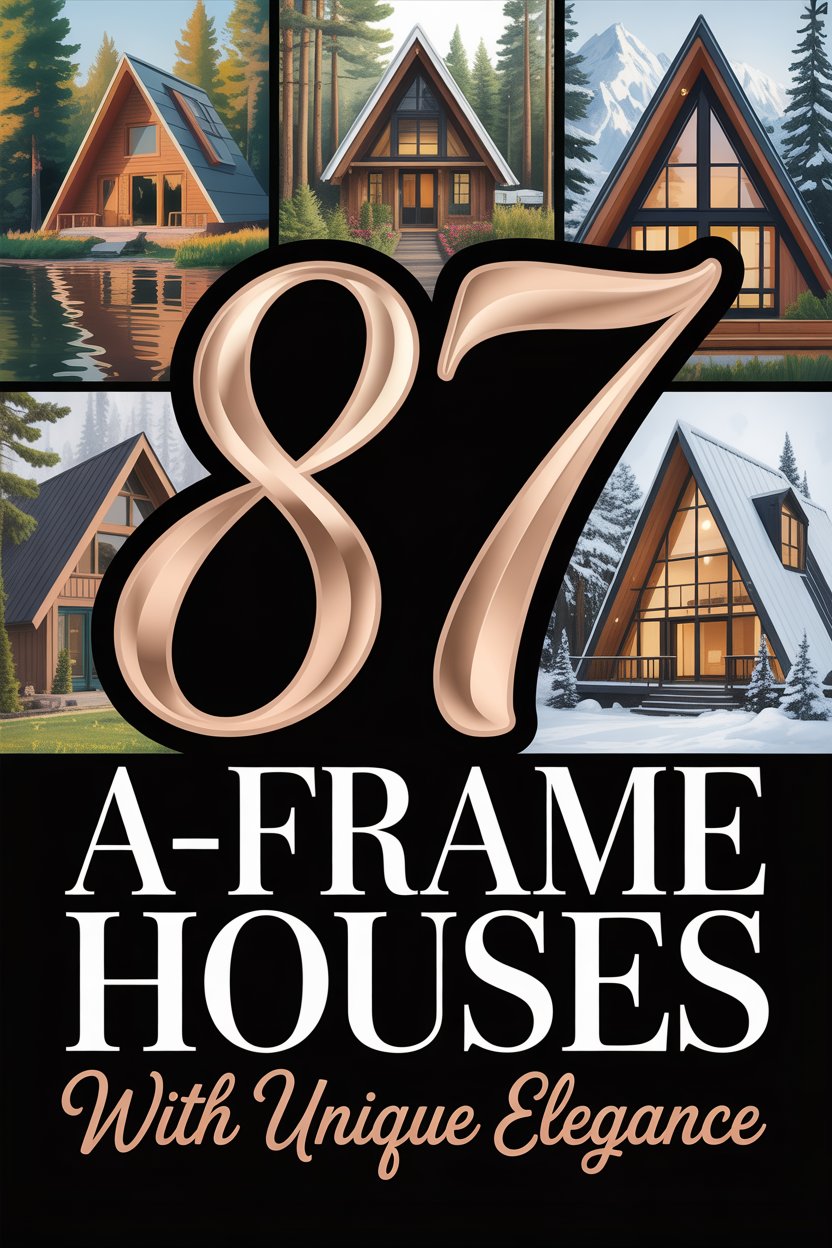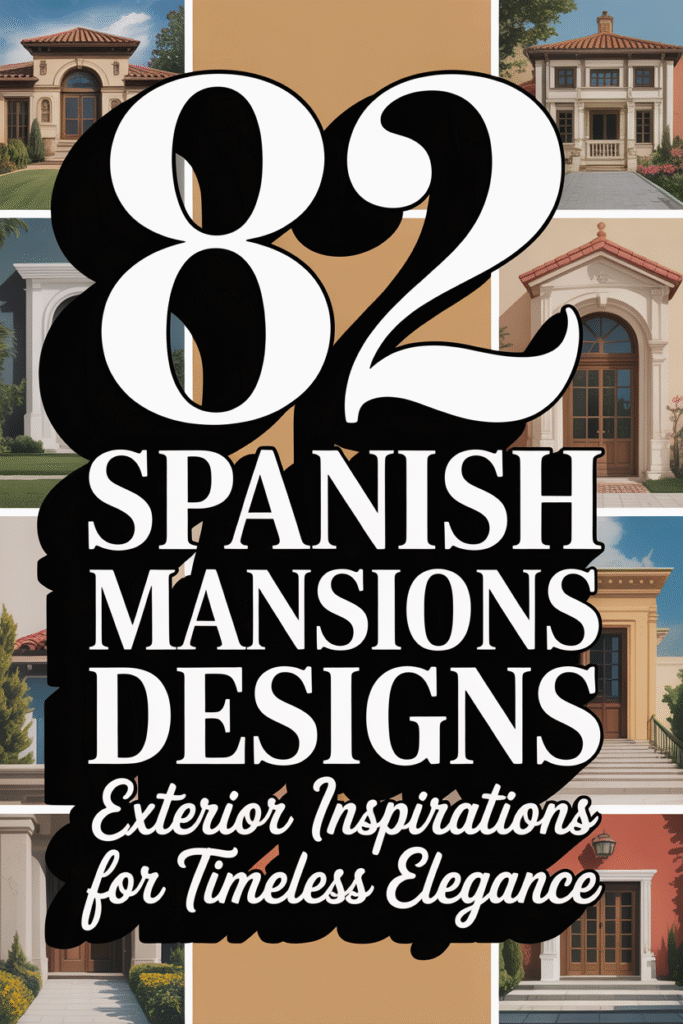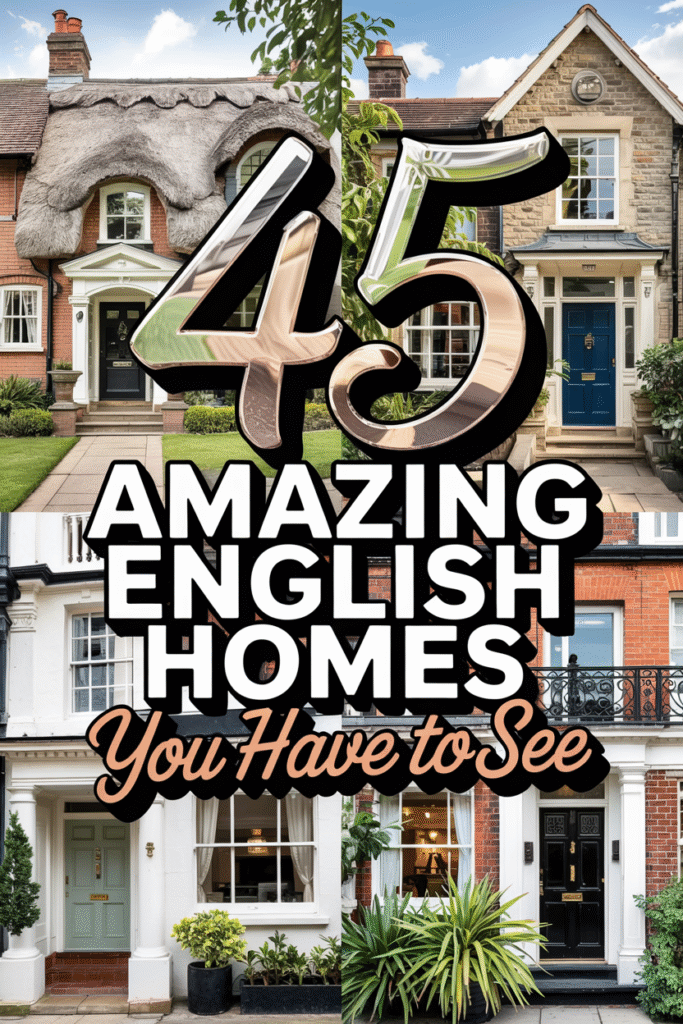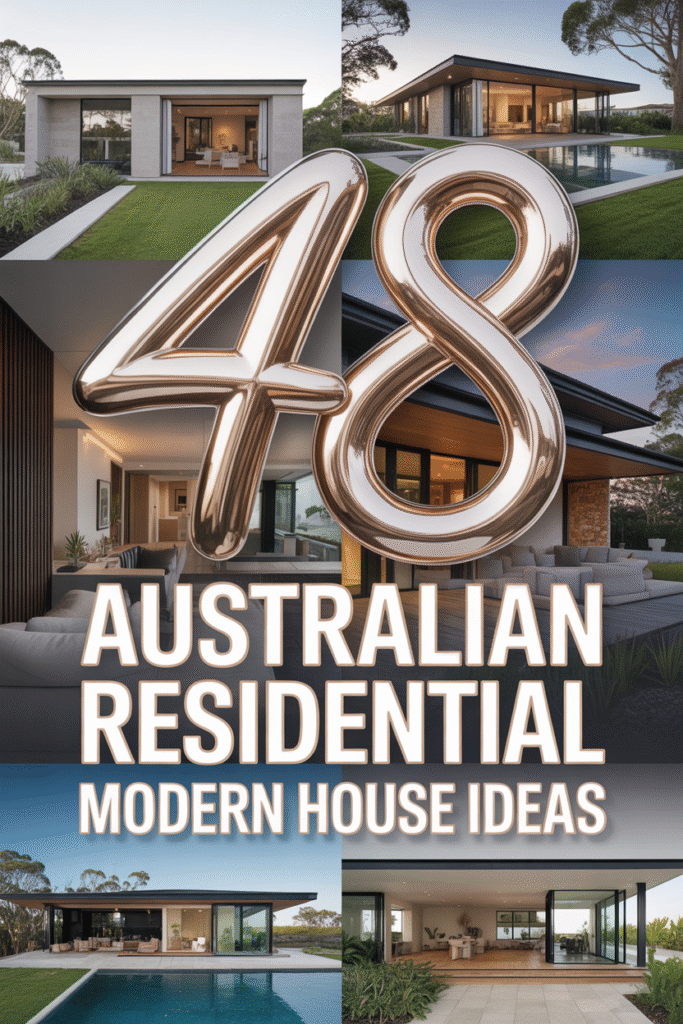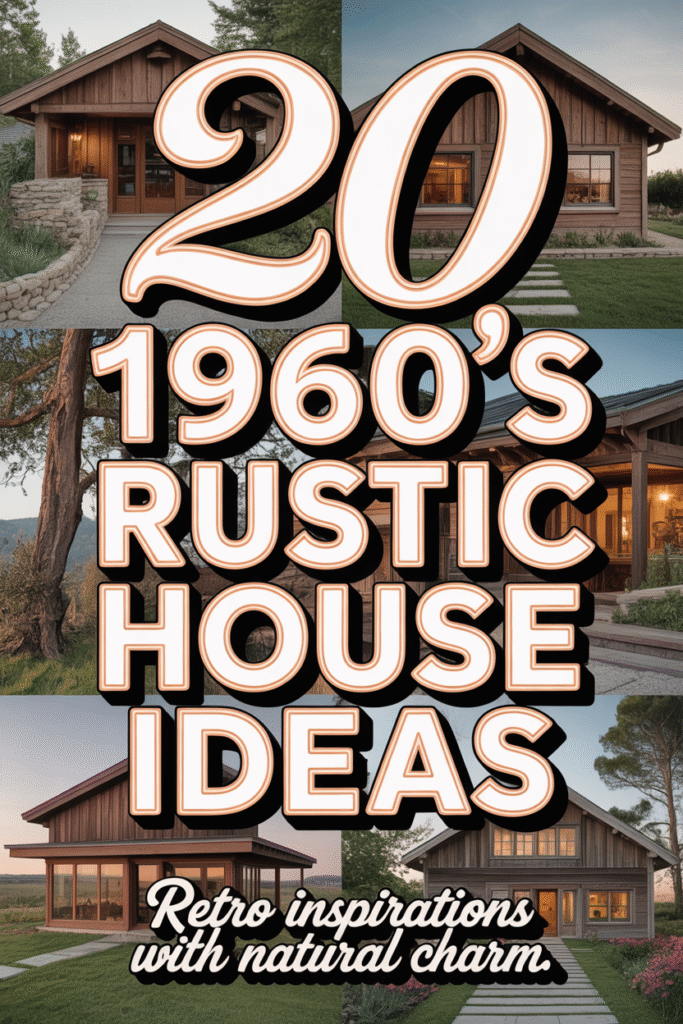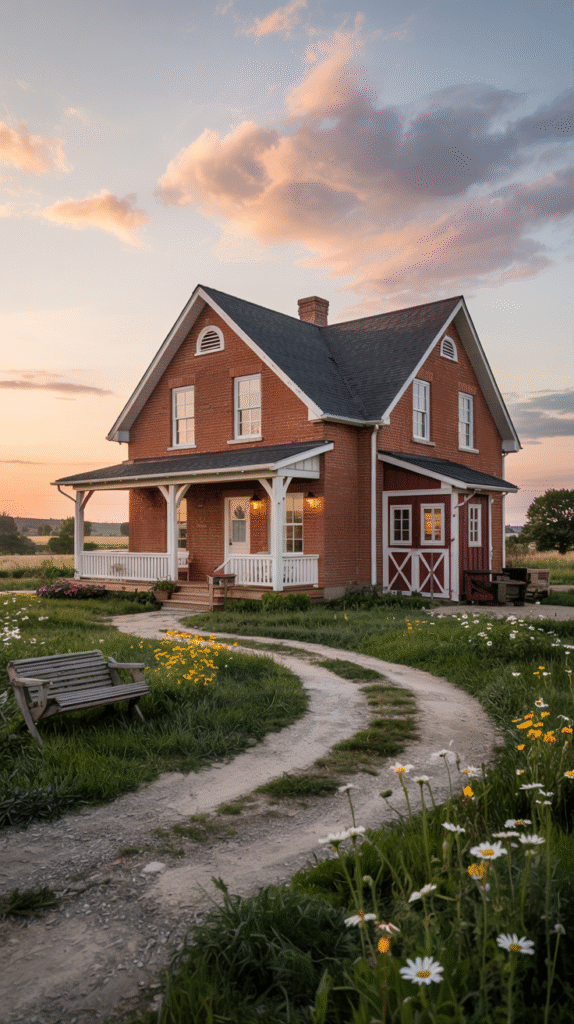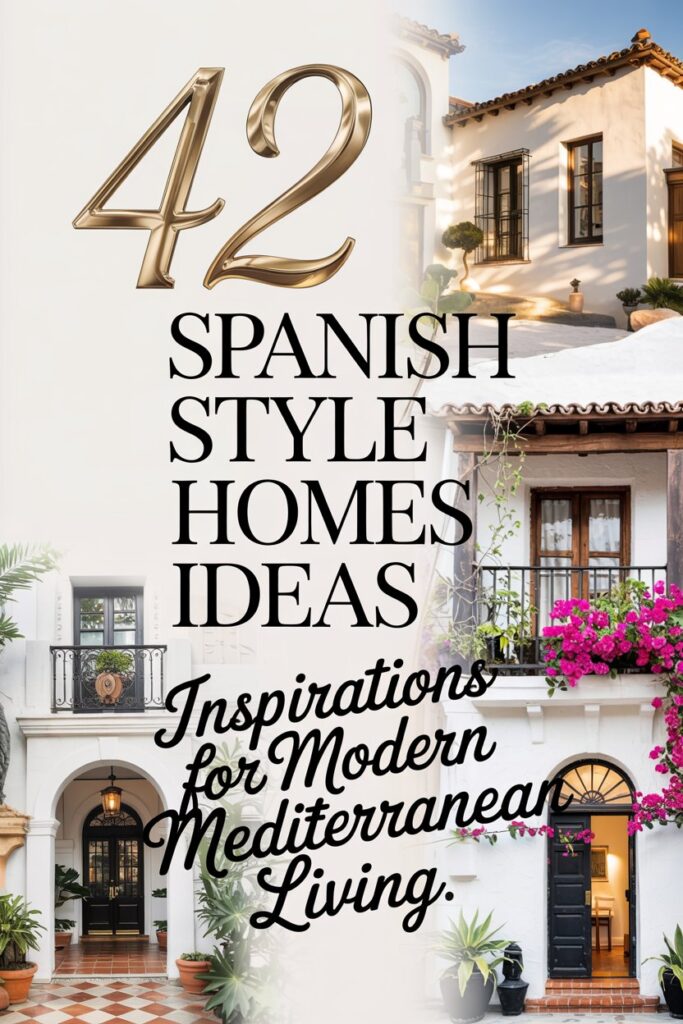A-frame houses have long captivated the imagination of architects, homeowners, and nature enthusiasts alike. With their distinctive triangular silhouette that evokes the simplicity of a child’s drawing of a home, these structures blend practicality with poetic form. The A-frame, named for its resemblance to the letter “A,” features steeply pitched roofs that extend down to the foundation, creating walls that seamlessly merge with the roofline. This design not only offers a bold visual statement but also embodies a harmonious connection to the environment, particularly in rustic or mountainous settings. In an era where sustainable, efficient living is paramount, A-frame houses stand out as timeless icons of architectural ingenuity.
What makes A-frames so enduringly appealing? At their core, they represent a fusion of minimalism and maximal impact. The steep roof angle—often between 45 and 60 degrees—serves multiple purposes: it sheds heavy snow loads effortlessly, maximizes vertical space within a compact footprint, and allows for expansive windows that flood interiors with natural light. Historically associated with vacation retreats, A-frames have evolved into versatile dwellings that suit everything from cozy cabins to luxurious modern residences. Their elegance lies in this duality: the raw, elemental form paired with opportunities for sophisticated customization.
Today, as we explore 87 A-frame houses with unique elegance, we’ll delve into the rich tapestry of this architectural style. From its ancient roots to contemporary interpretations, each example highlights how A-frames can transform ordinary spaces into extraordinary sanctuaries. Whether nestled in snowy peaks, perched on coastal cliffs, or integrated into urban fringes, these homes demonstrate the boundless creativity possible within the A-frame’s geometric constraints. As we journey through their stories, patterns emerge—innovative material choices, clever spatial solutions, and a profound respect for the surrounding landscape. This collection is more than a catalog; it’s an invitation to reimagine home as a place of both shelter and inspiration.
The resurgence of A-frames in recent years speaks to a broader cultural shift. In a world increasingly disconnected from nature, these homes offer a return to simplicity without sacrificing comfort. Architects are pushing boundaries, incorporating sustainable materials like reclaimed wood and energy-efficient glazing, while interior designers layer in textures that enhance the cozy, lofted atmospheres. The result? Homes that feel both intimate and expansive, rustic yet refined. With 87 examples to draw from, this article uncovers the essence of A-frame elegance, proving that true beauty often lies in elegant restraint.
The Timeless Allure of A-Frame Architecture
The A-frame’s charm is rooted in its unpretentious geometry, but its true elegance unfolds through thoughtful design choices that elevate the ordinary to the extraordinary. At first glance, the A-frame might seem like a straightforward solution—two sloped sides meeting at a peak—but beneath this simplicity lies a wealth of architectural potential. The steep pitch not only ensures structural integrity in harsh climates but also creates dramatic interior volumes, where exposed rafters draw the eye upward, fostering a sense of awe and openness.
Consider the way light dances in an A-frame. Large, triangular windows or full-height glazing on the gable ends capture panoramic views, blurring the line between inside and out. This feature, a hallmark of the style, invites the landscape to become part of the living space, whether it’s a serene forest canopy or a rugged mountain vista. Materials play a crucial role too: cedar siding weathers to a silver patina, stone bases ground the structure in its site, and metal accents add a modern edge. These elements combine to create homes that age gracefully, their elegance deepening with time.
Beyond aesthetics, A-frames excel in functionality. The compact base minimizes site disturbance, making them ideal for sloped terrains or eco-sensitive areas. Lofts provide flexible sleeping quarters, while open-plan ground floors encourage communal living. Yet, this allure isn’t without nuance. The sloped walls demand creative furniture placement—low-slung sofas and built-in storage maximize usability without cluttering the space. In essence, the A-frame challenges us to live intentionally, where every square foot is cherished.
As we turn our attention to a curated gallery of these homes, prepare to be inspired by the diversity within uniformity. Each image captures a moment of unique elegance, from minimalist retreats to opulent hideaways, showcasing how the A-frame adapts to varied lifestyles and locales.
Image Gallery: 87 A-Frame Houses Captured in Stunning Detail
Imagine scrolling through a carousel of breathtaking visuals, each slide revealing another facet of A-frame mastery—a slow reveal that builds anticipation like turning the pages of a well-worn sketchbook. This gallery isn’t merely a collection of photographs; it’s a visual narrative that immerses you in the world of A-frame living, highlighting basic principles while sparking endless ideas for your own project. Starting with the fundamentals, an A-frame house derives its name from the structural skeleton that forms a perfect “A”: two rafters leaning against each other, braced at the base and apex, creating a self-supporting frame that requires minimal additional walls. This basic engineering marvel dates back millennia, with early examples in Scandinavian longhouses and Japanese gasshō-zukuri farmsteads, where thatched roofs sloped dramatically to repel rain and snow. Today, that same principle underpins modern builds, but with refinements like engineered timber for strength and insulation layers for year-round comfort.
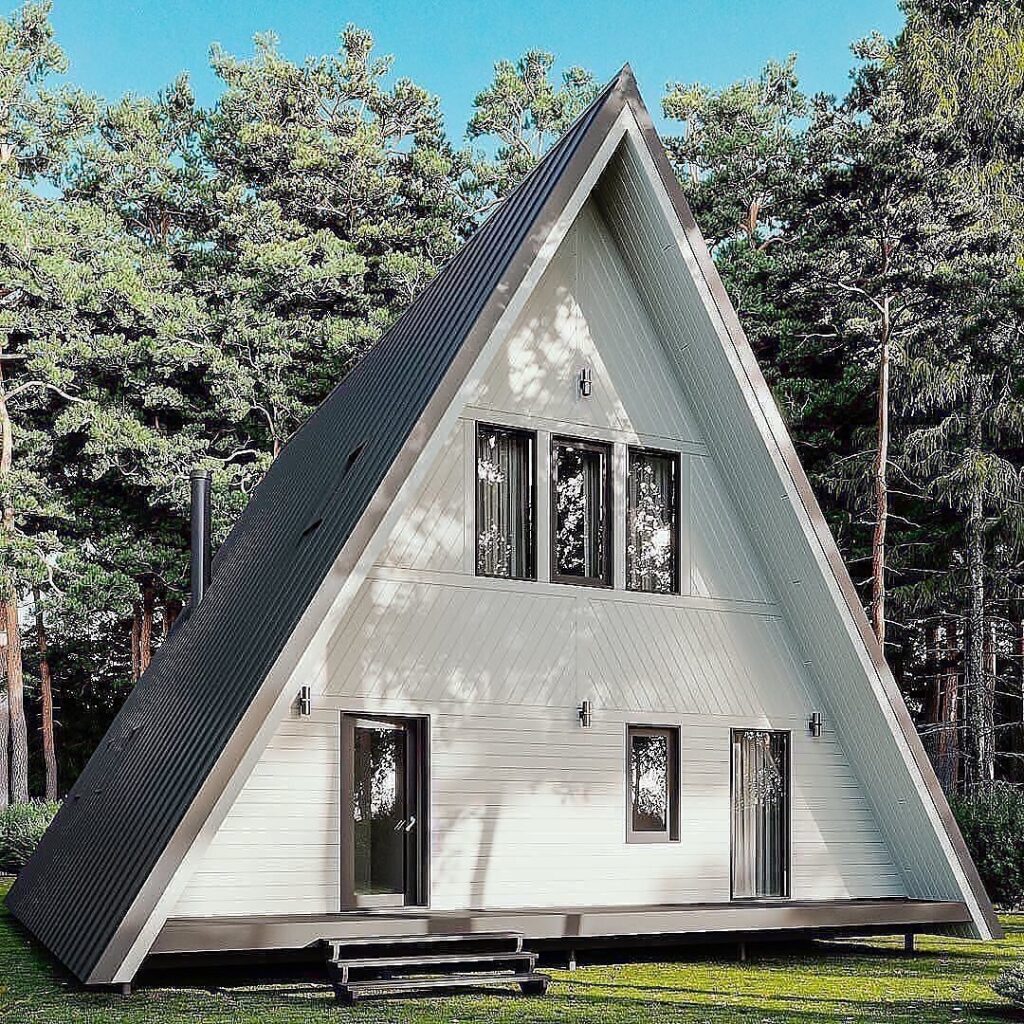
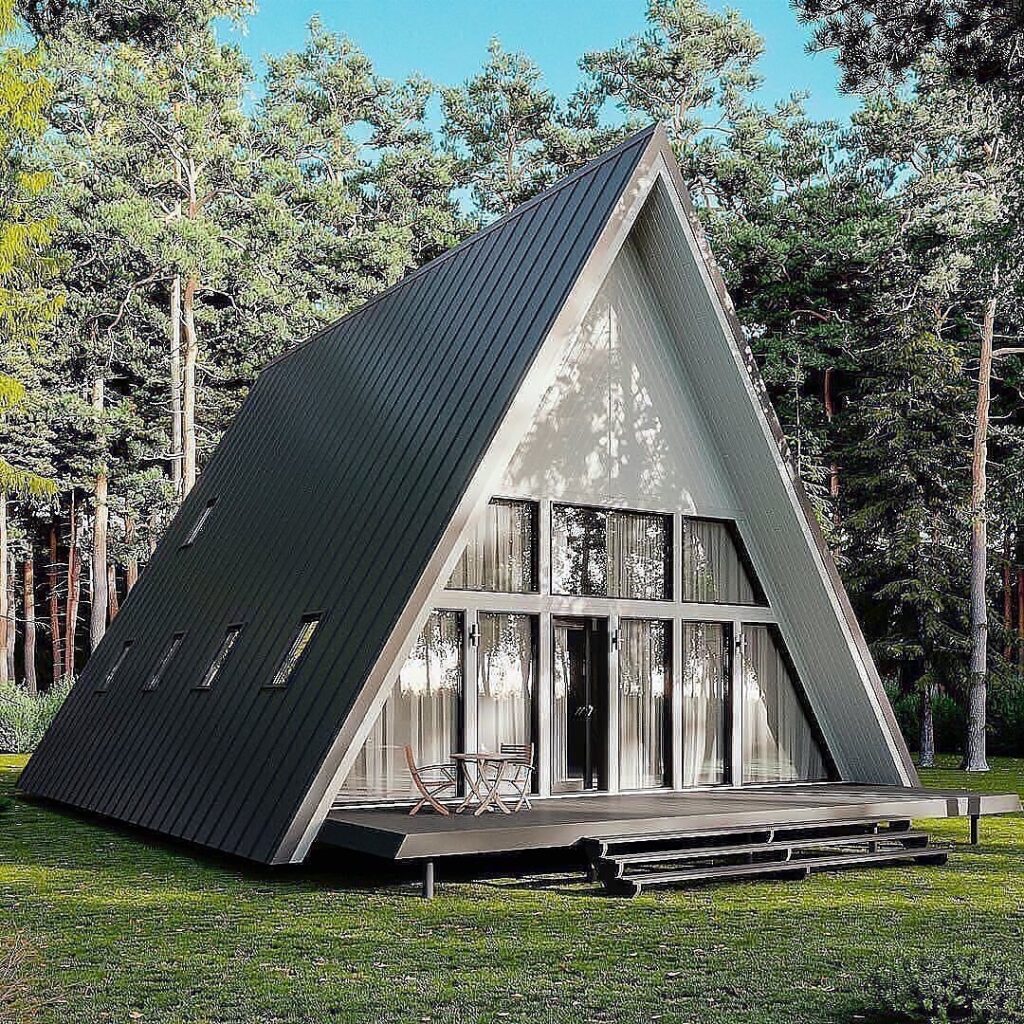
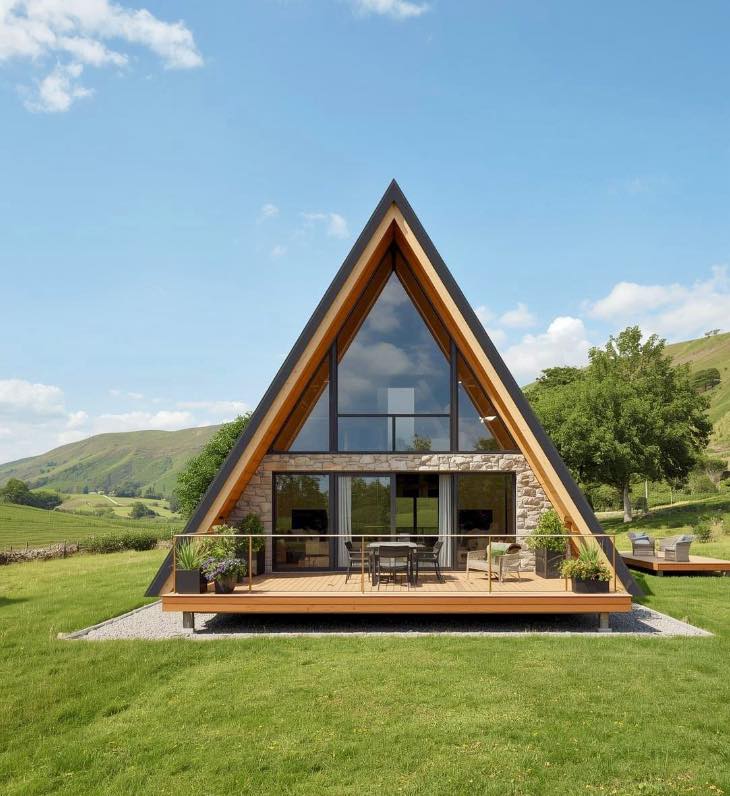
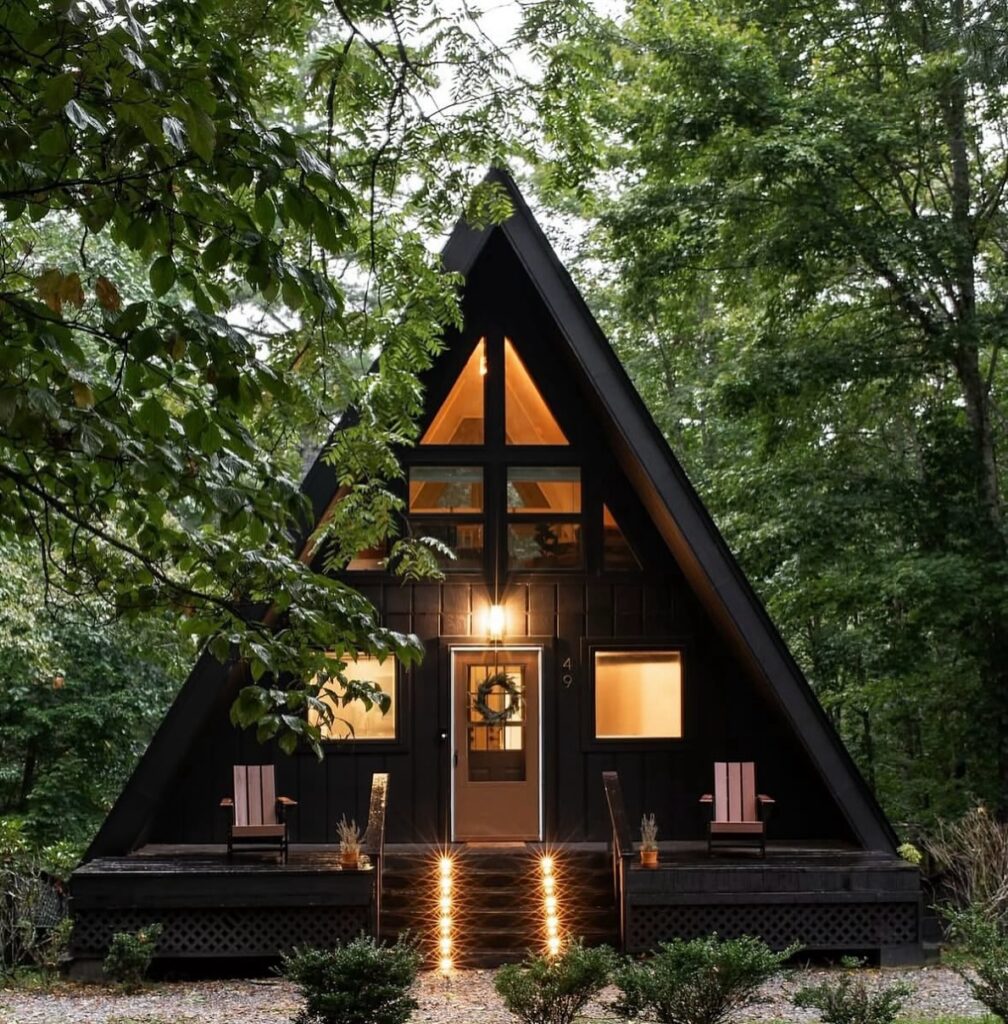
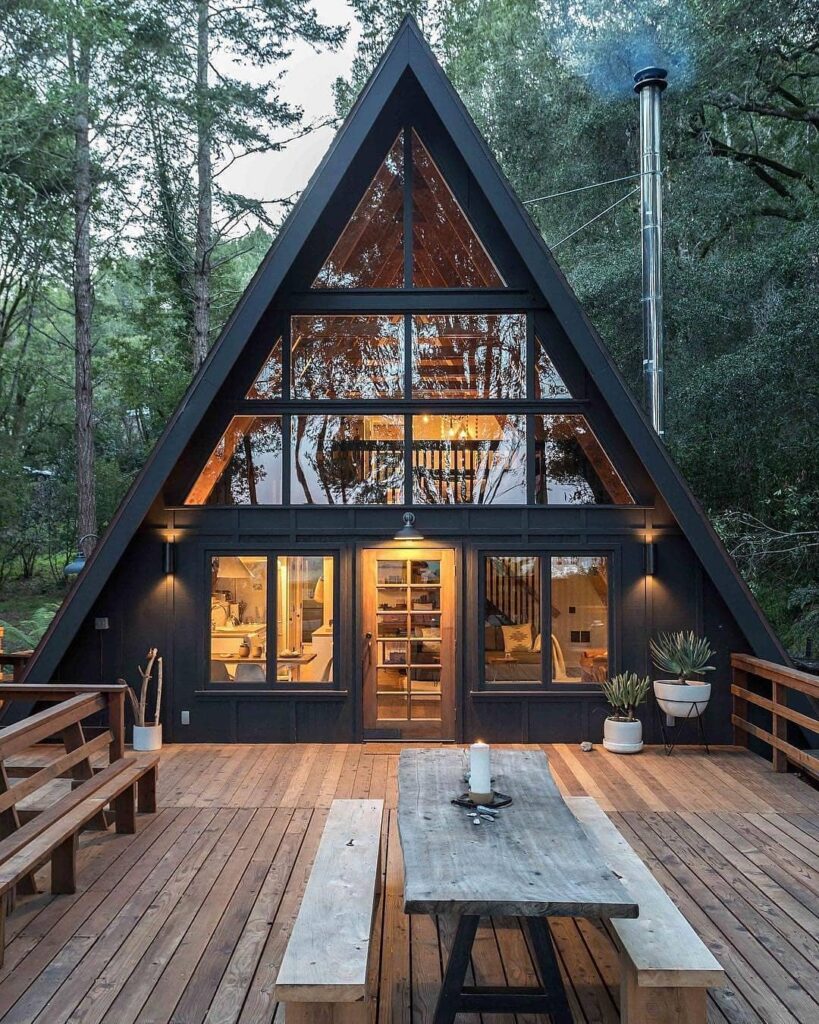
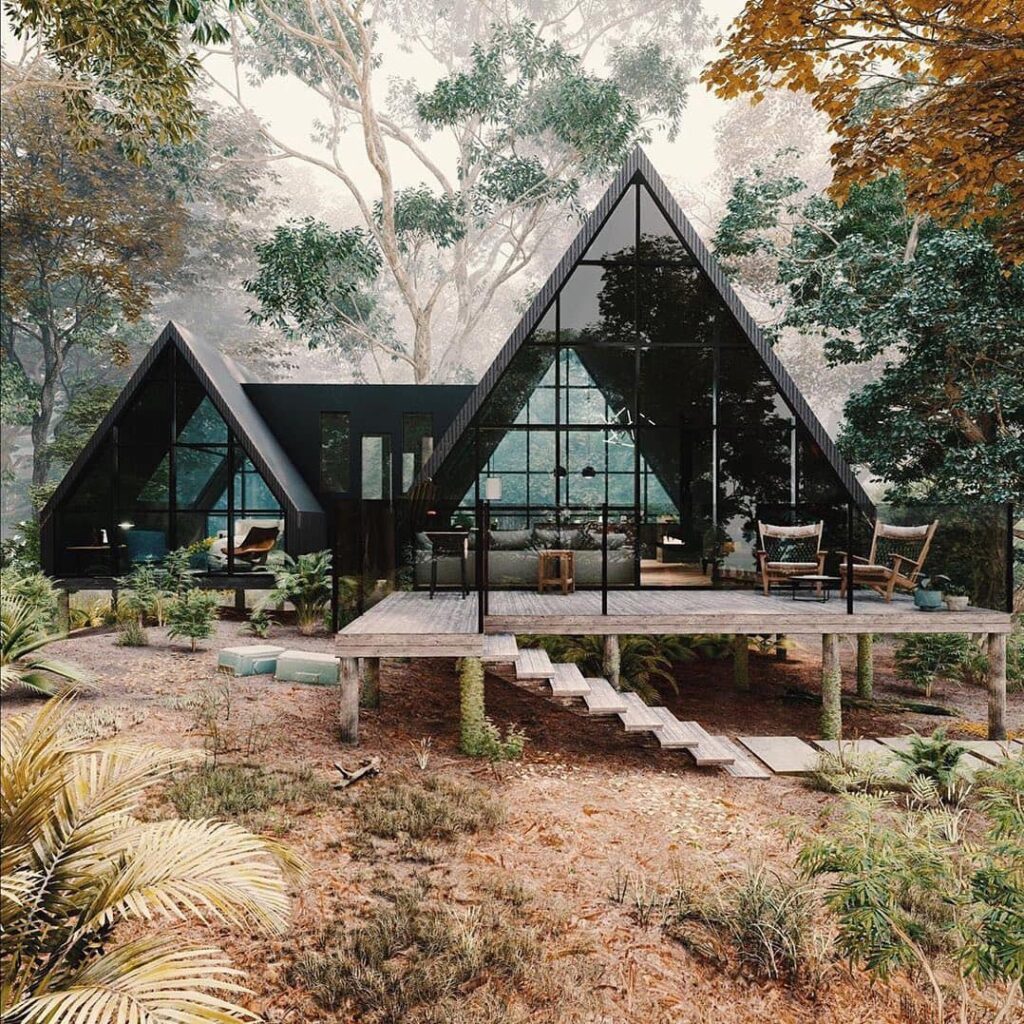
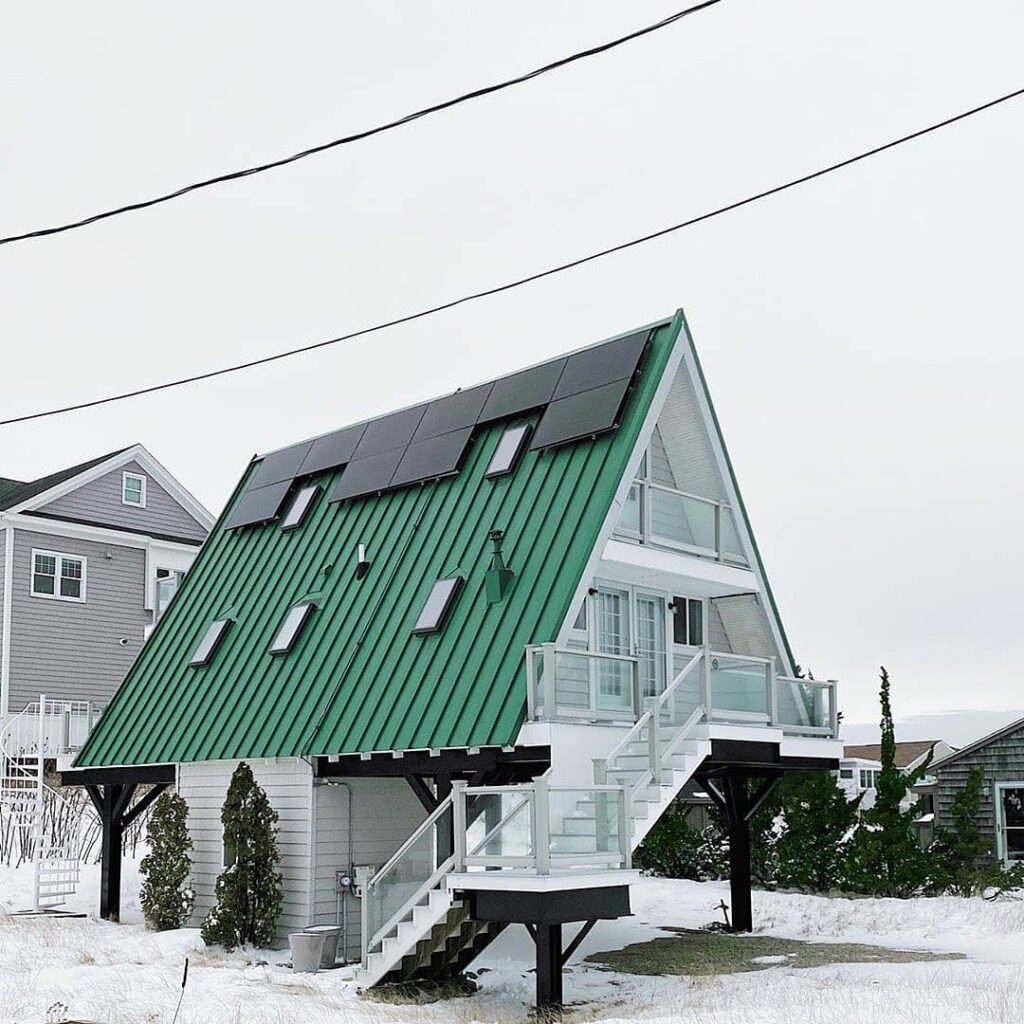
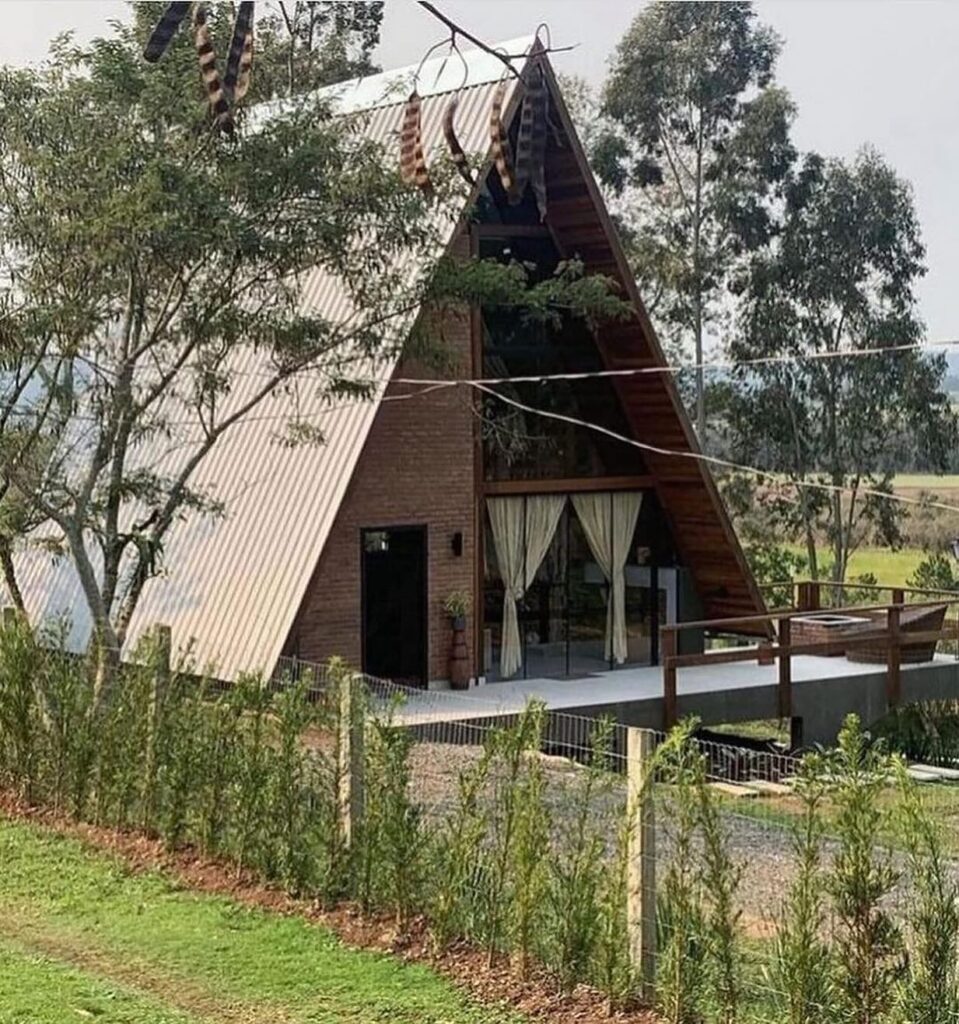
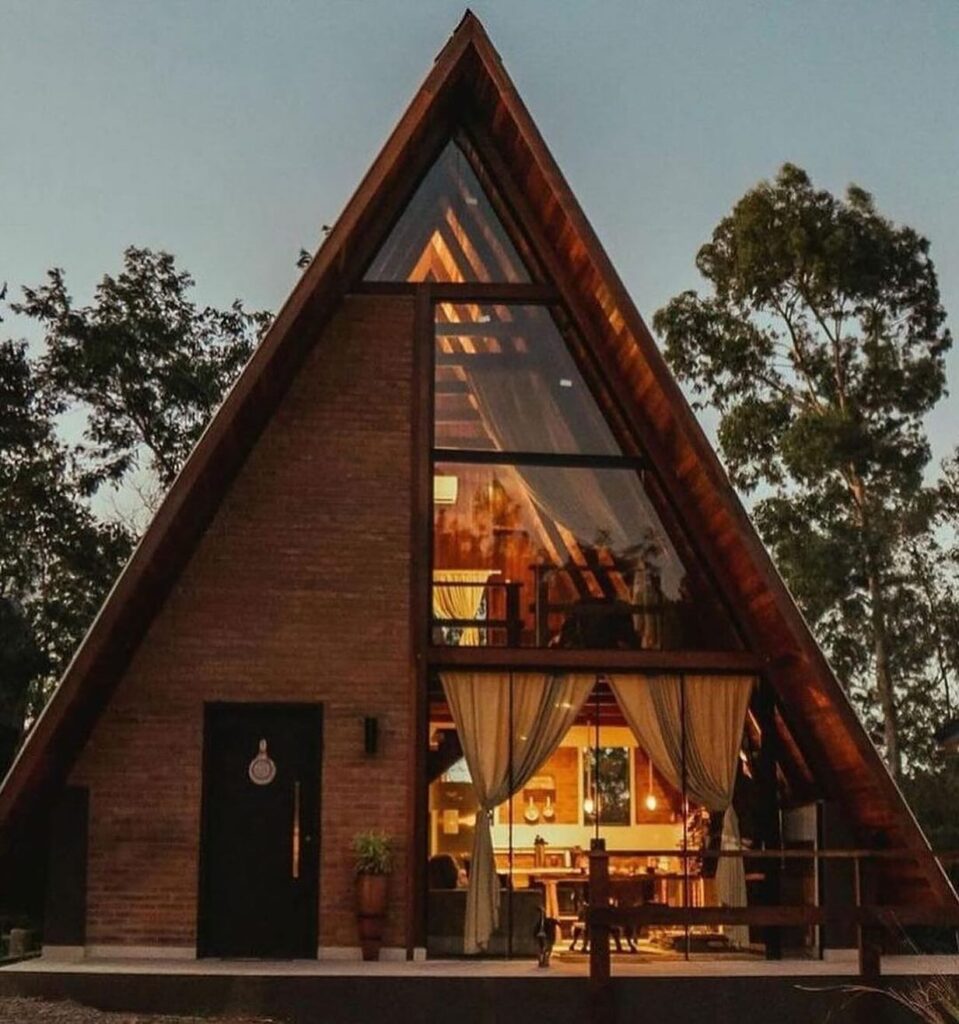
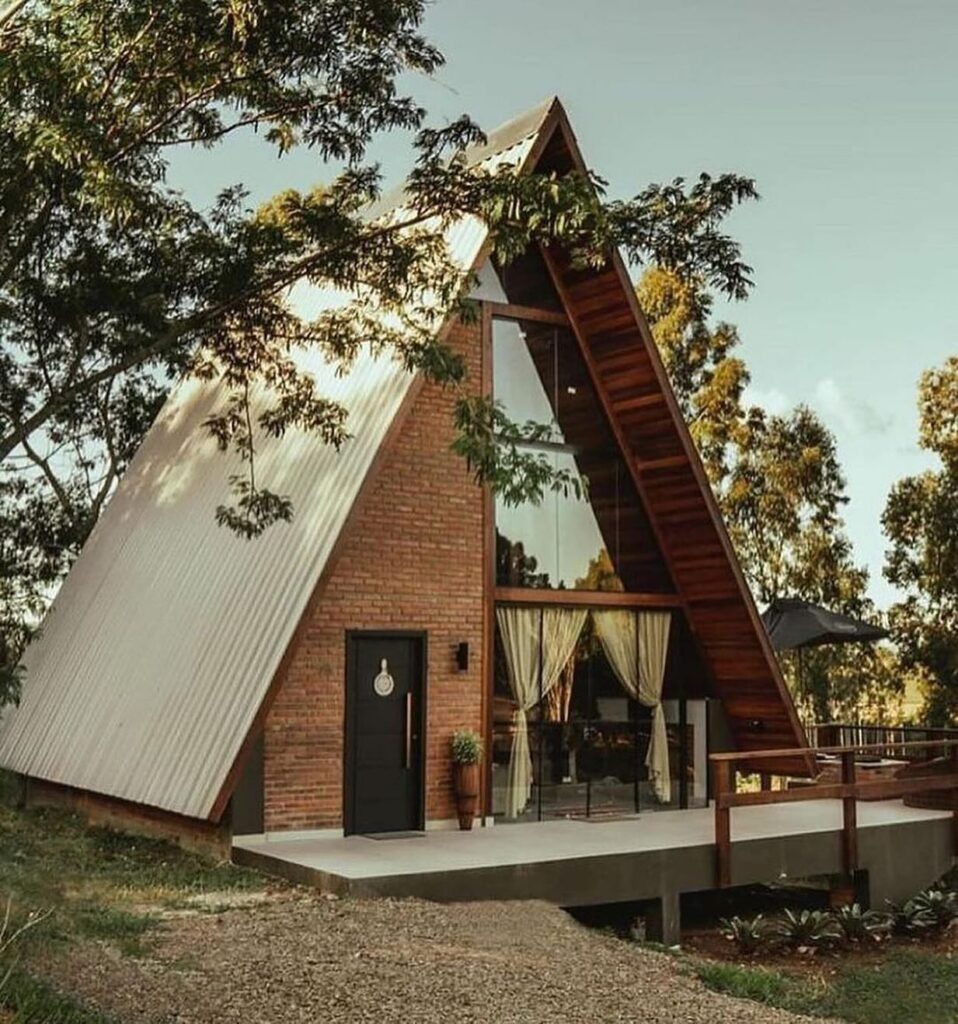
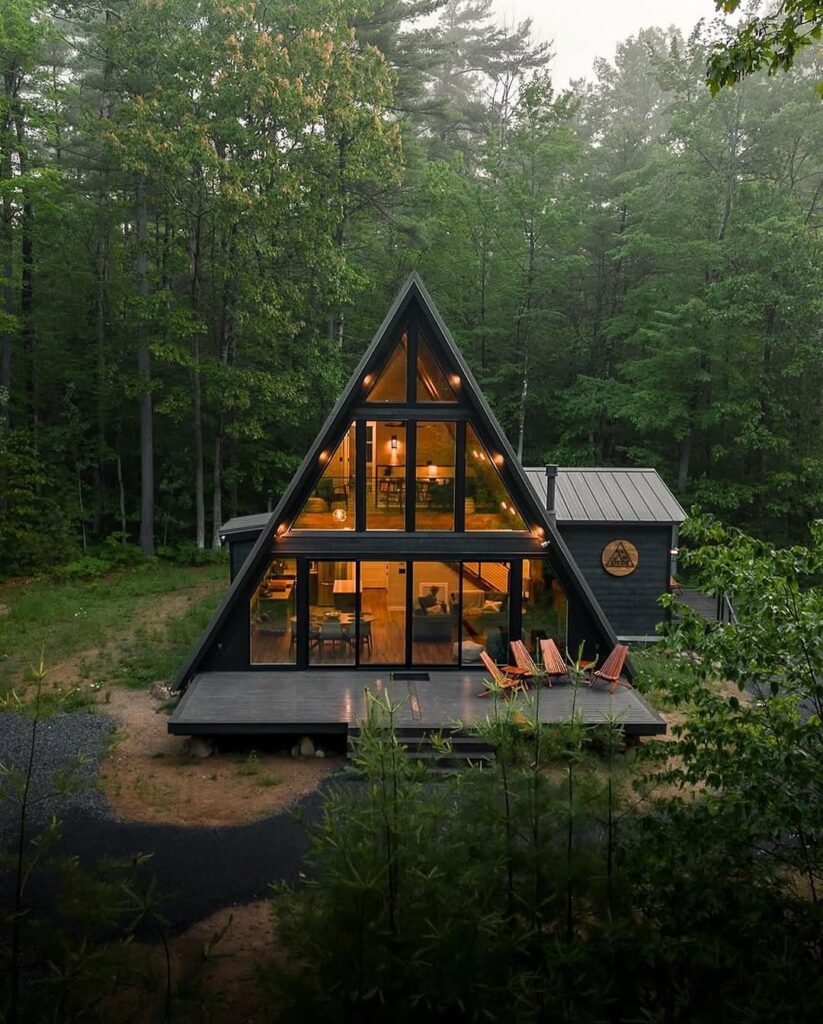
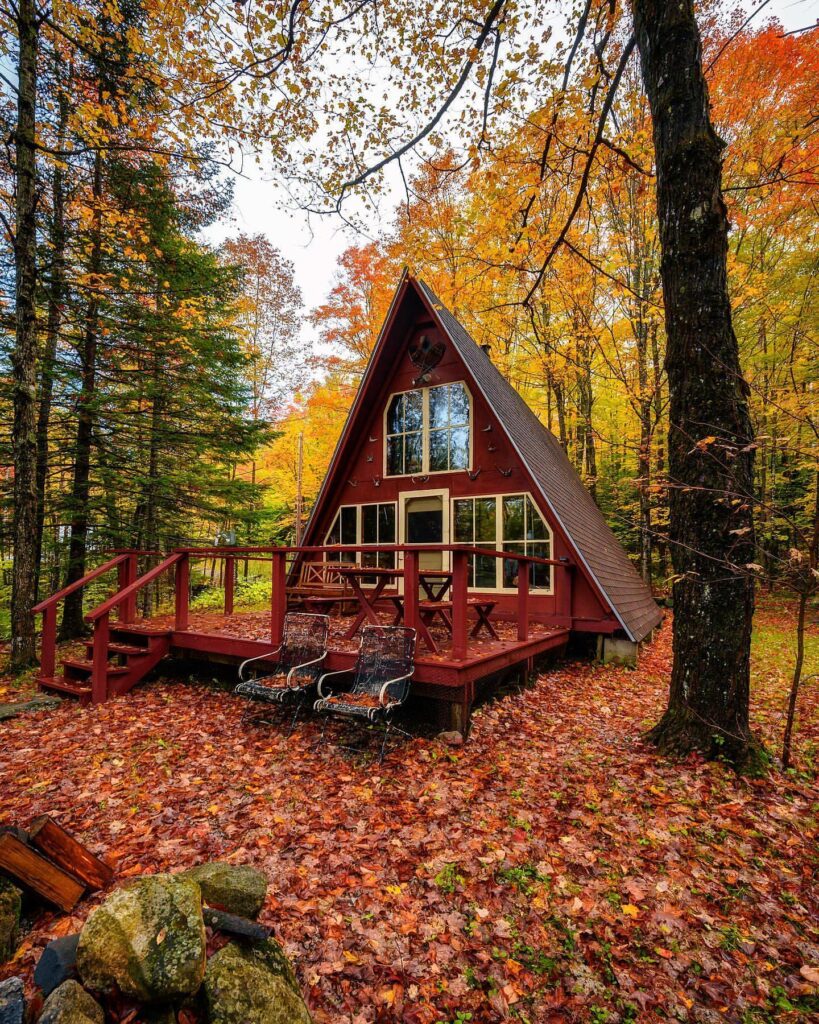
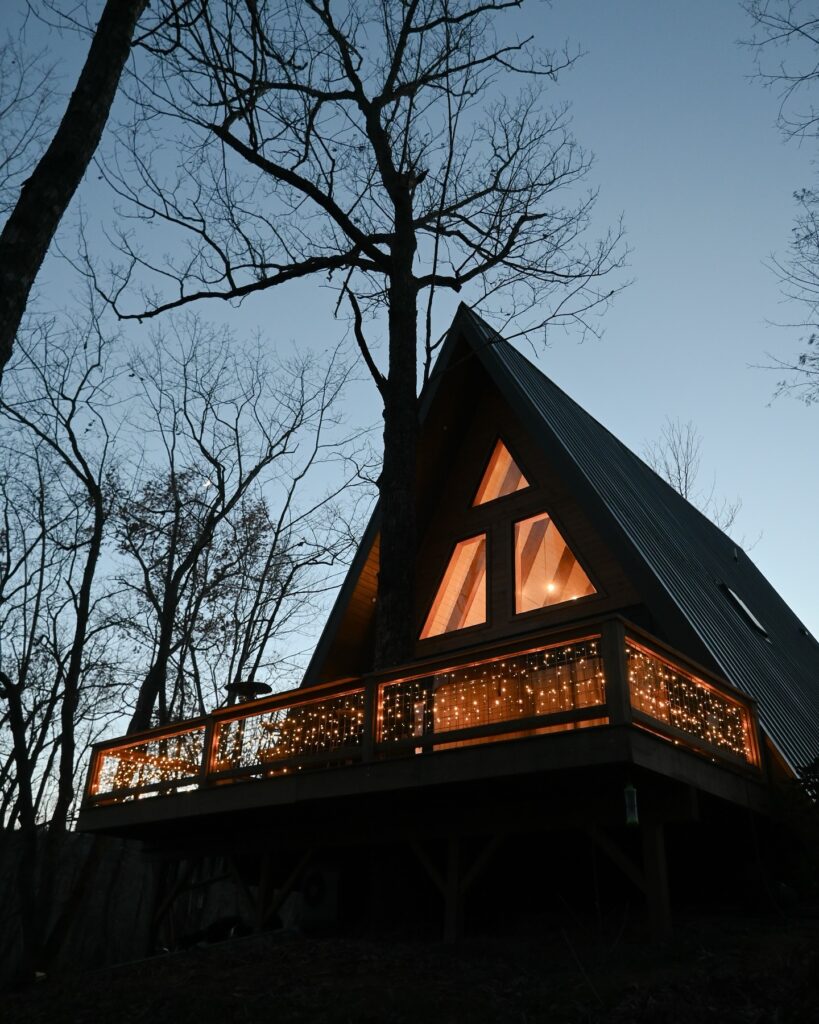
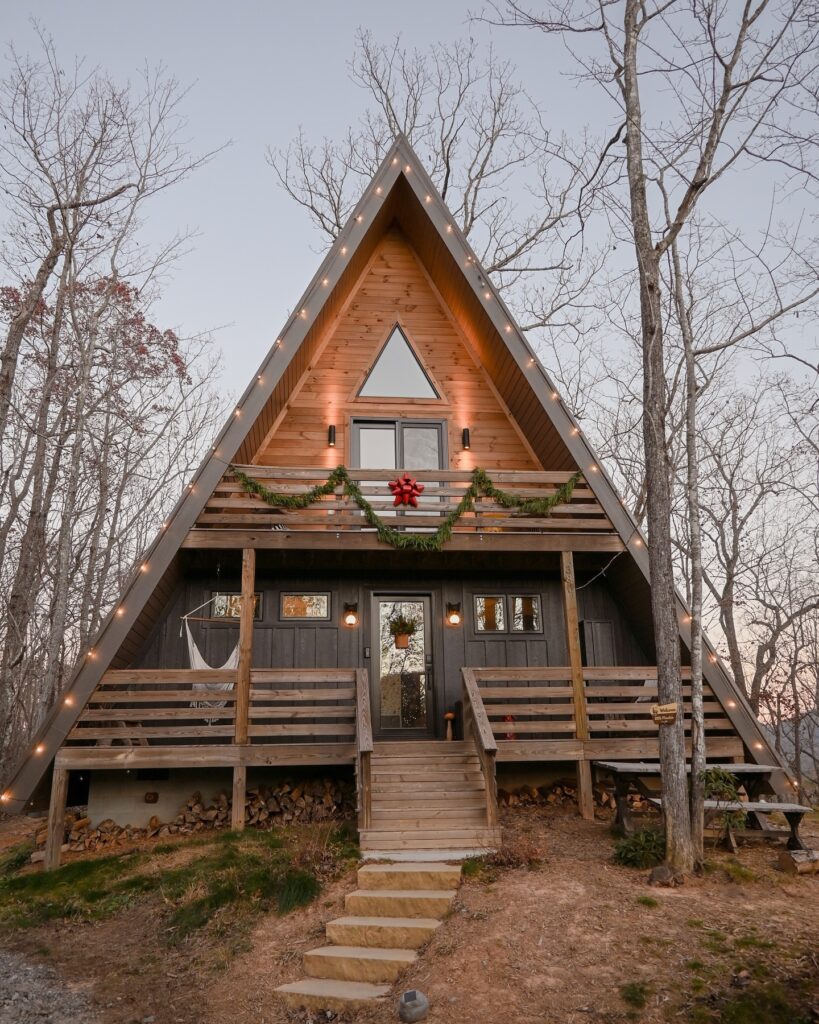
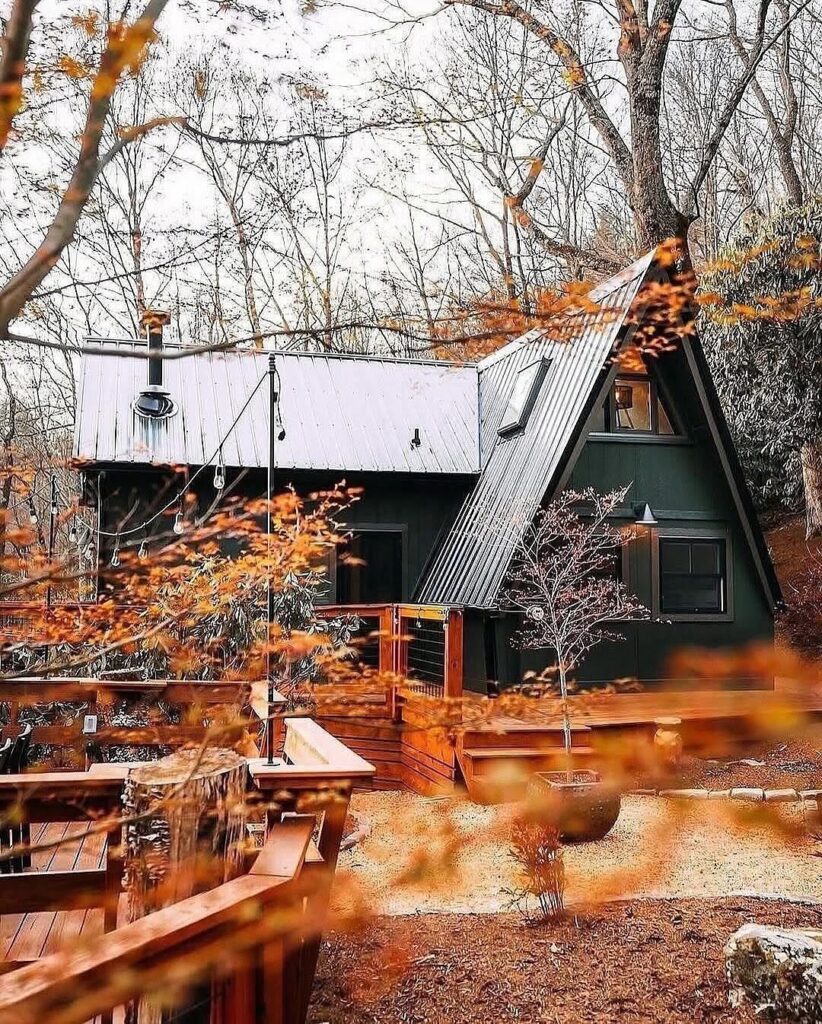
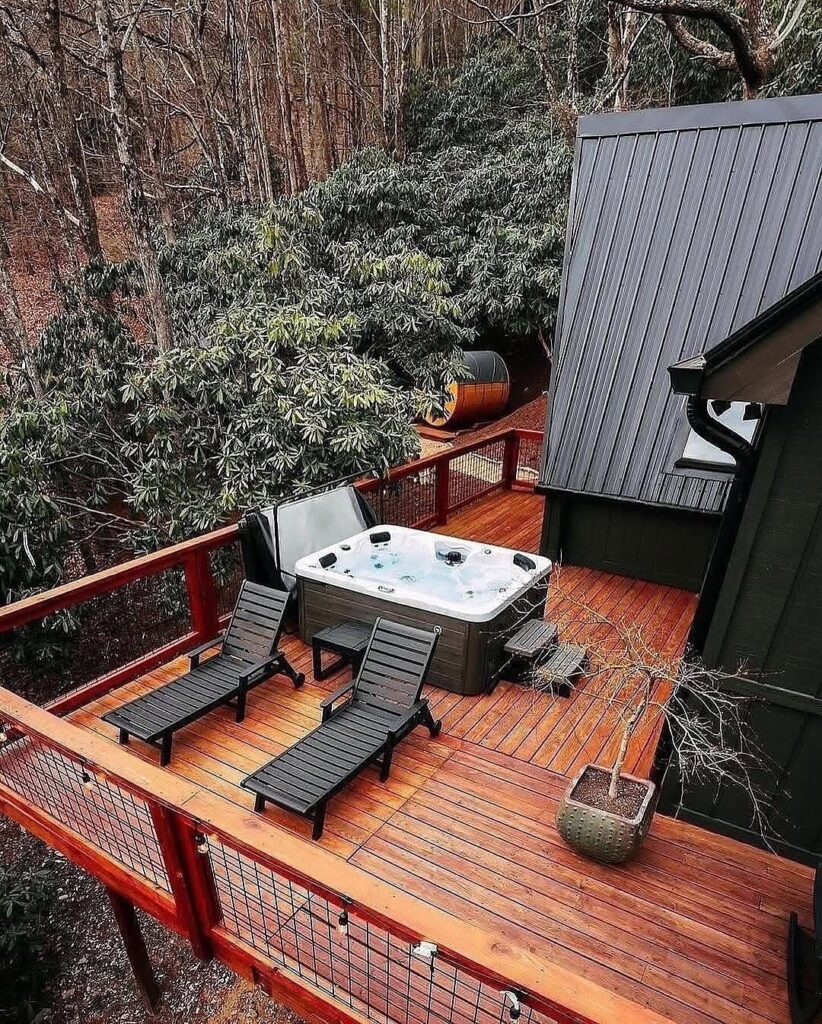
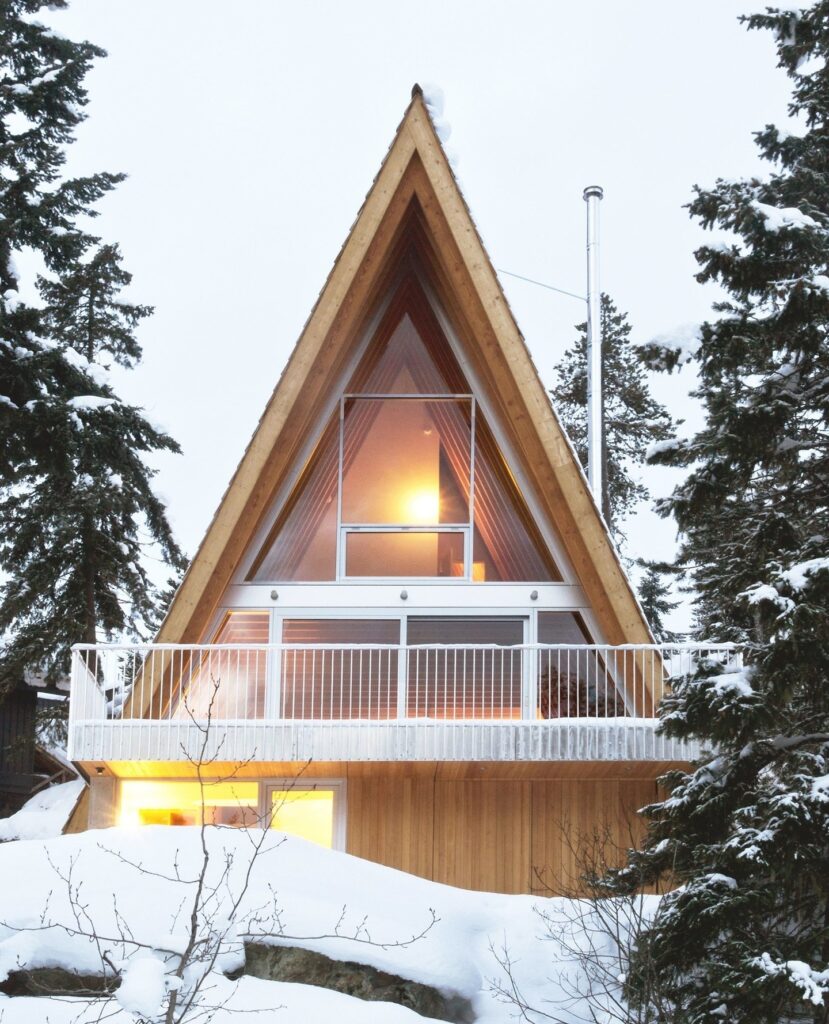
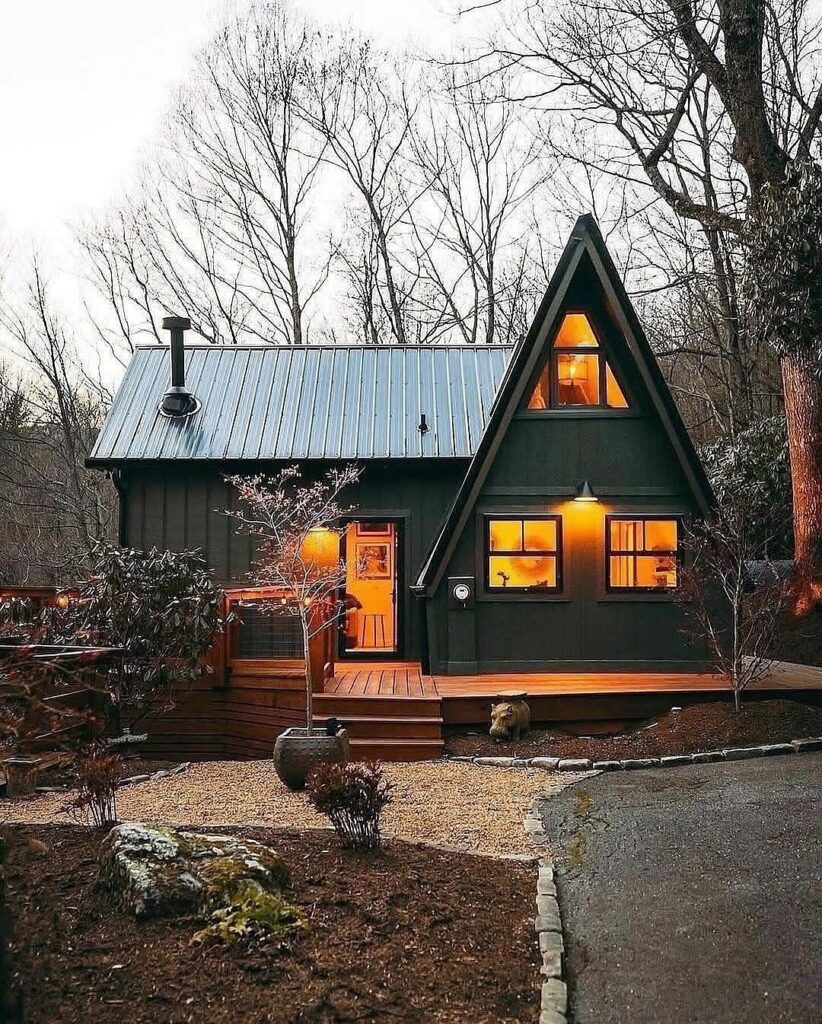
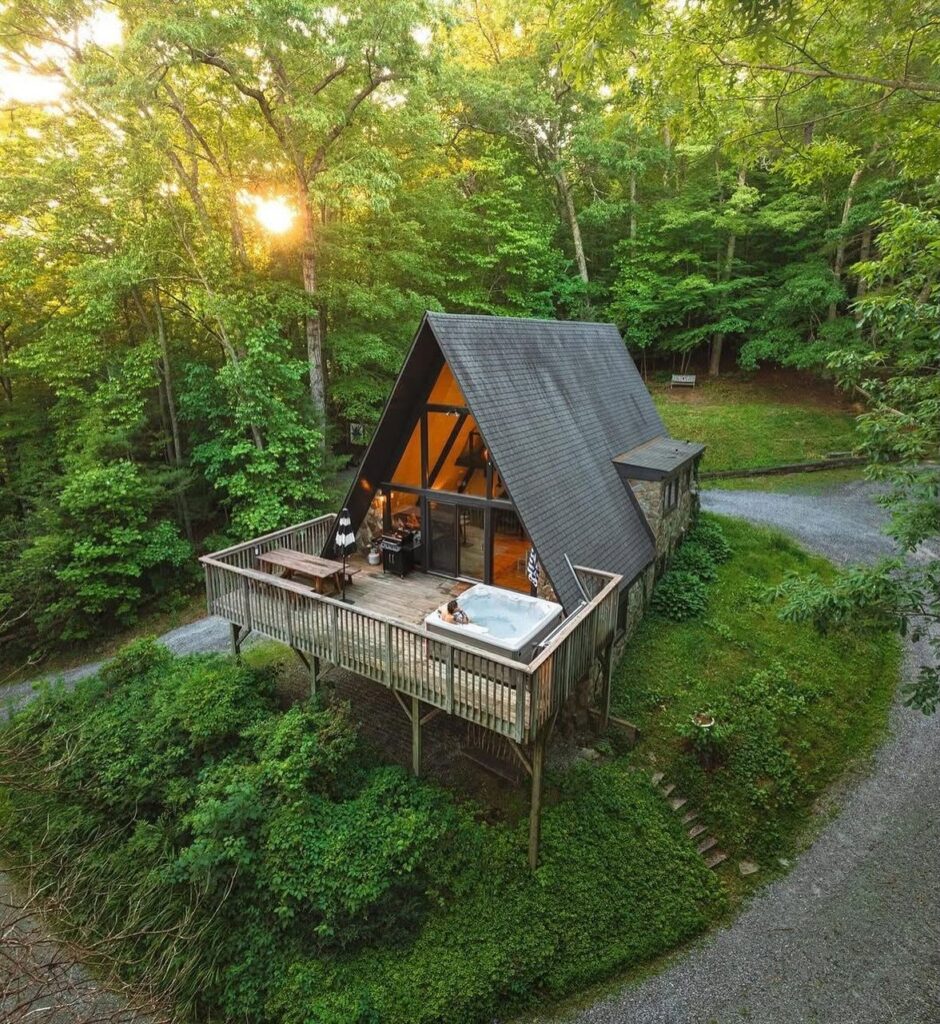
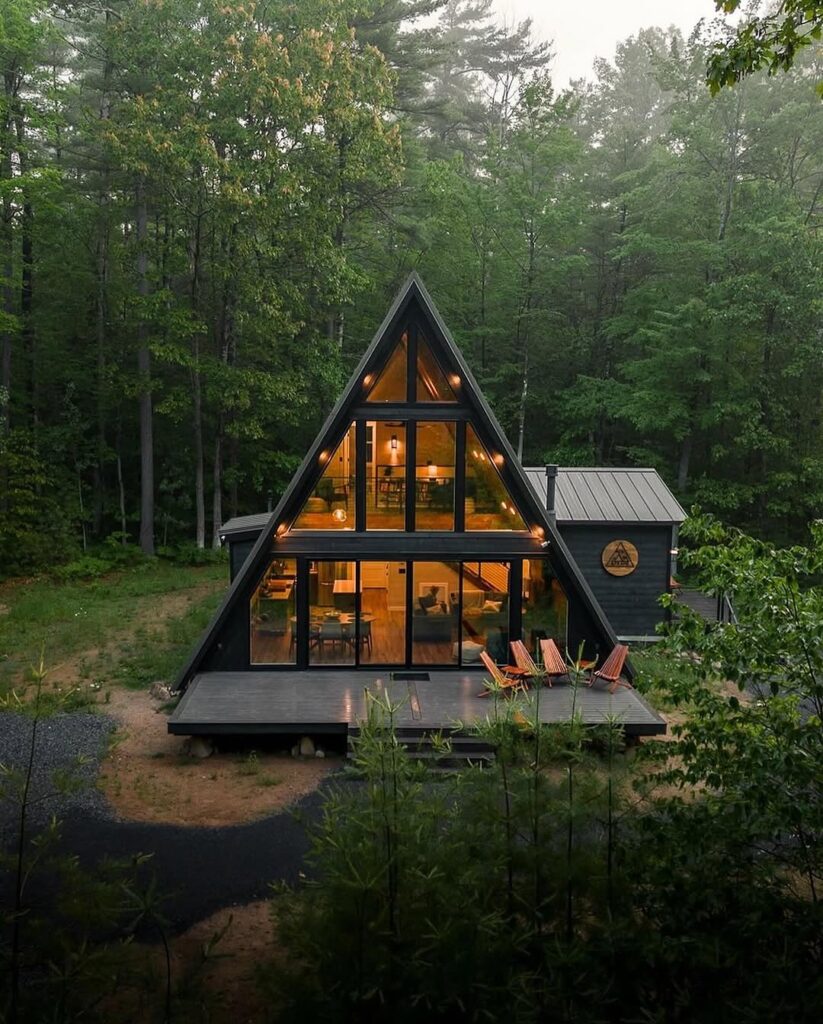
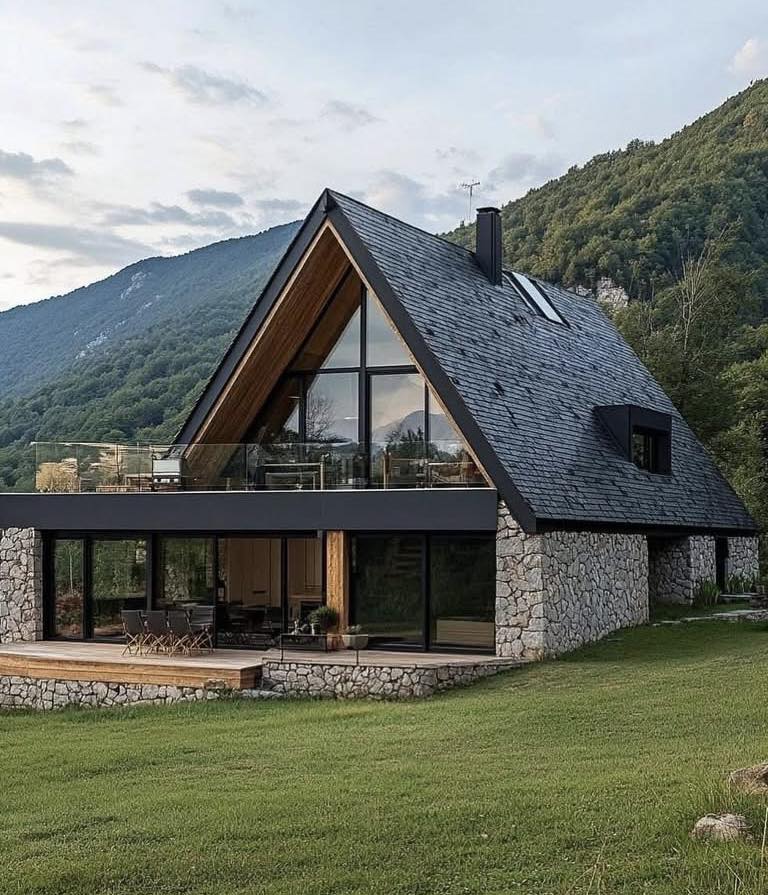
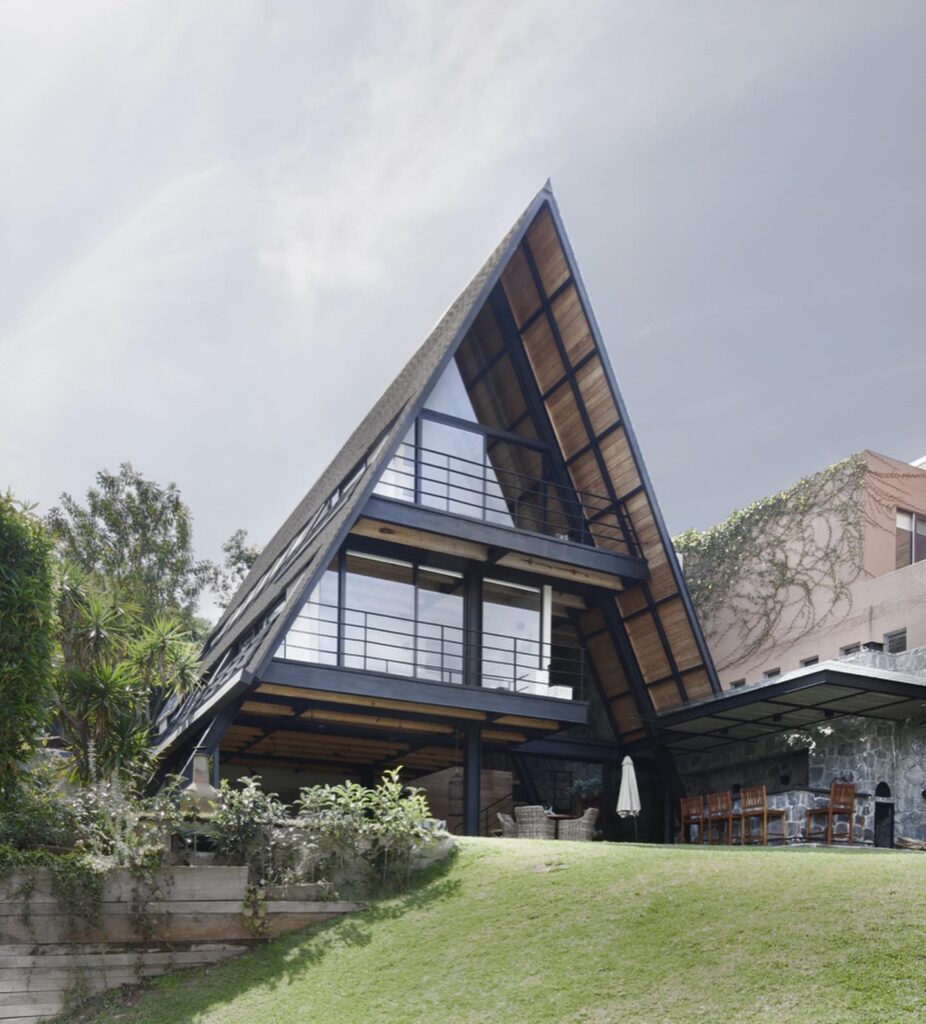
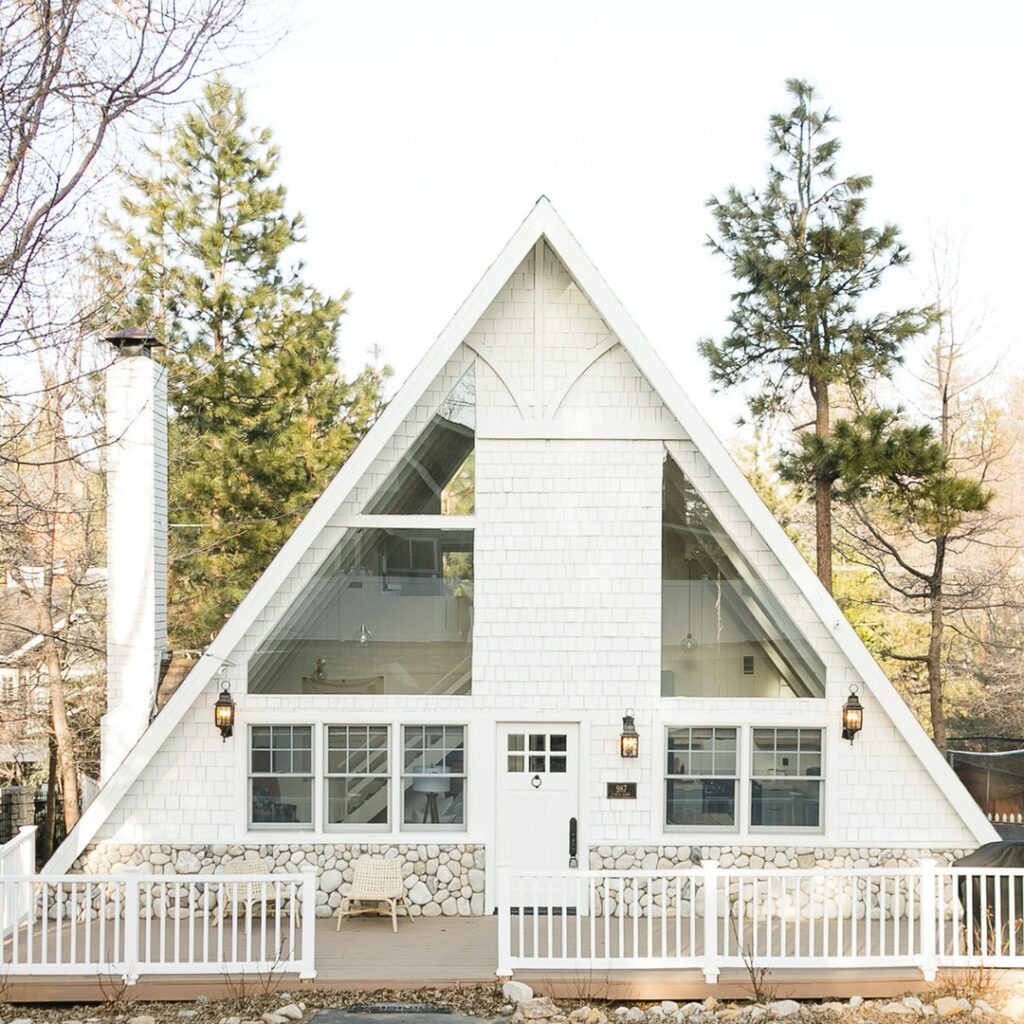
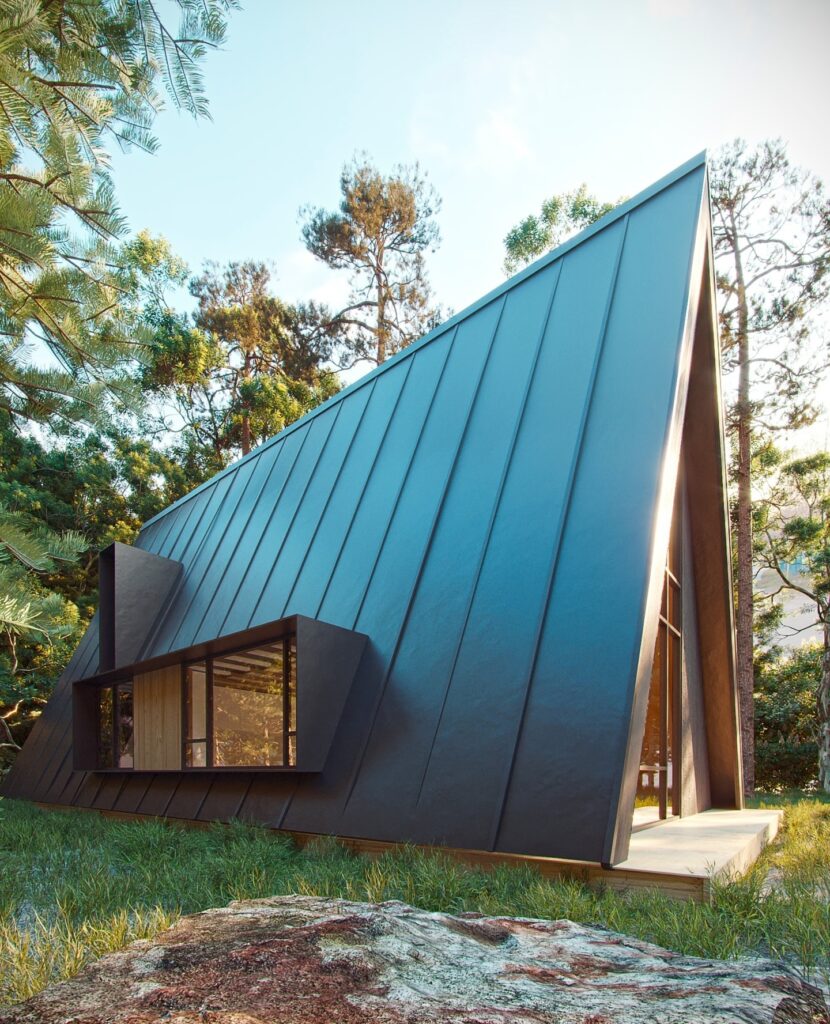
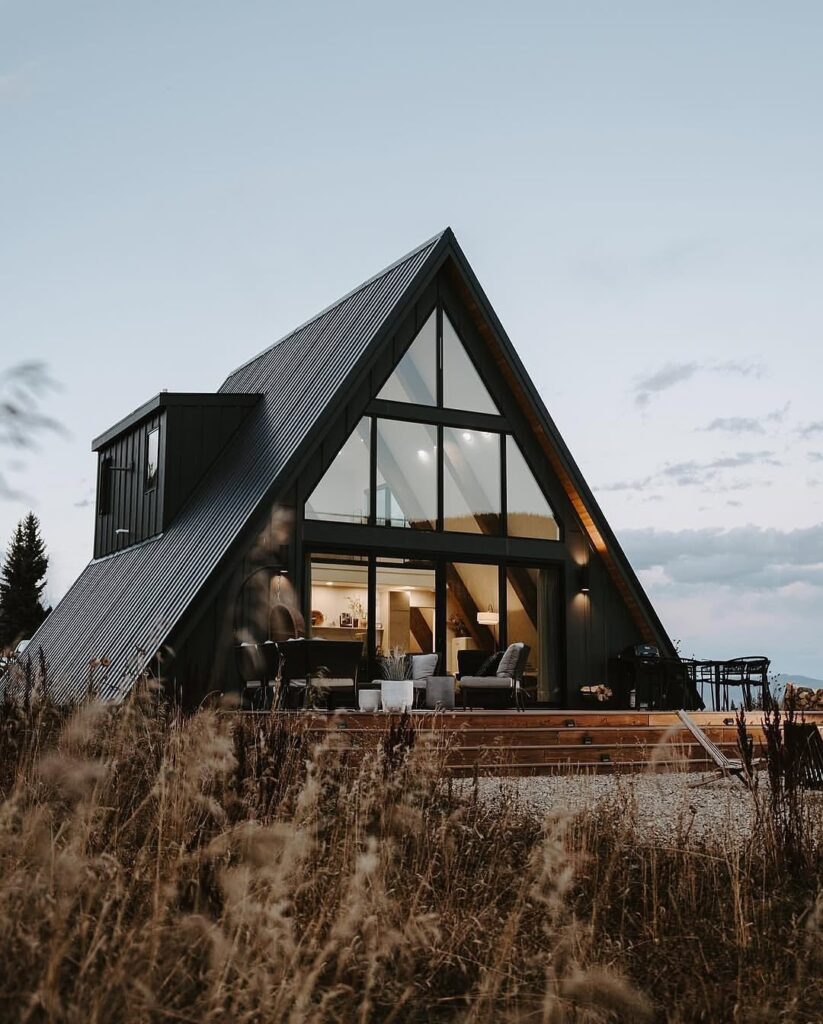
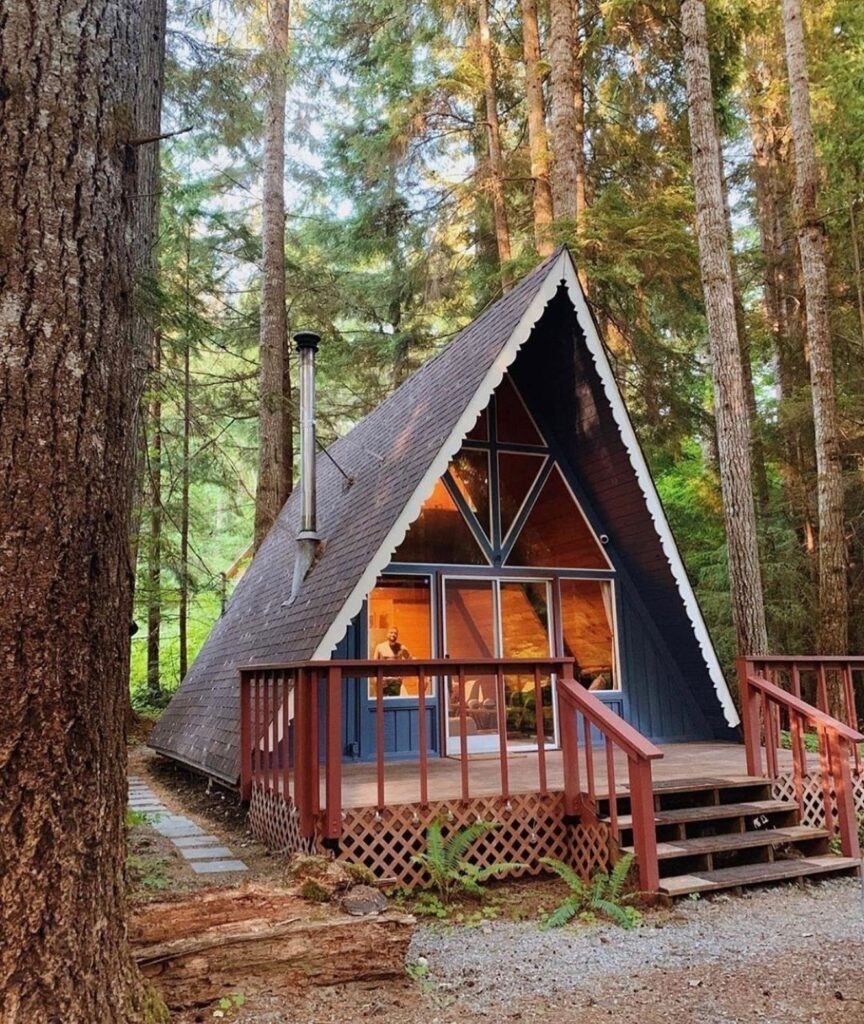
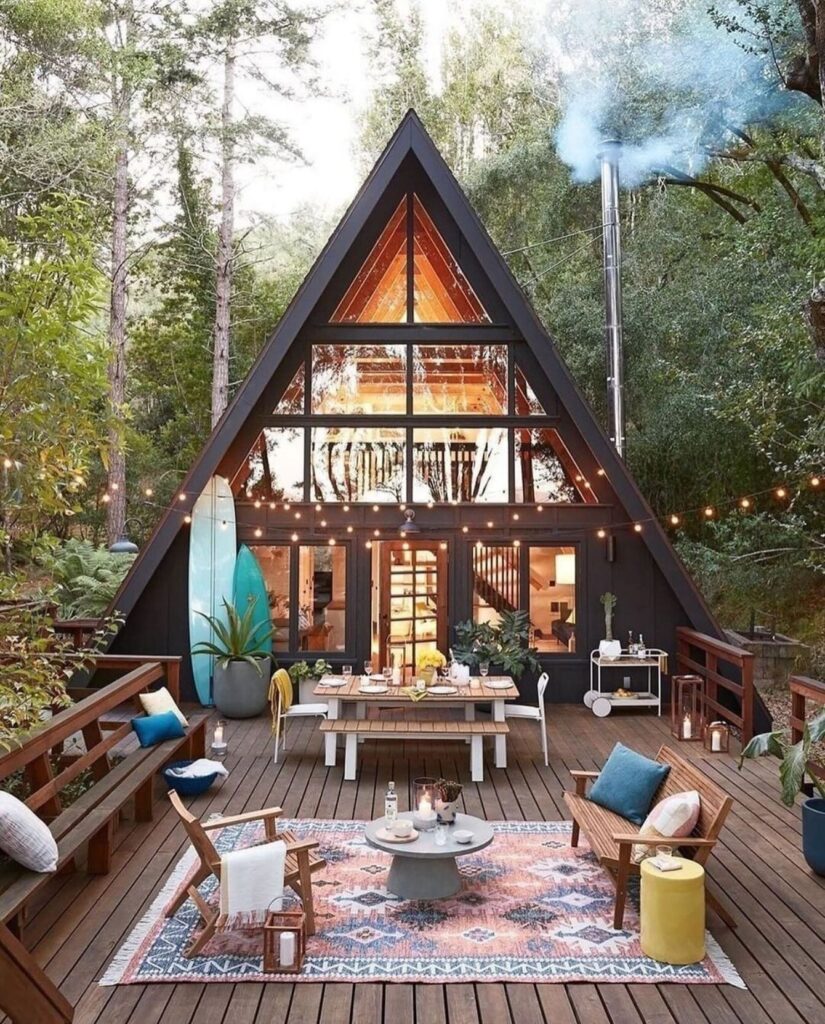
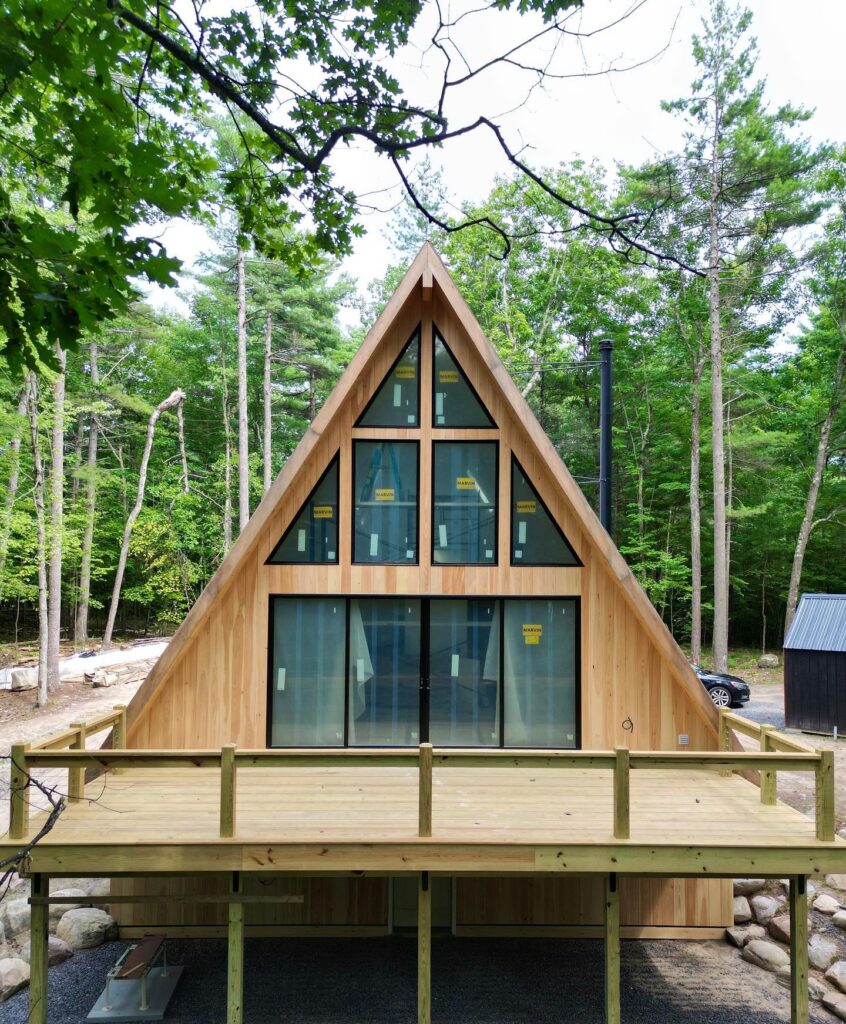
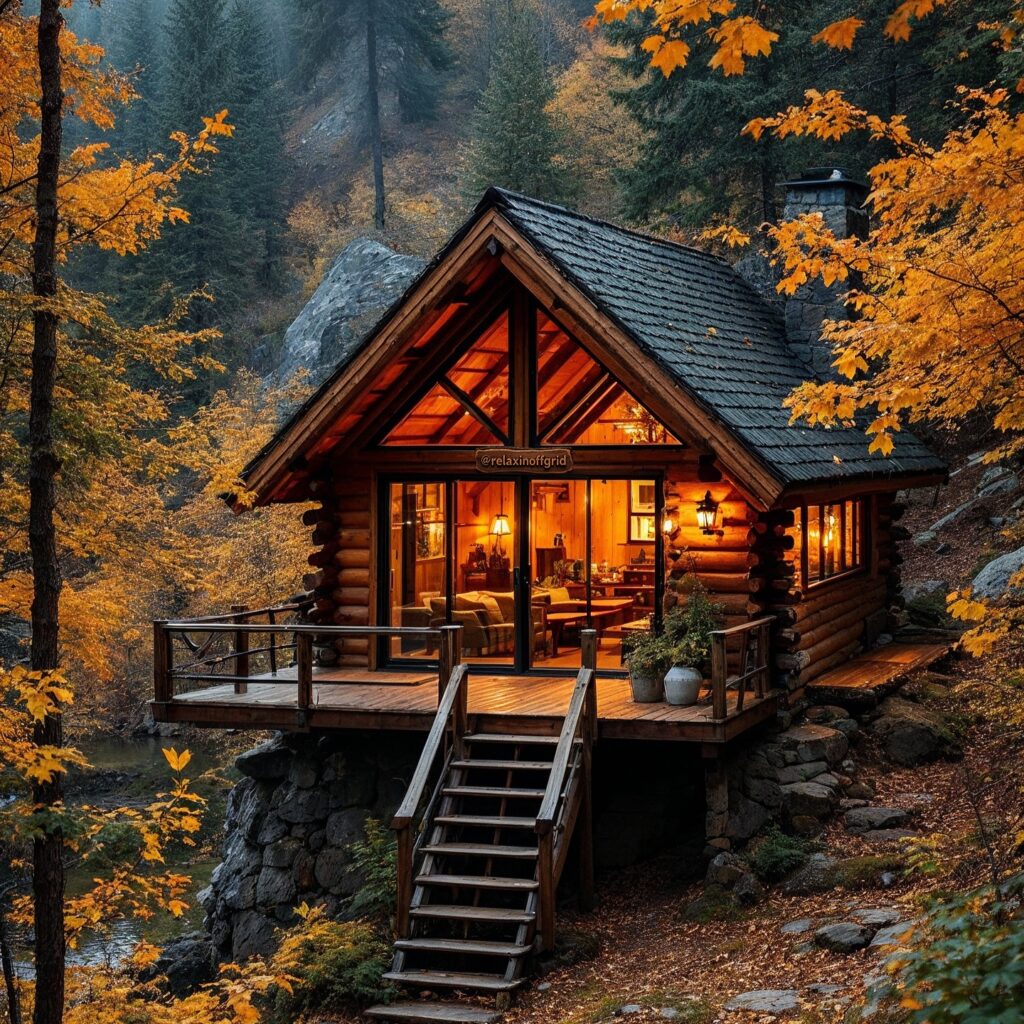
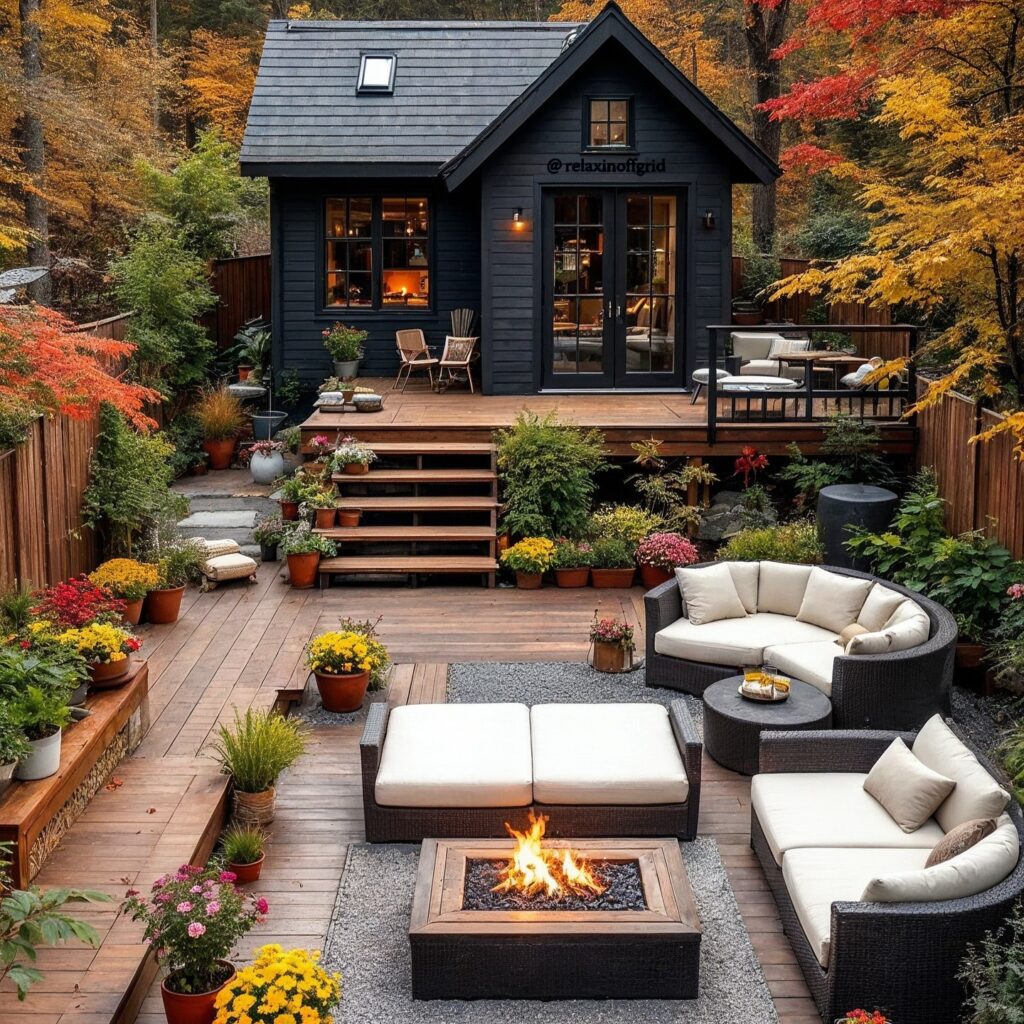
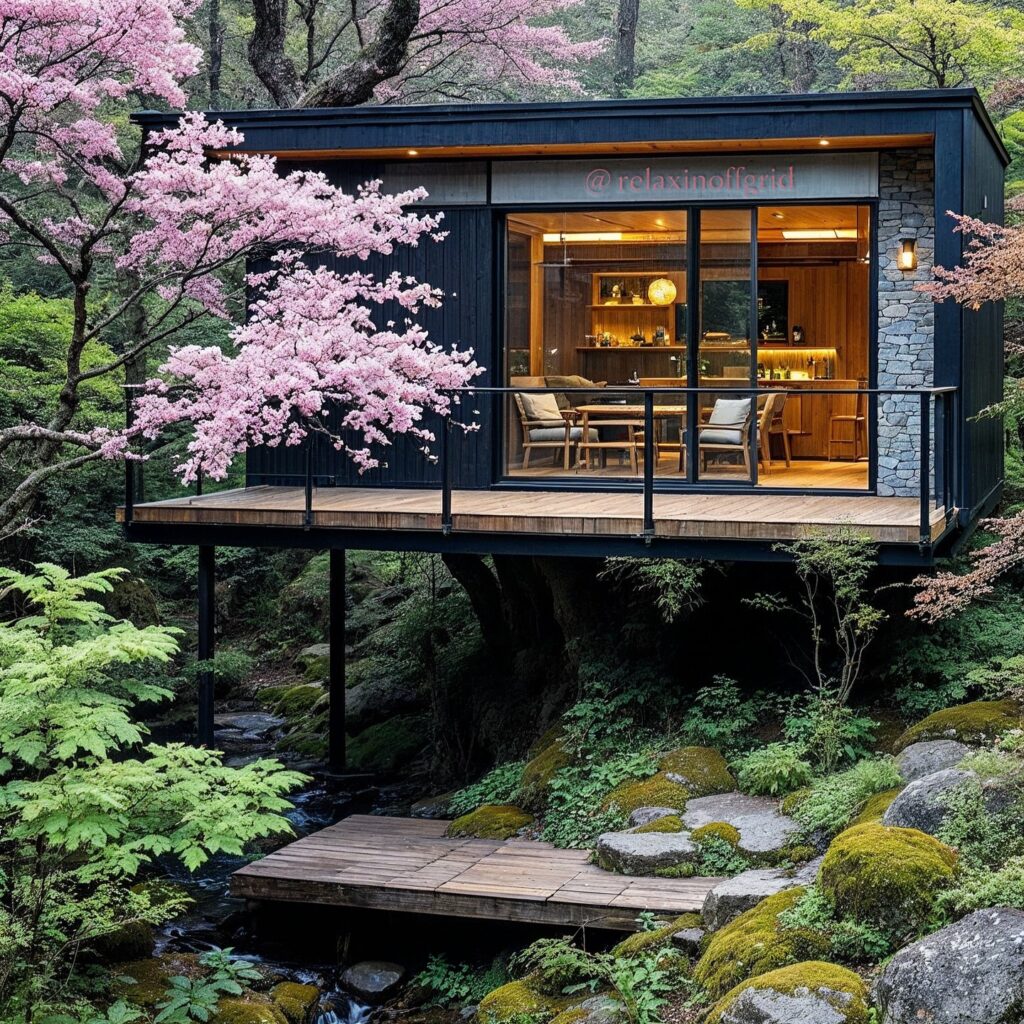
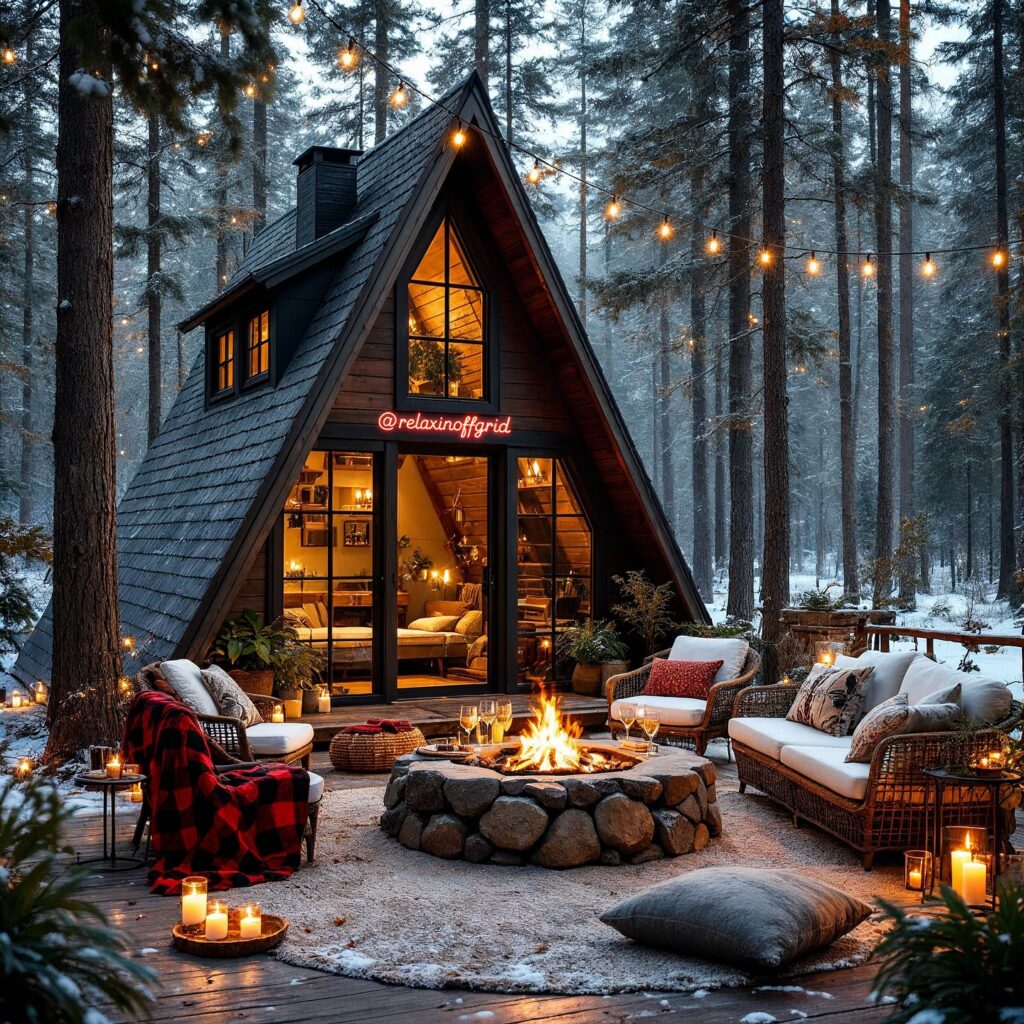
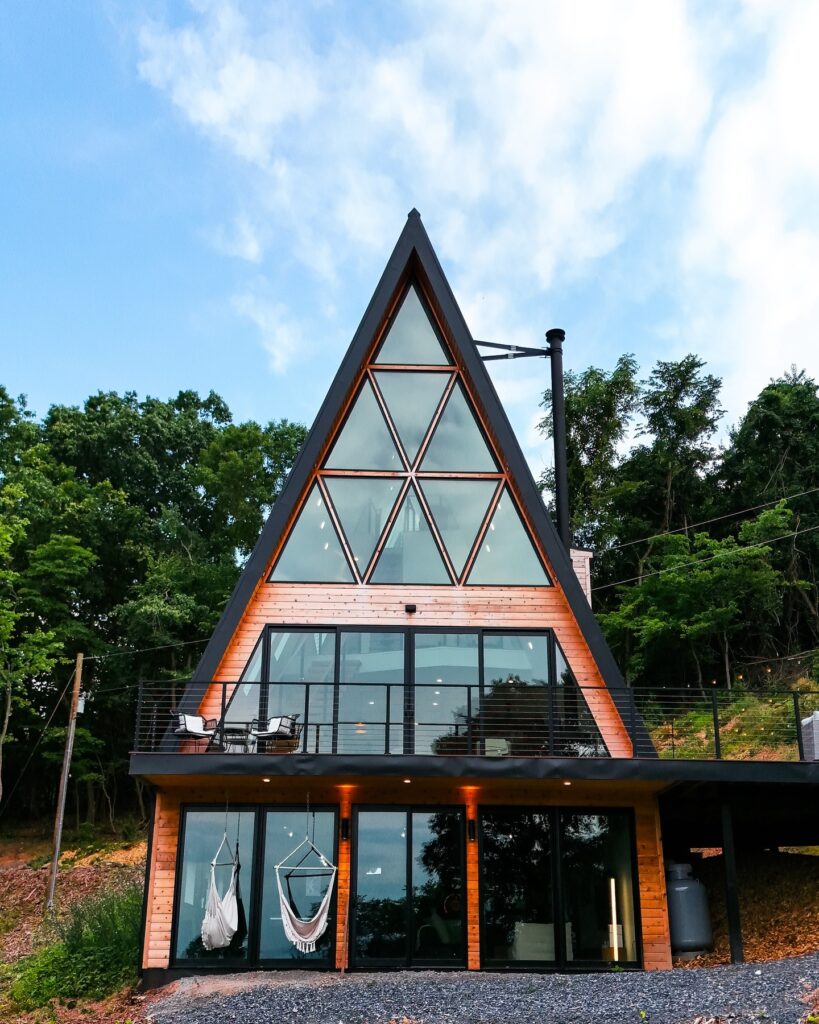
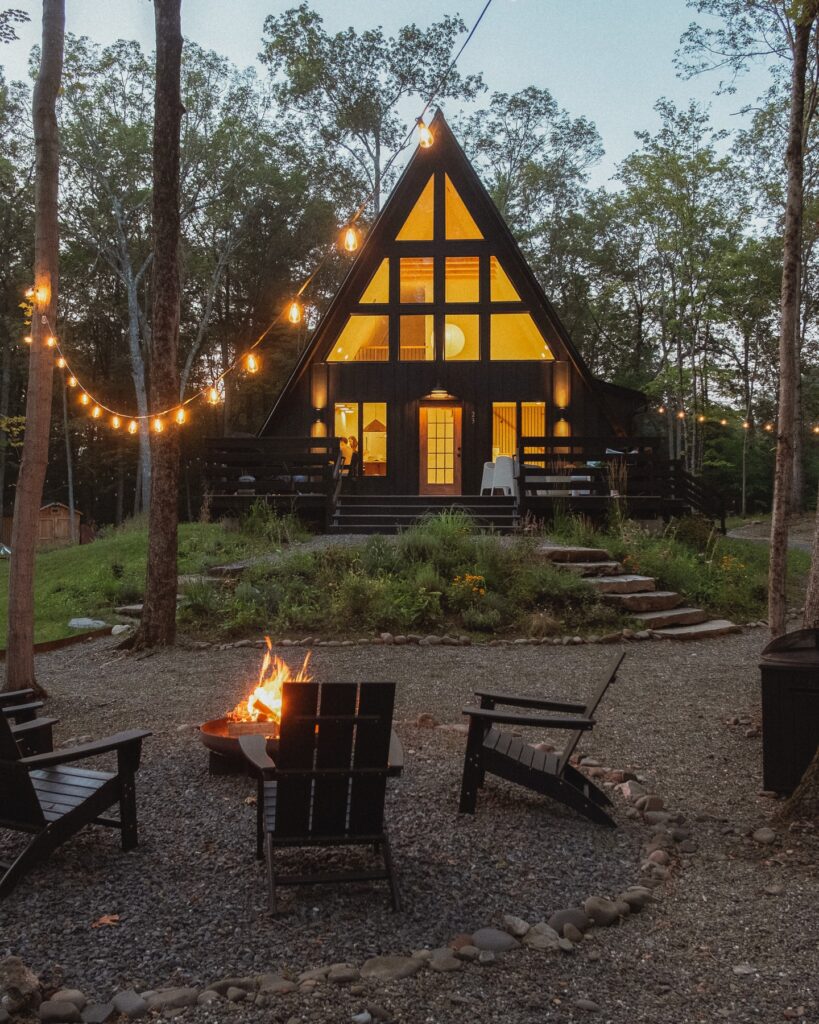
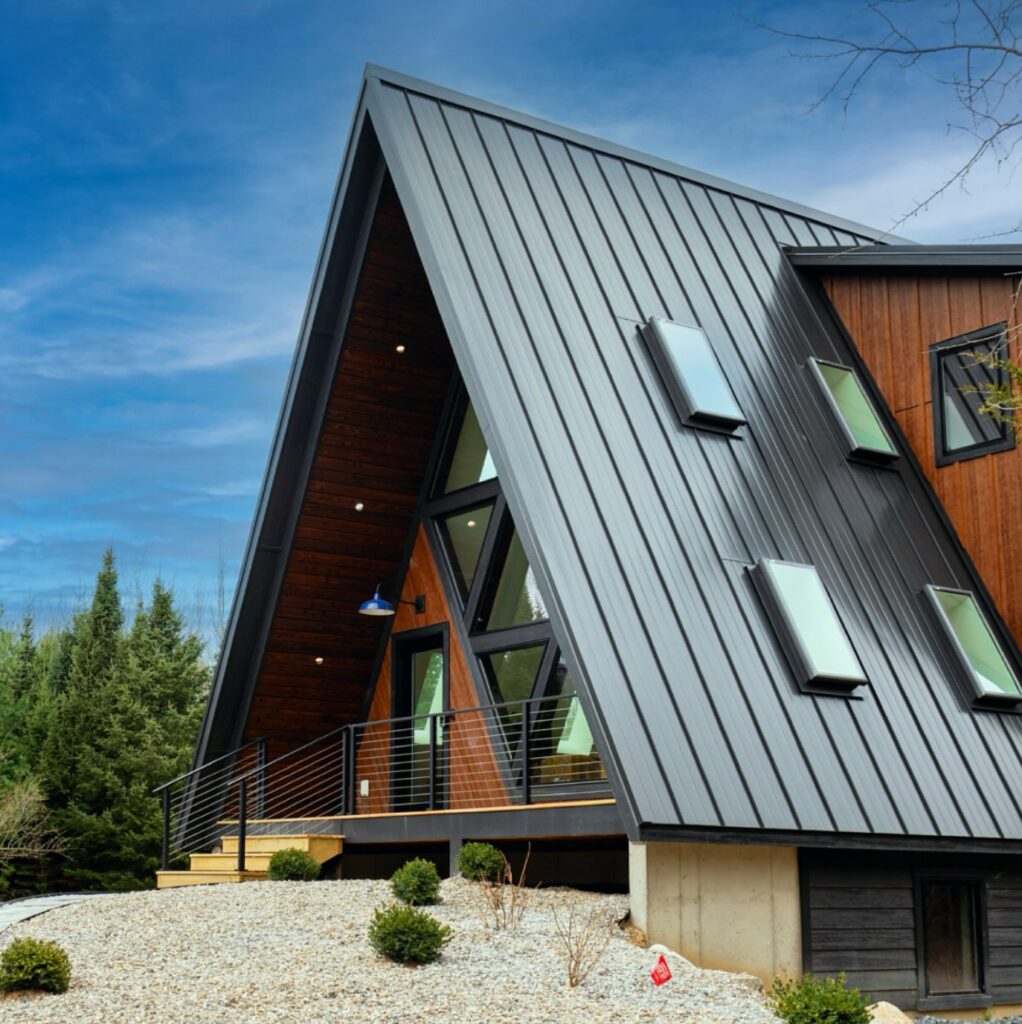
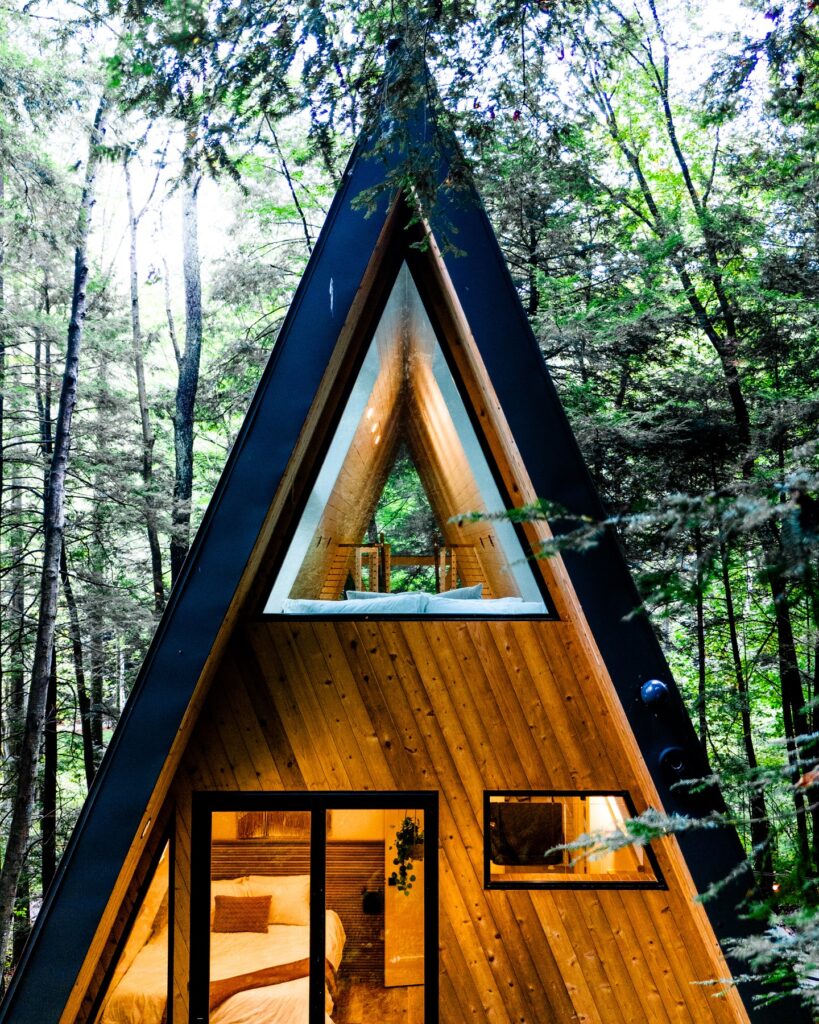
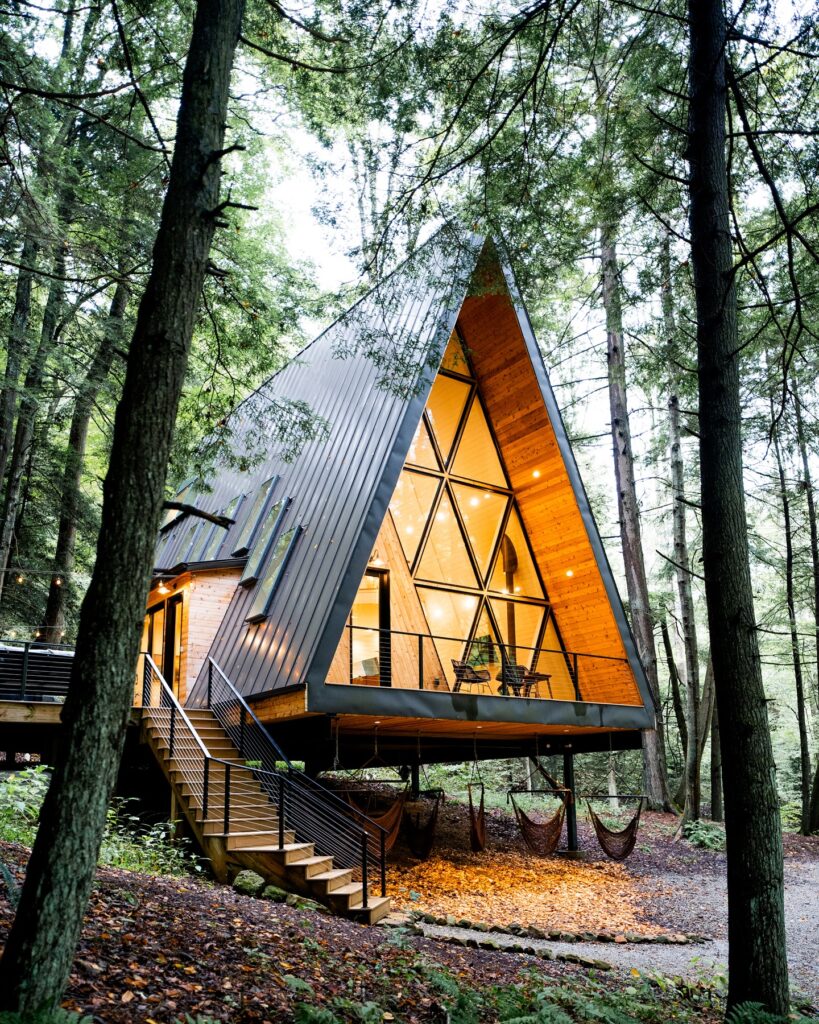
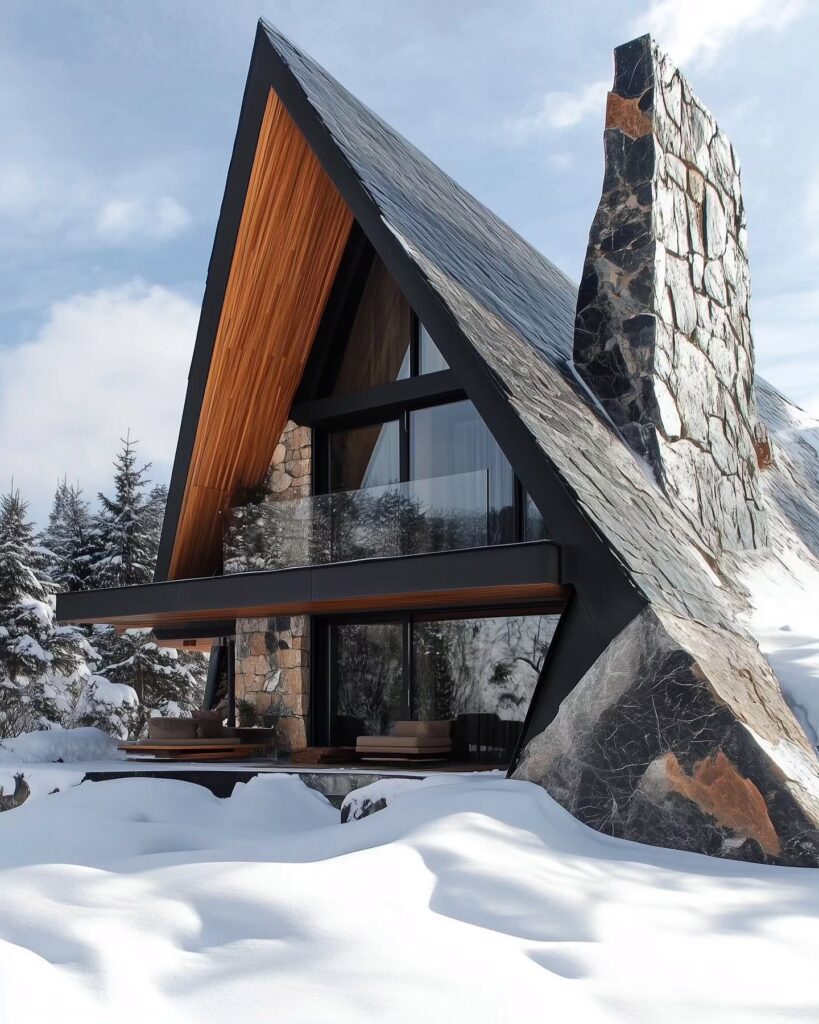
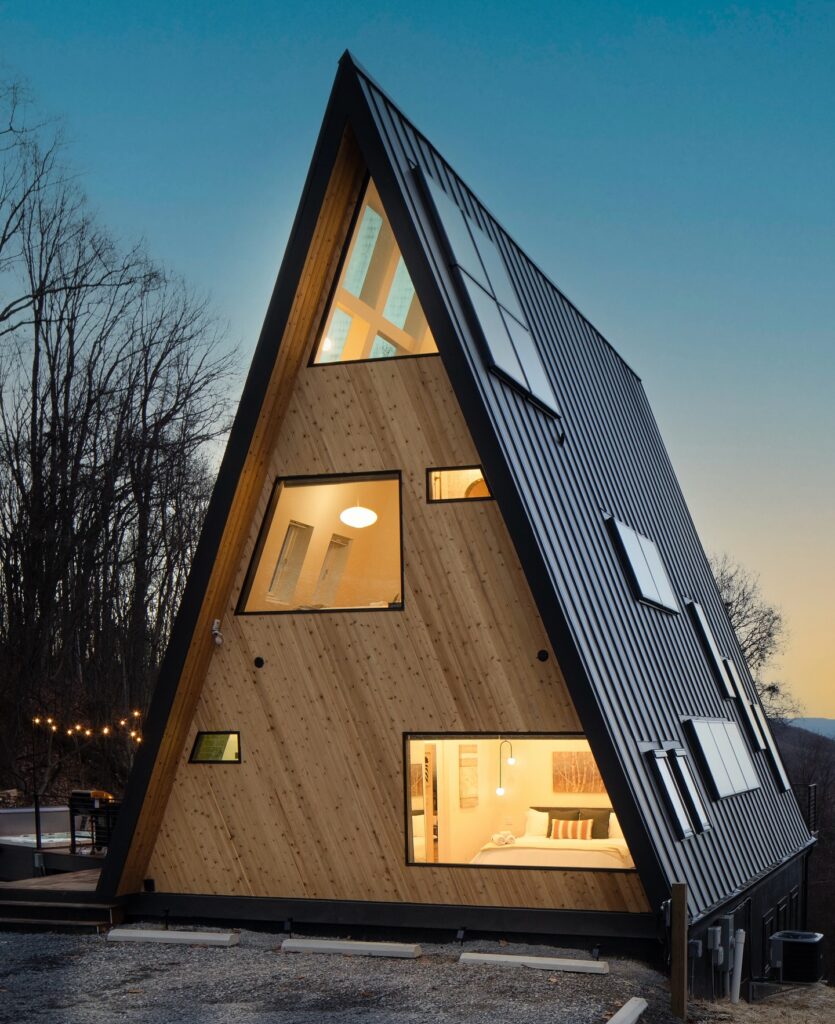
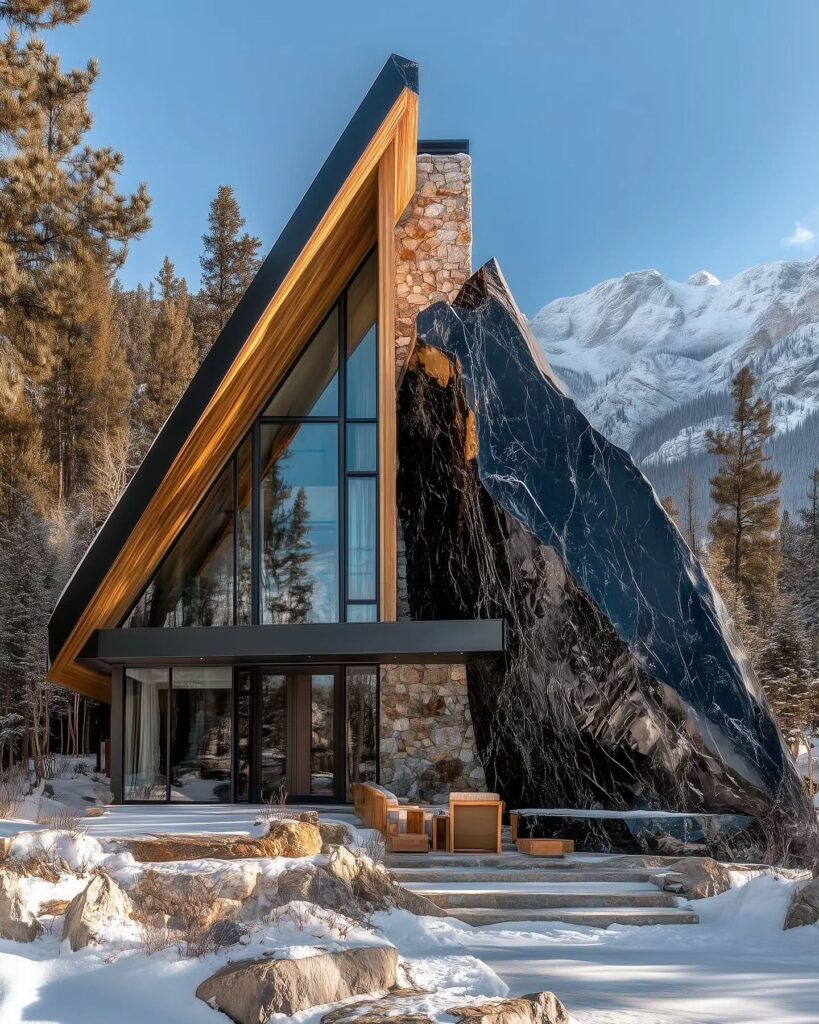
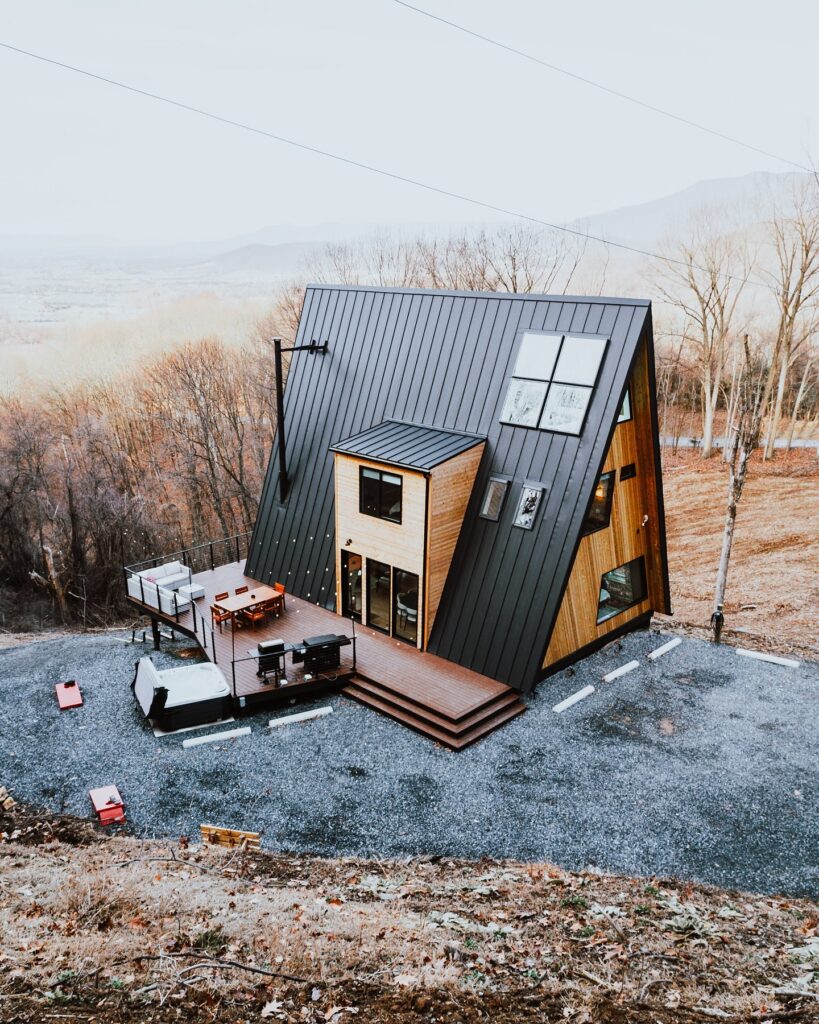
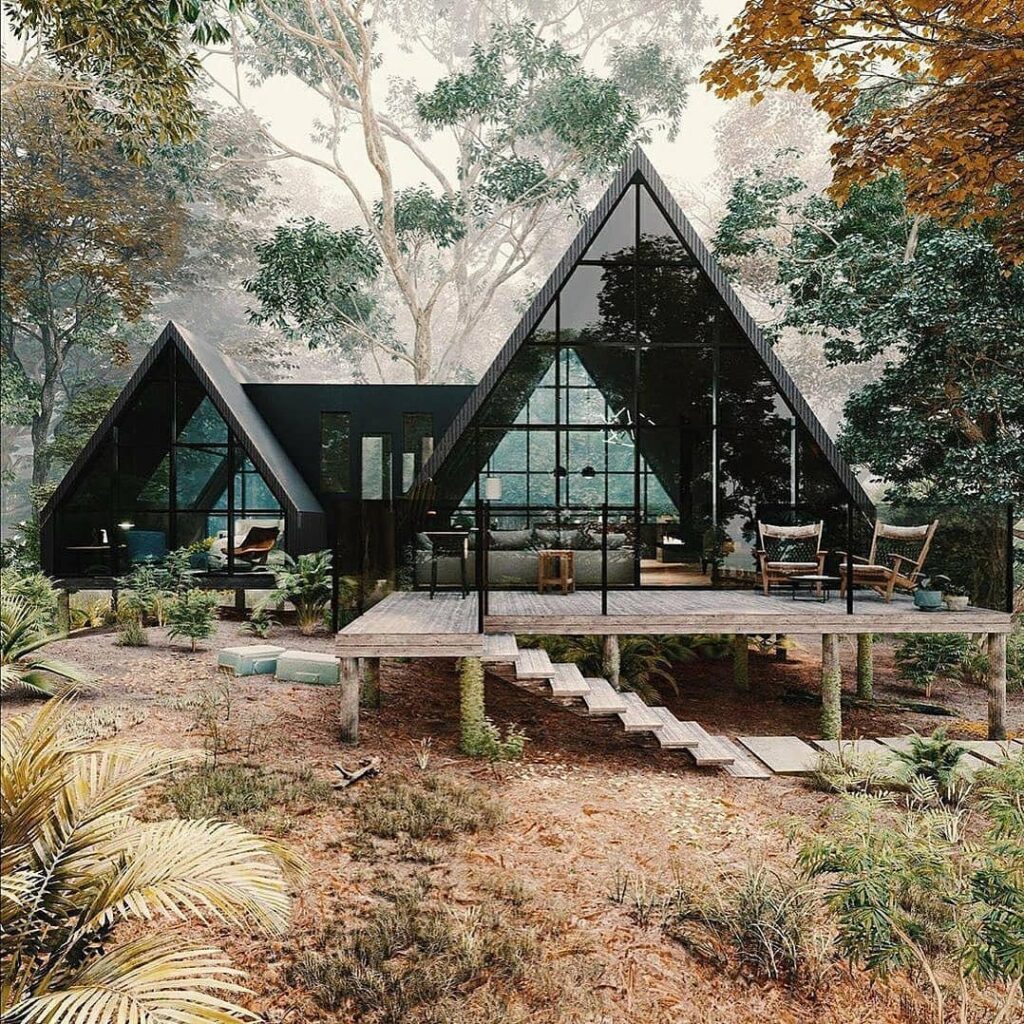
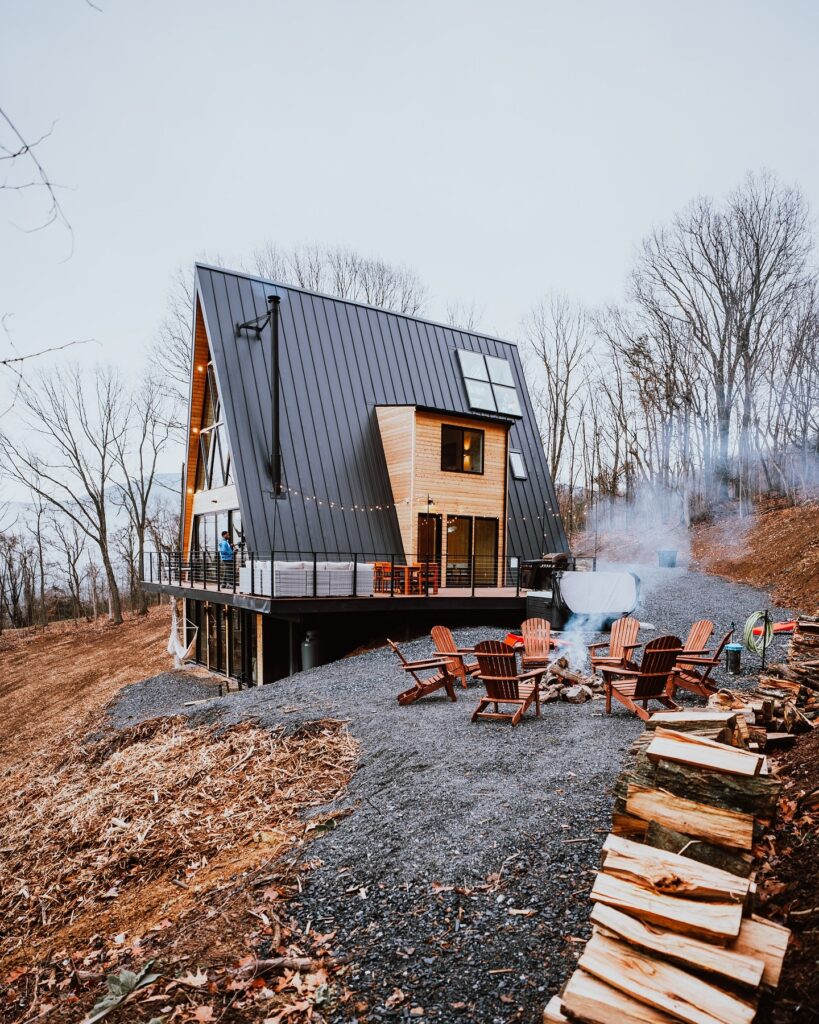
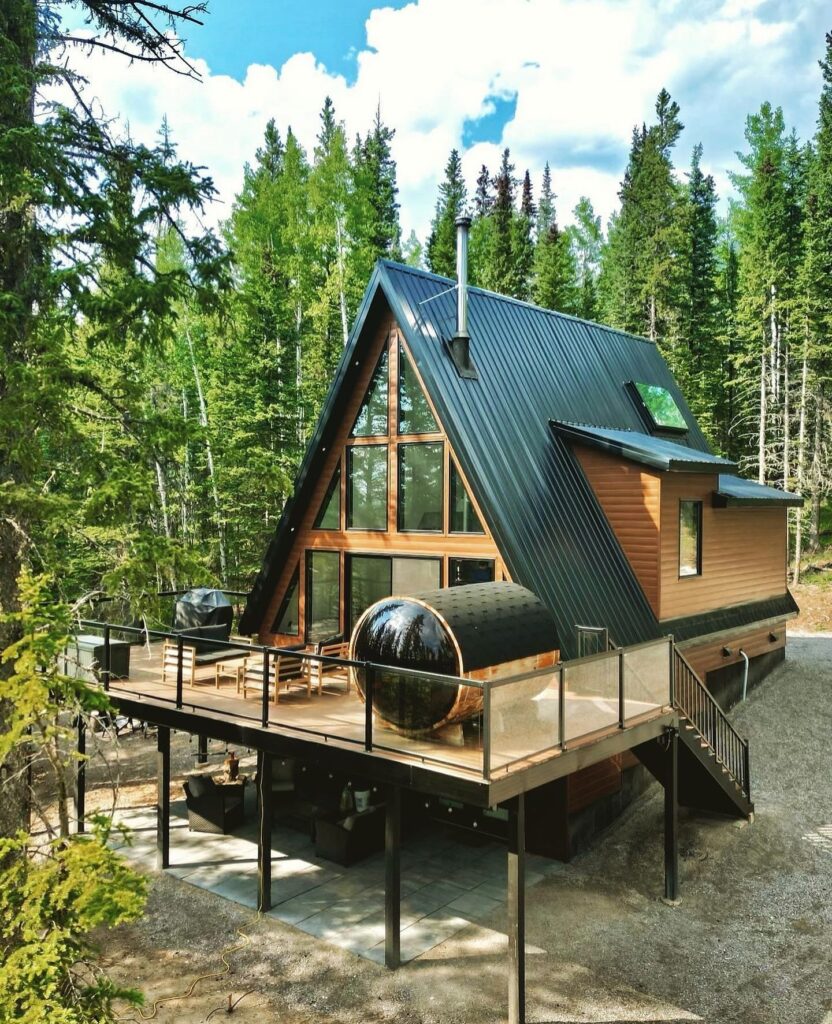
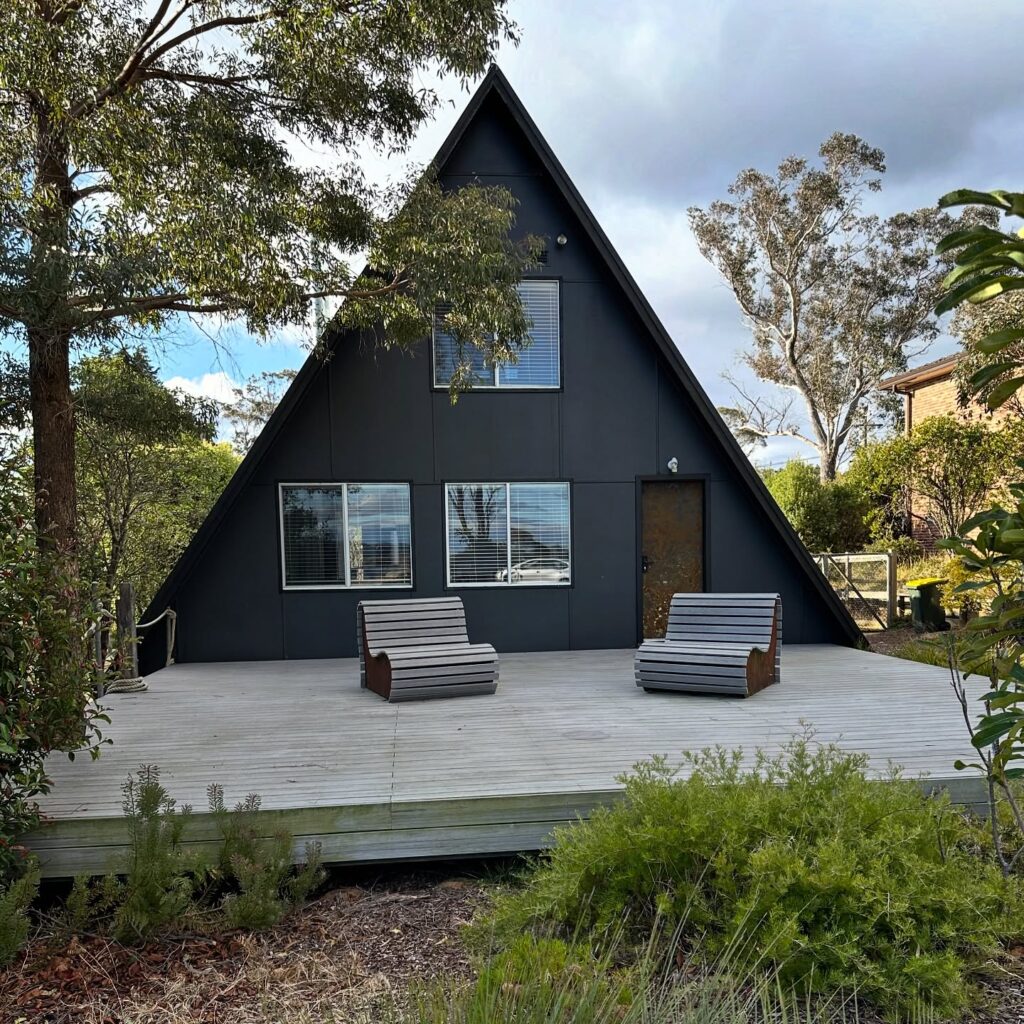
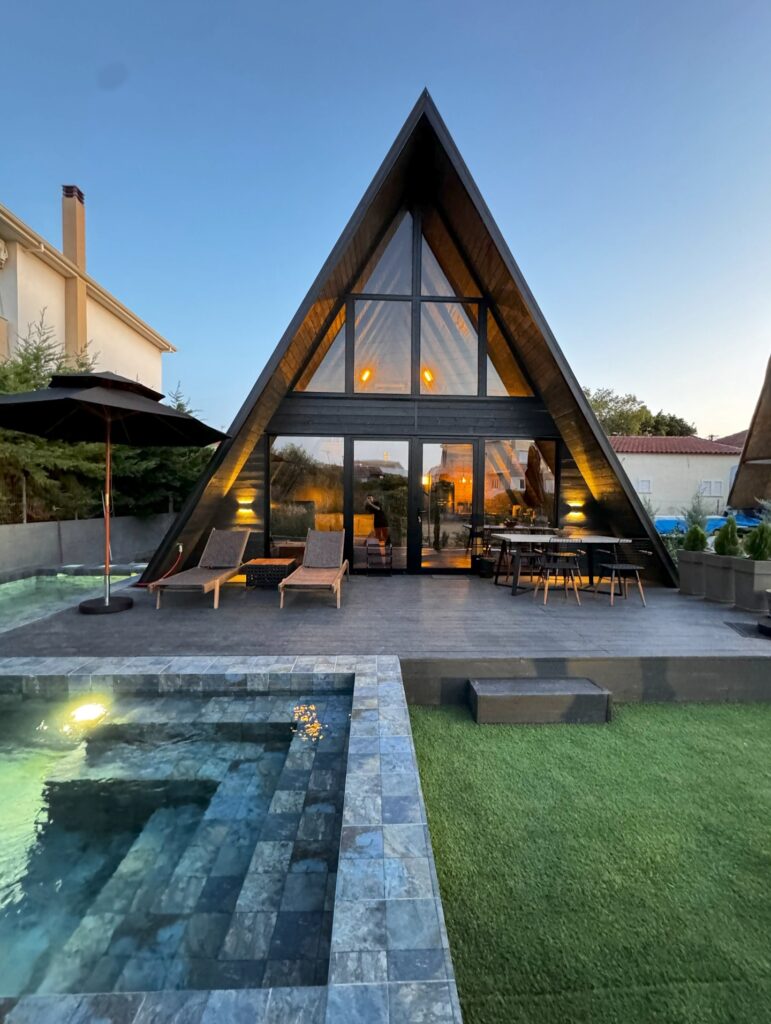
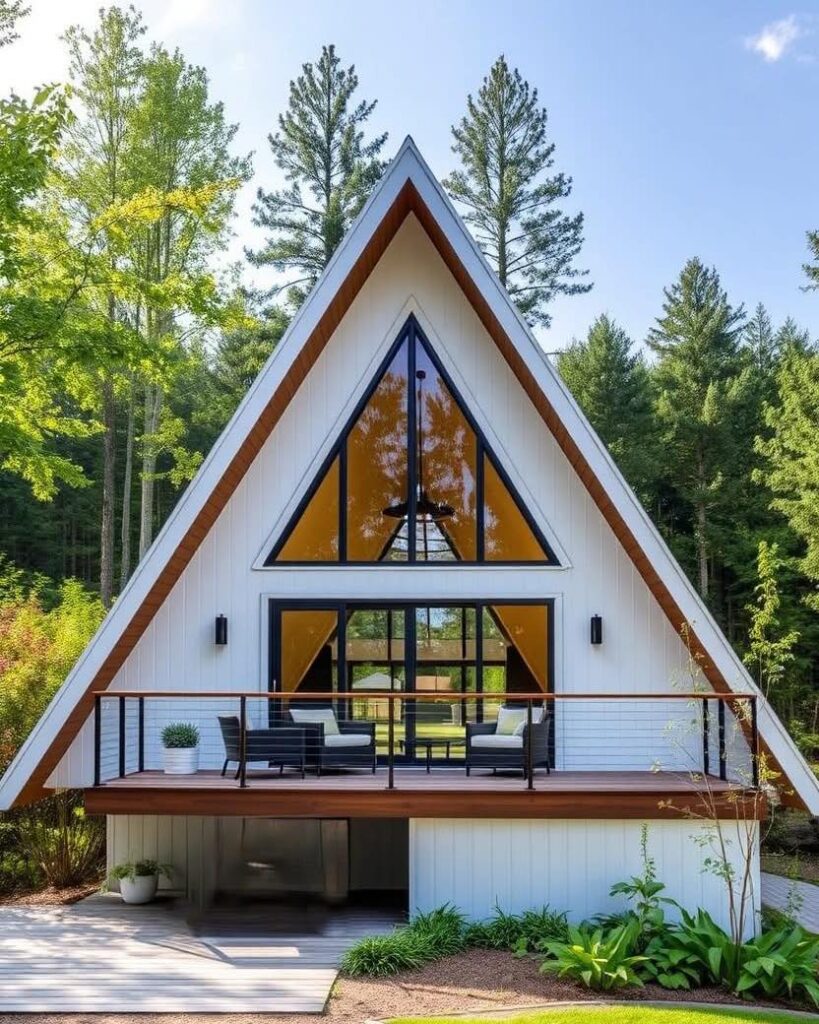
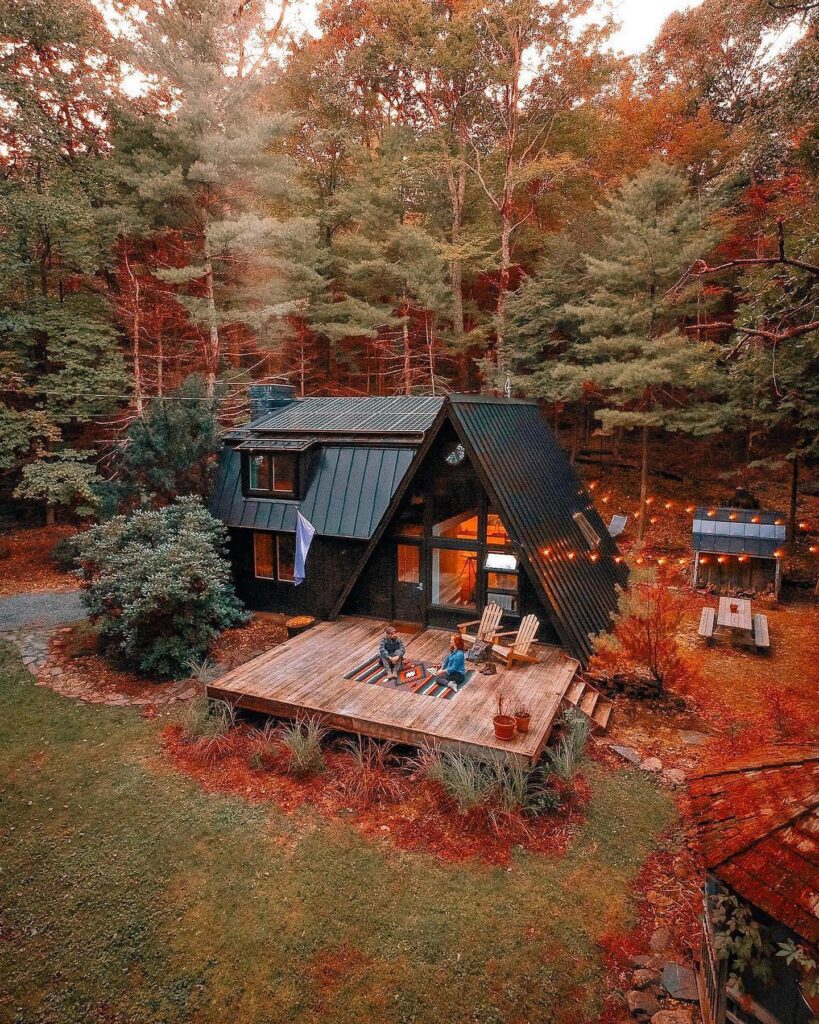
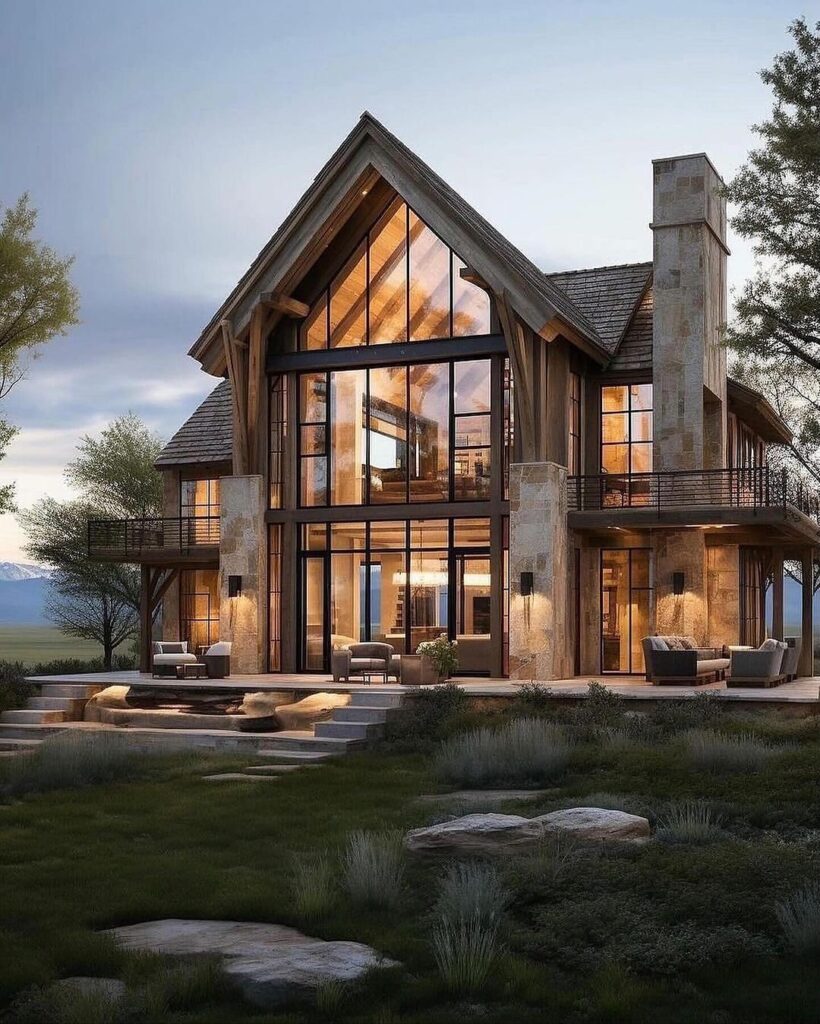
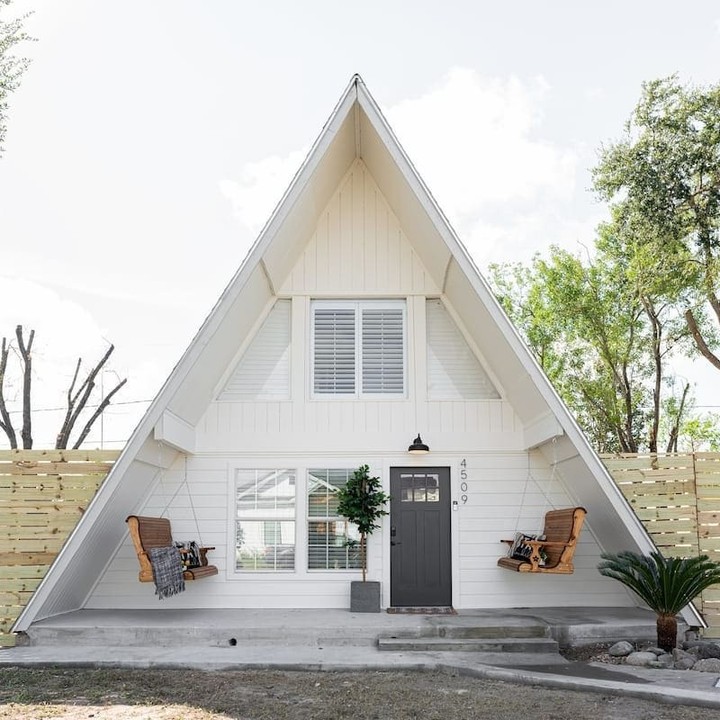
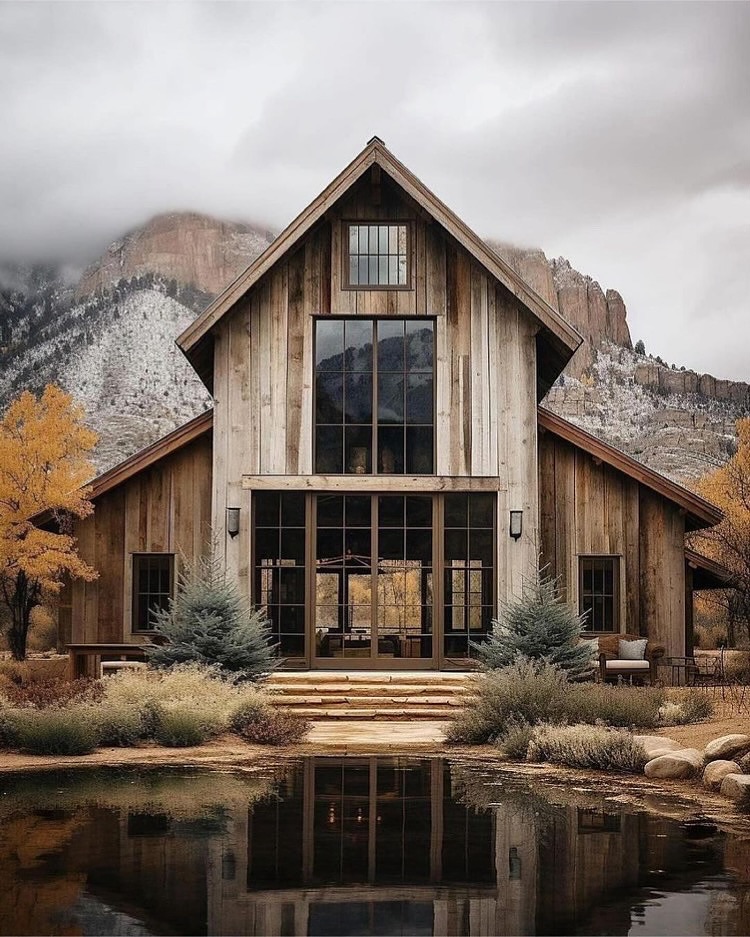
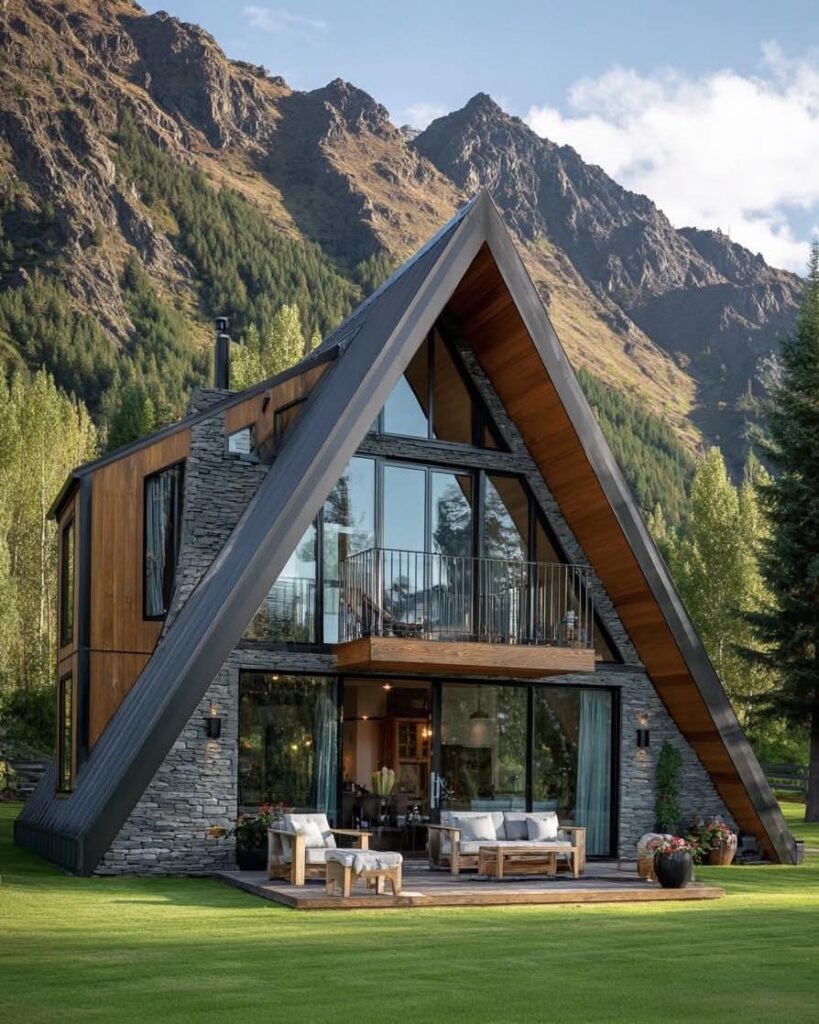
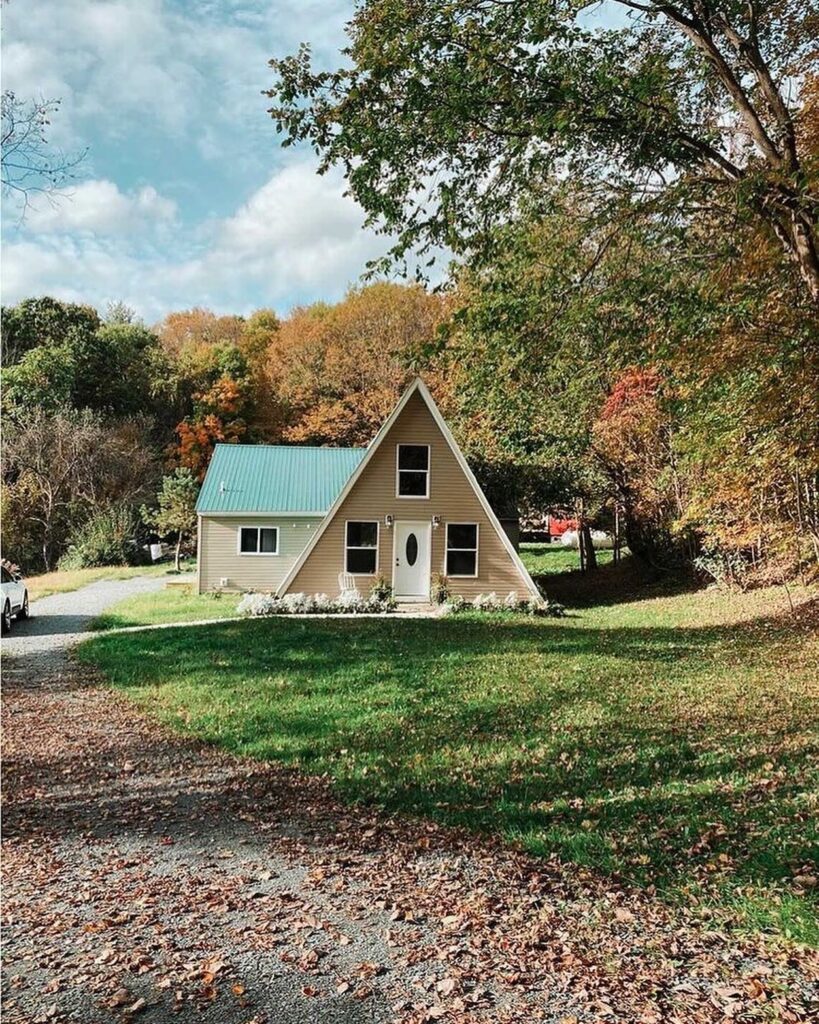
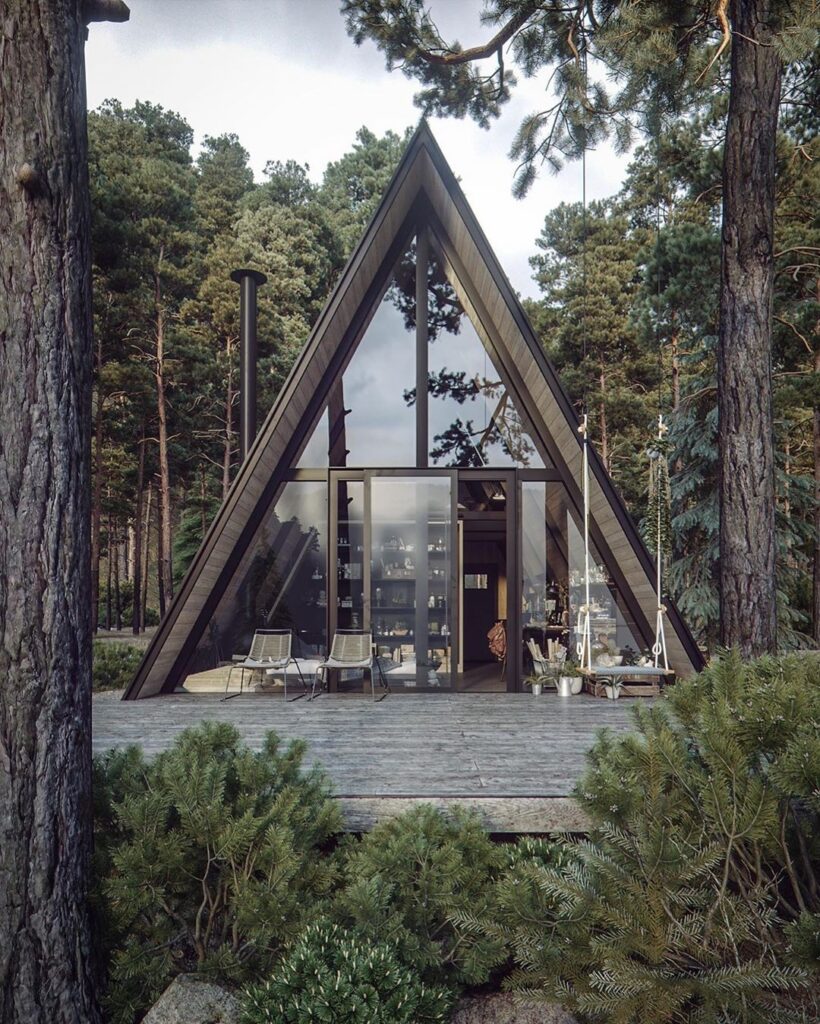
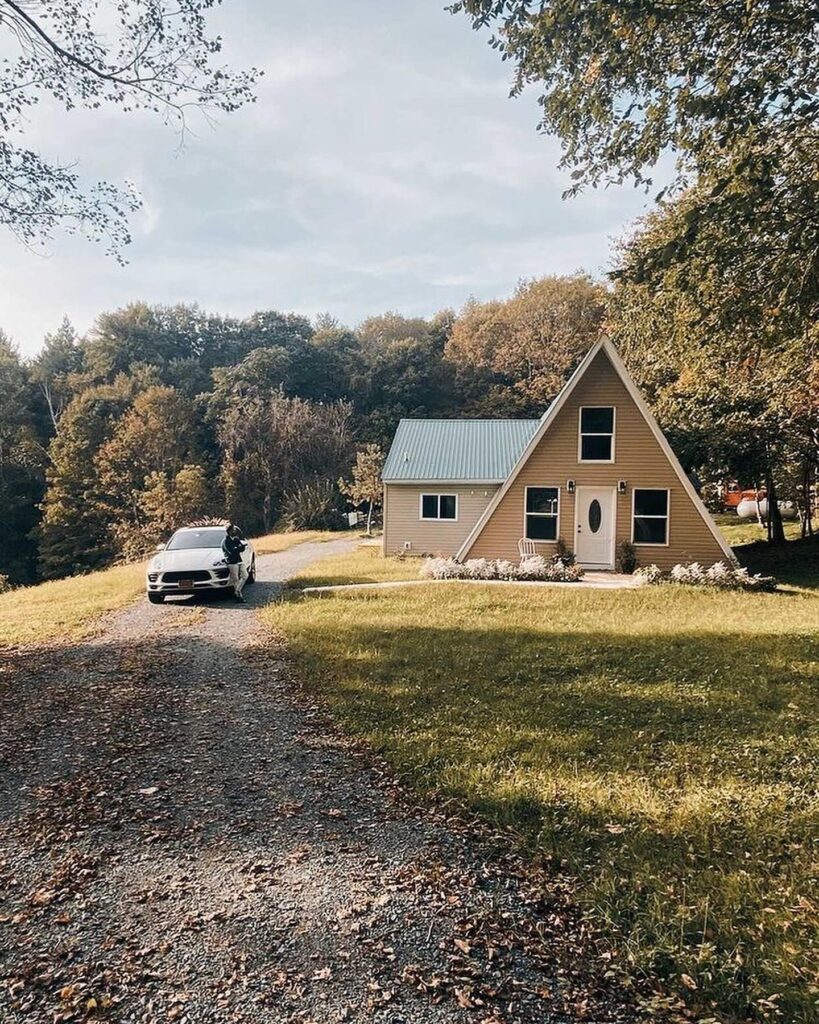
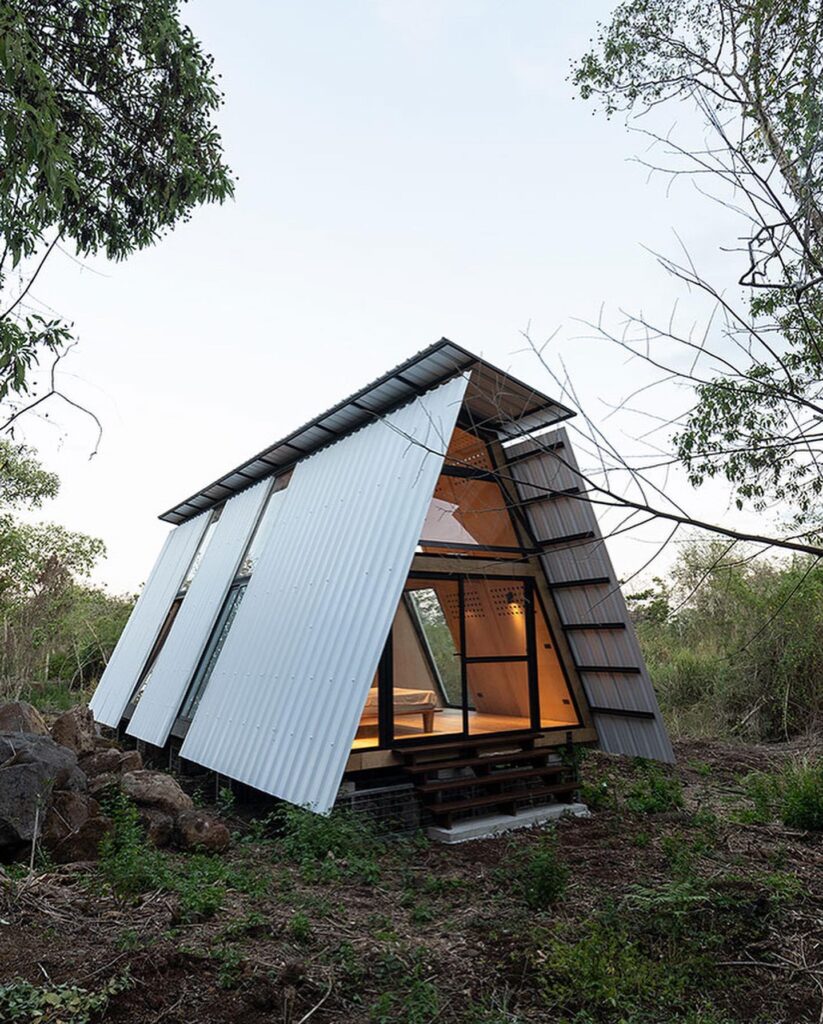
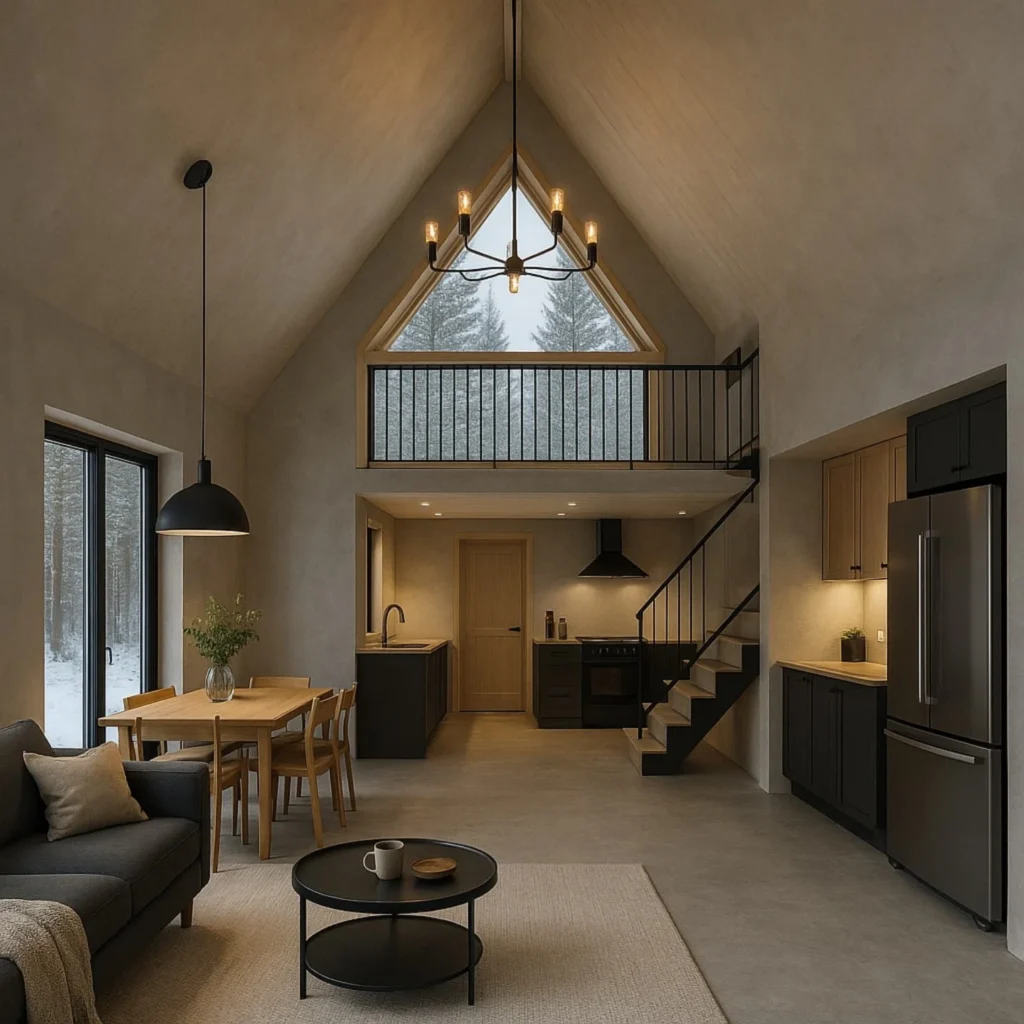
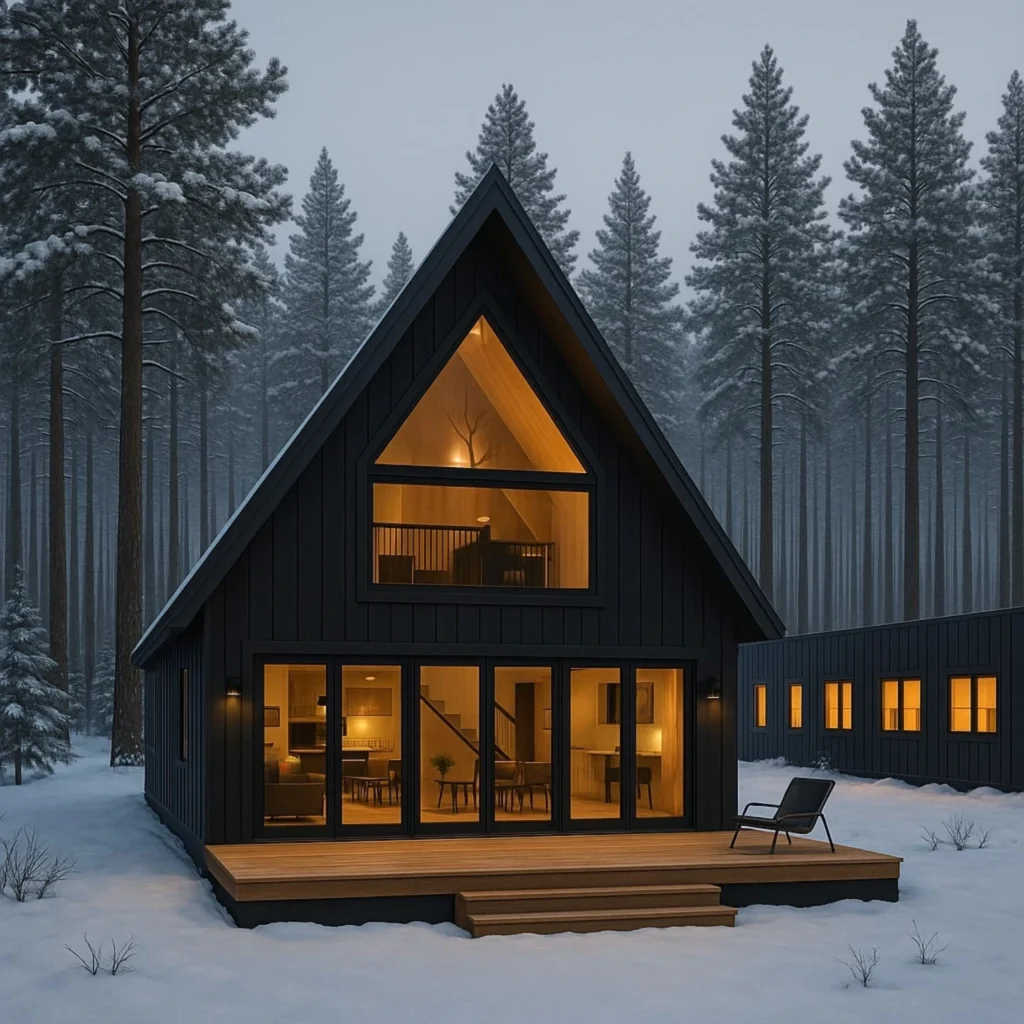
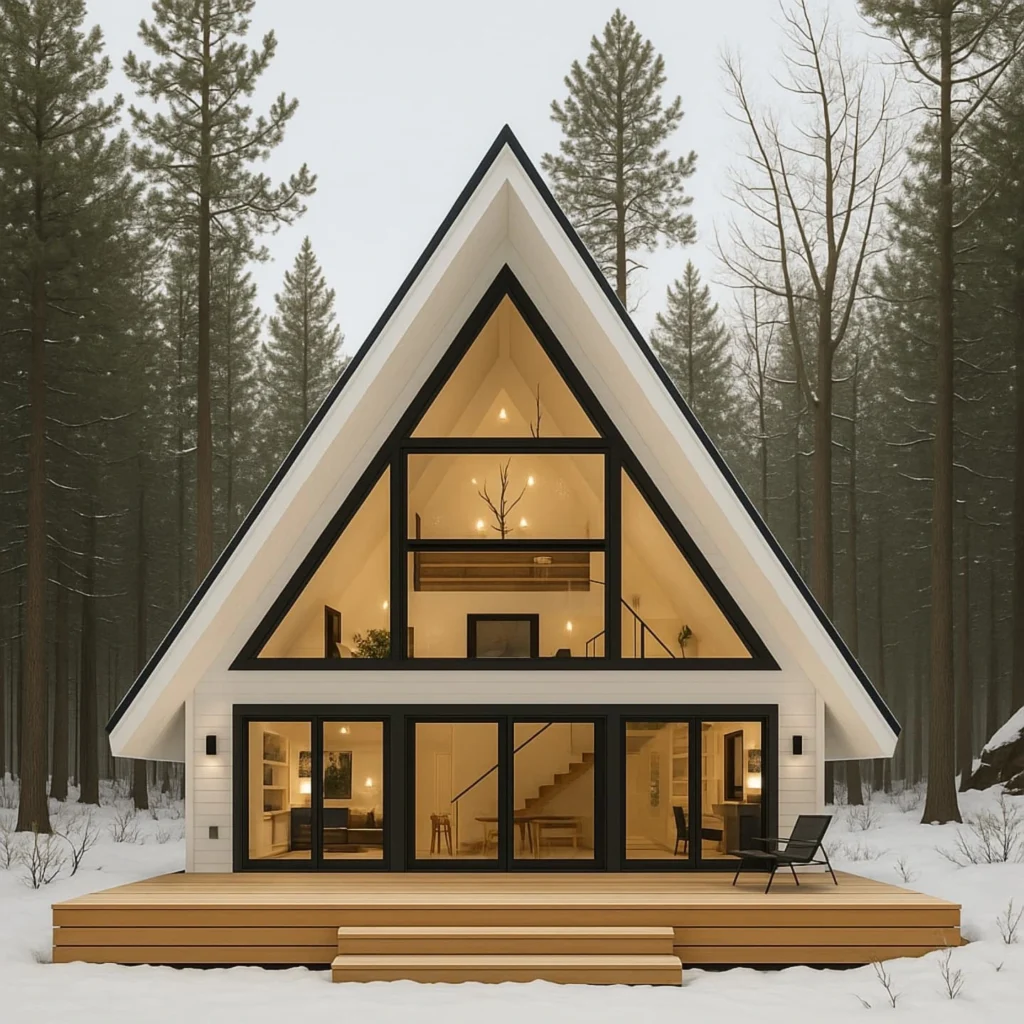
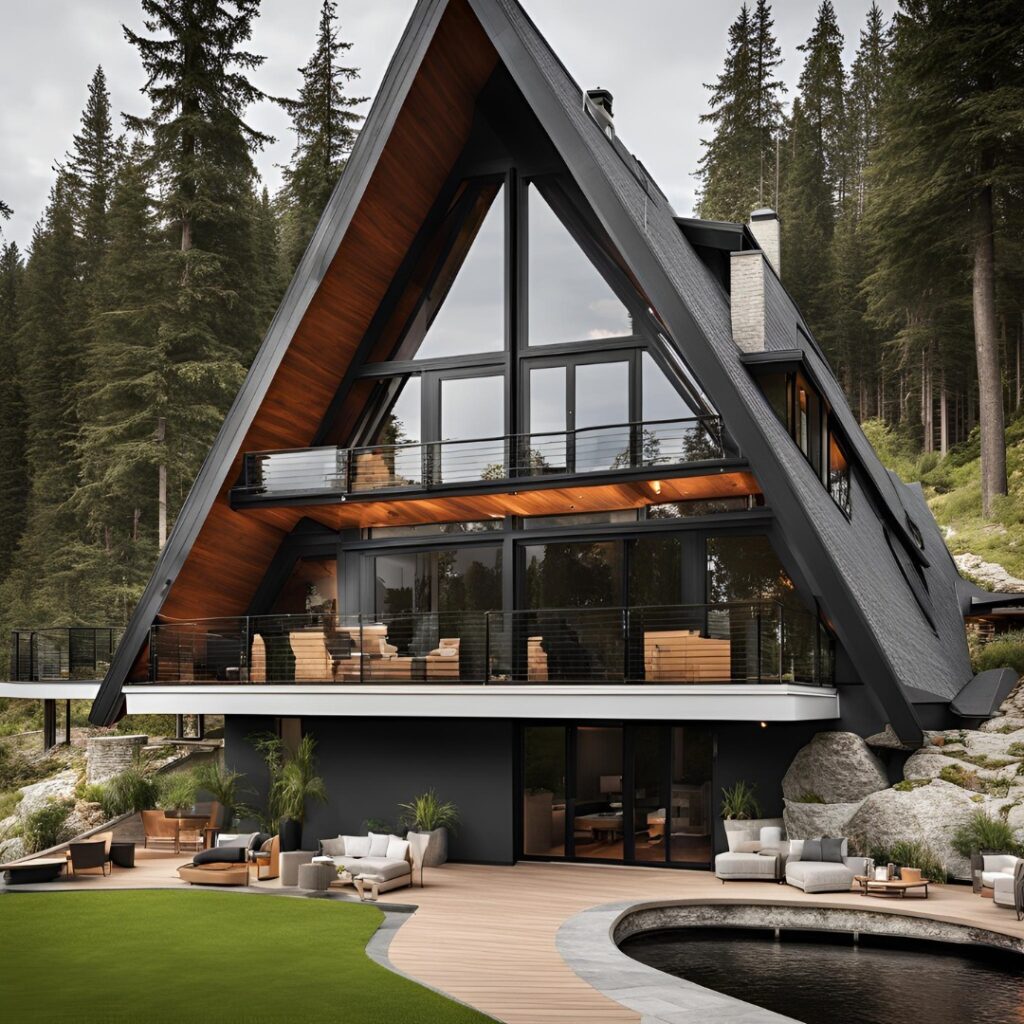
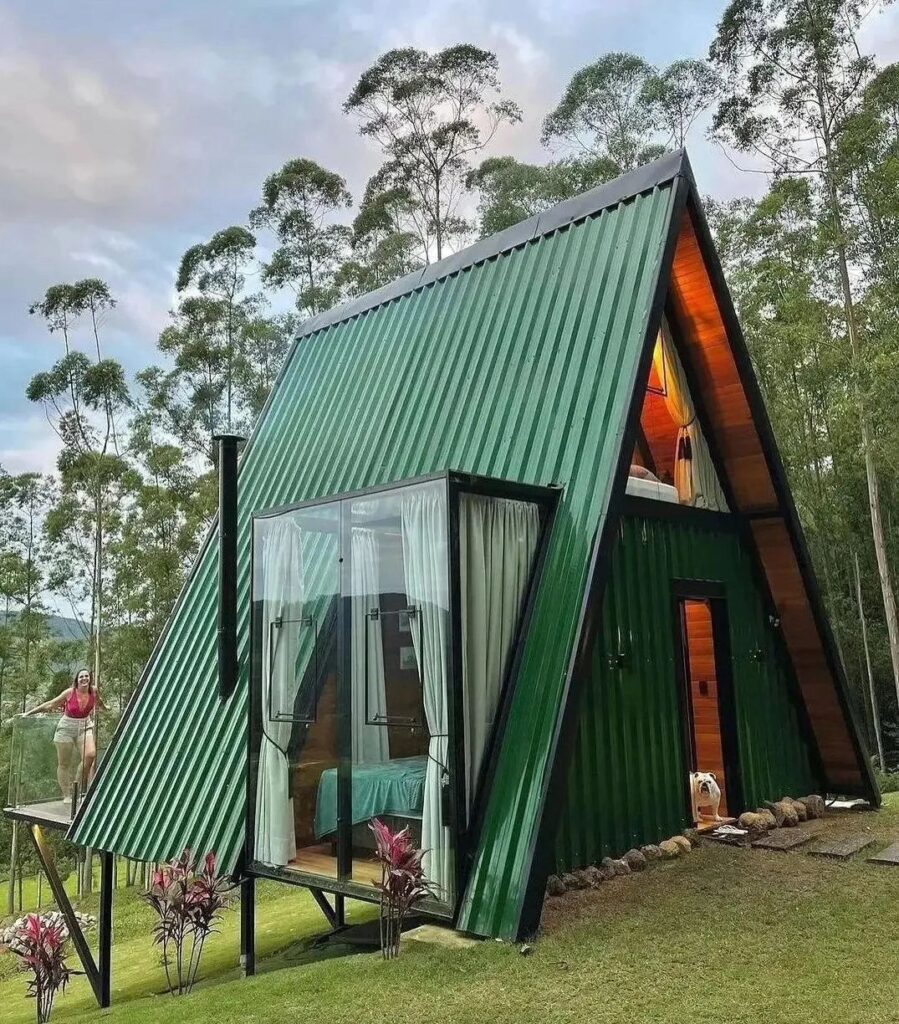
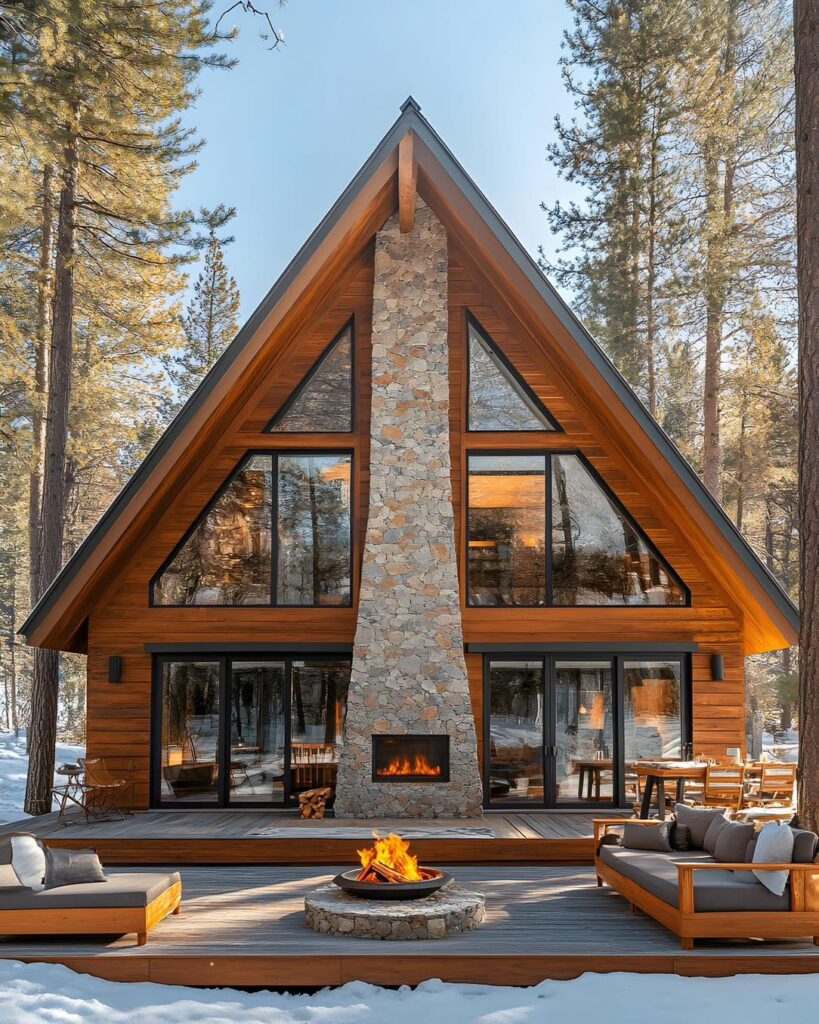
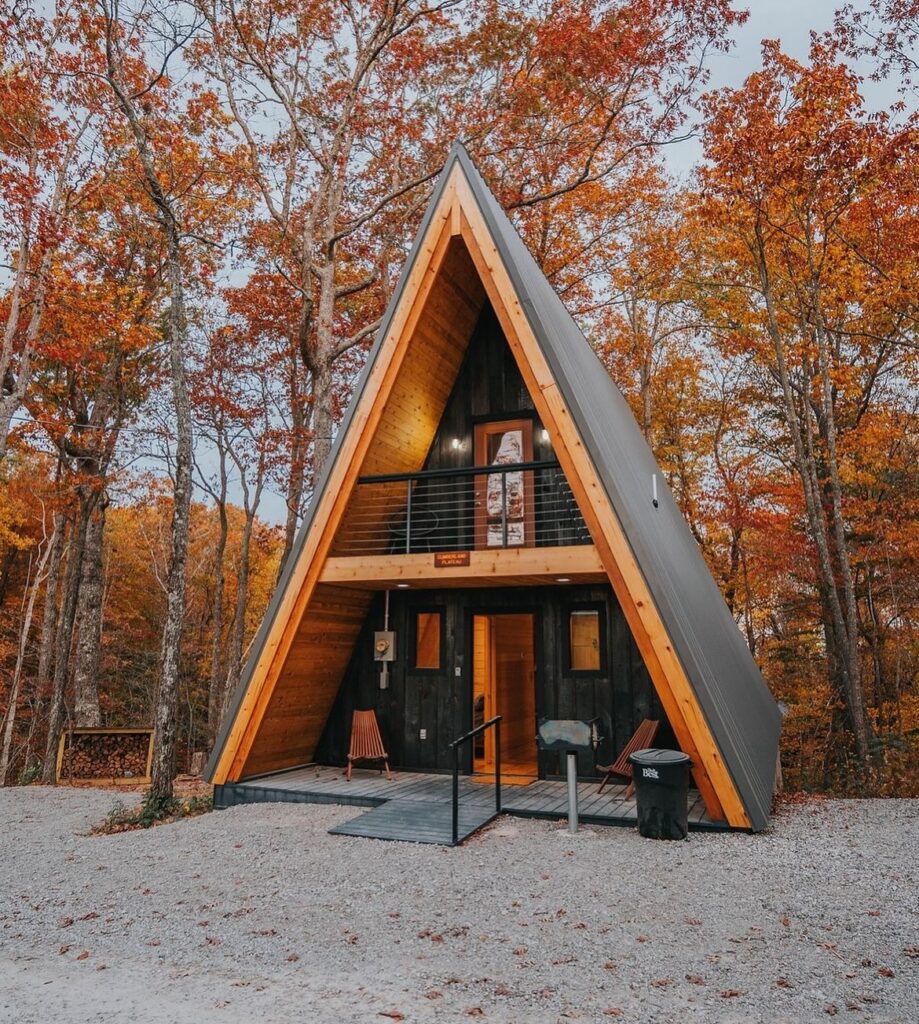
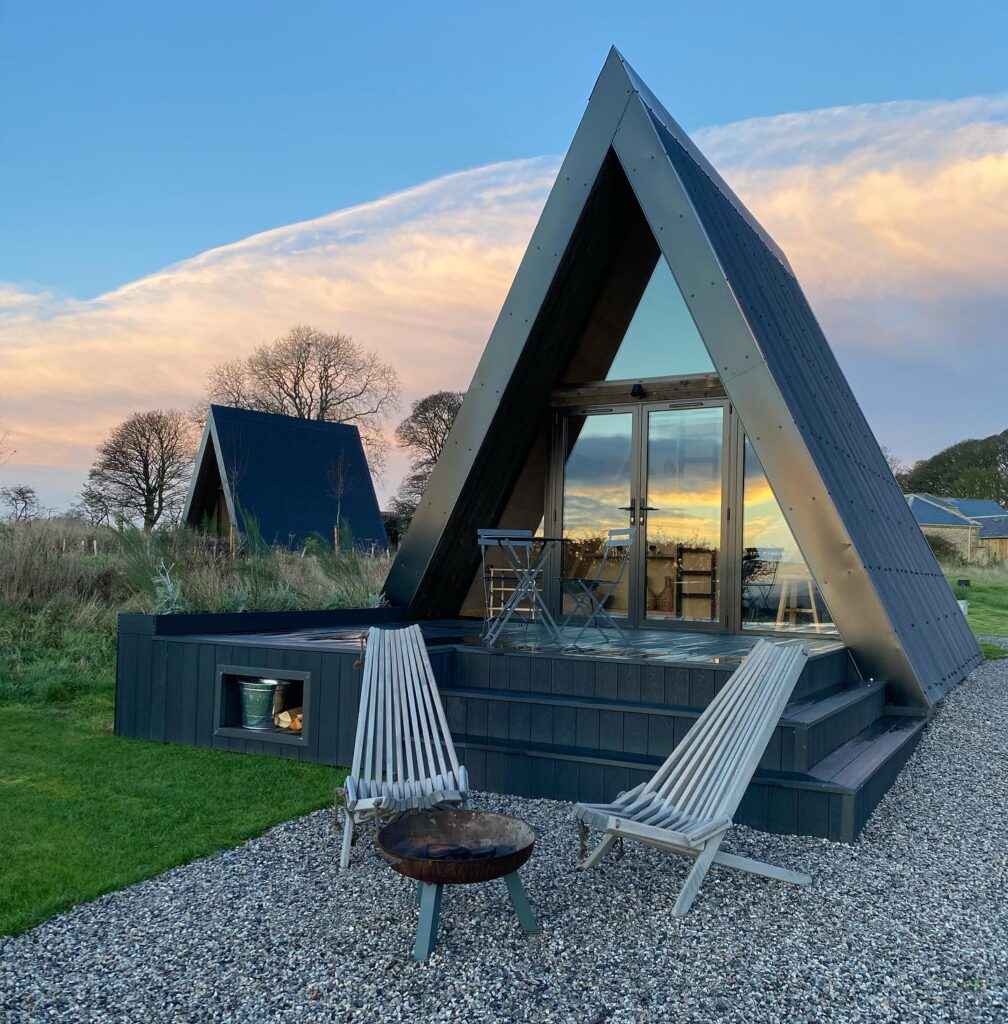
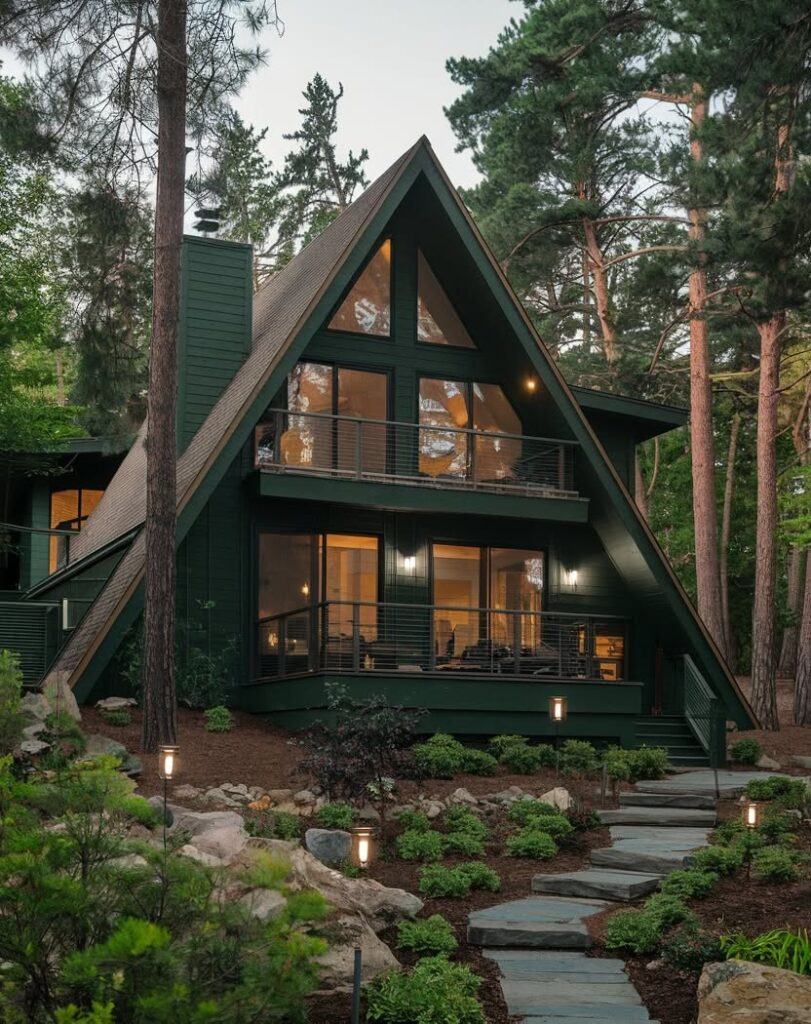
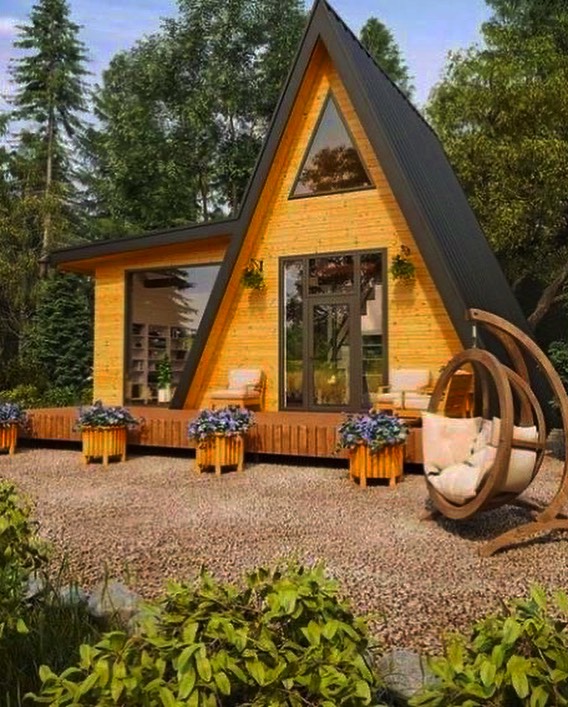
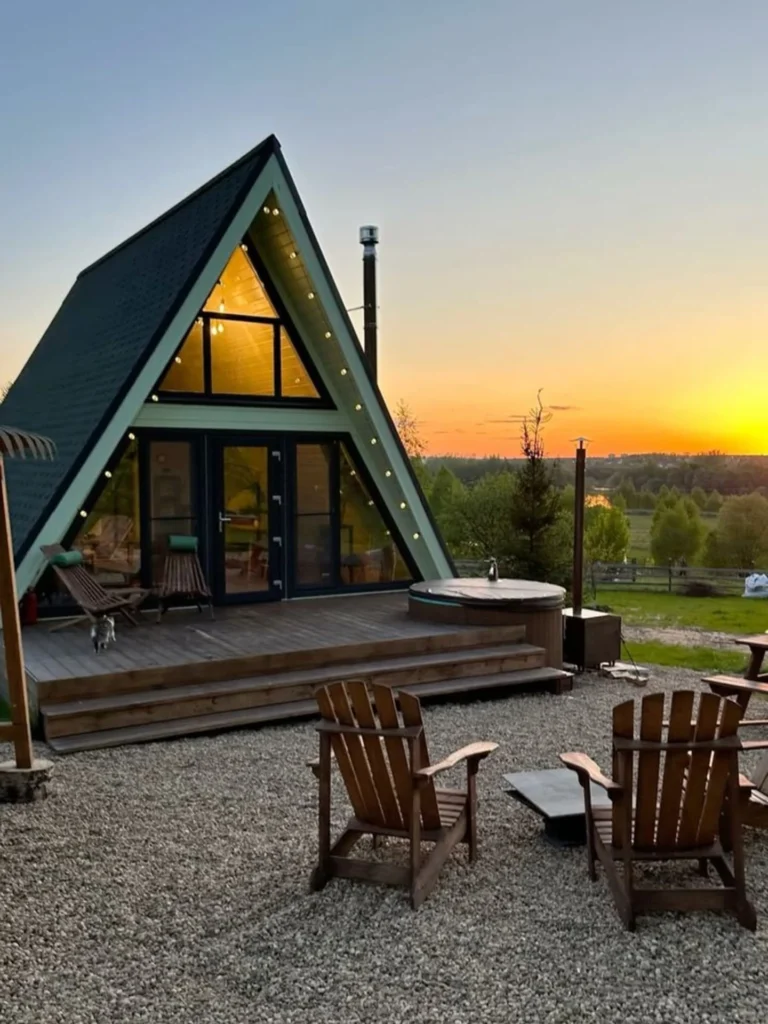
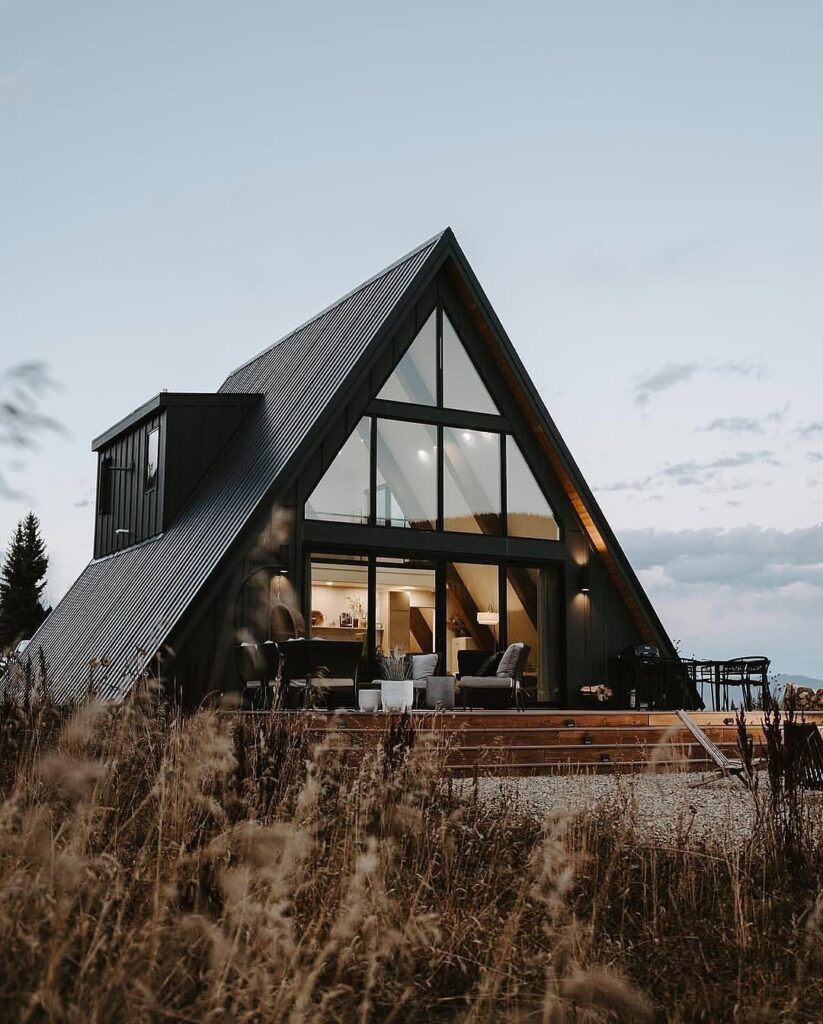
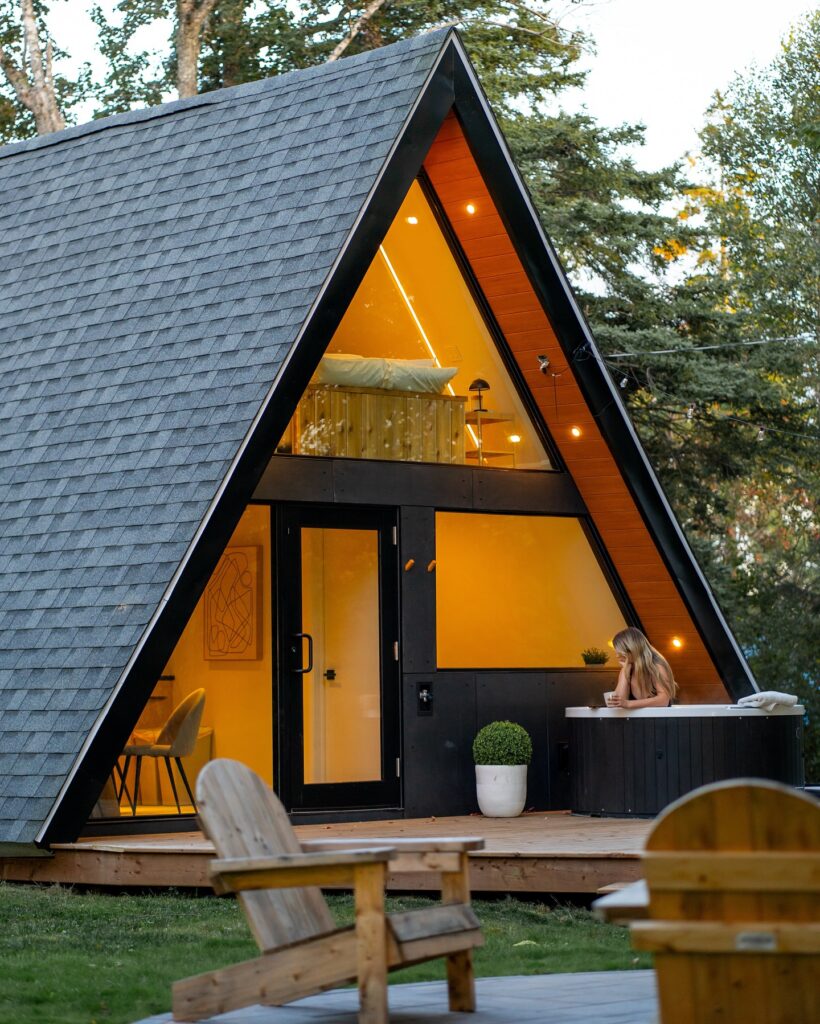
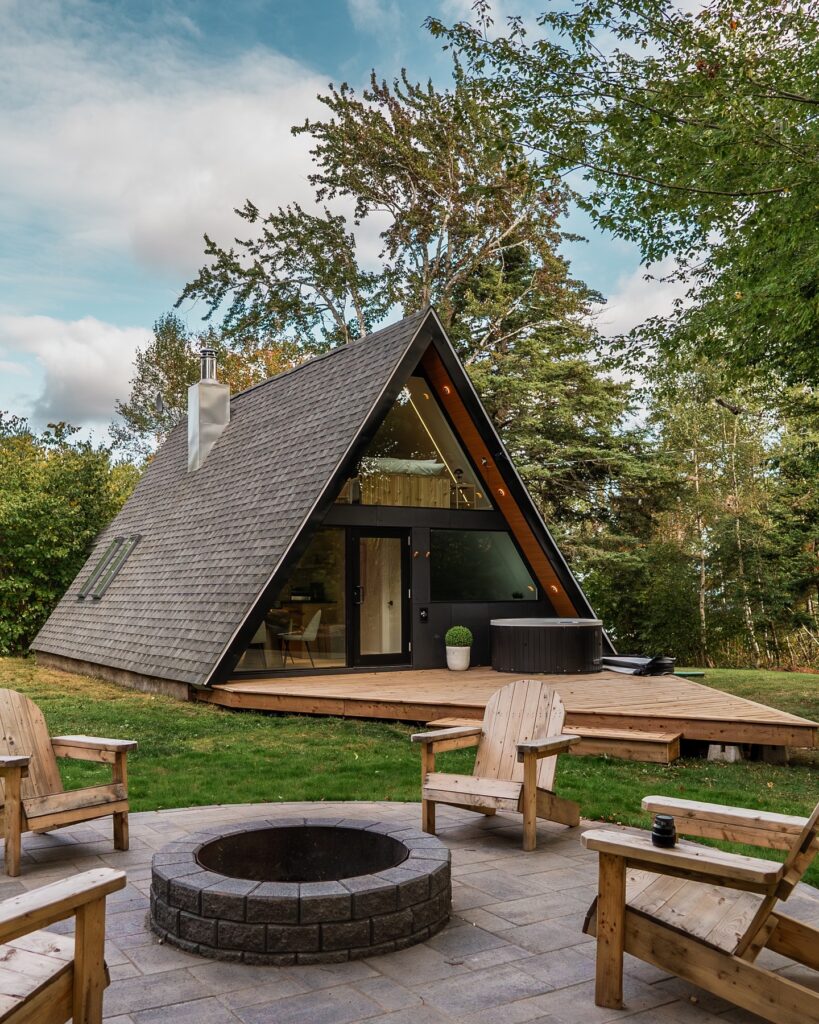
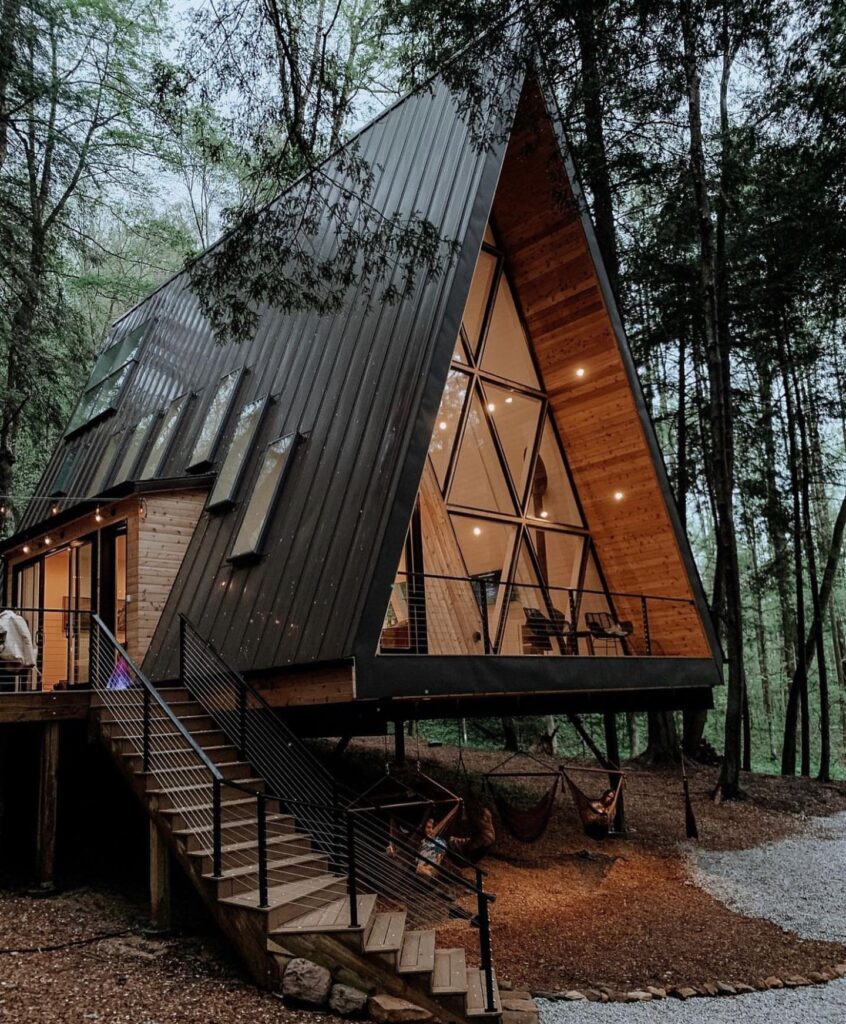
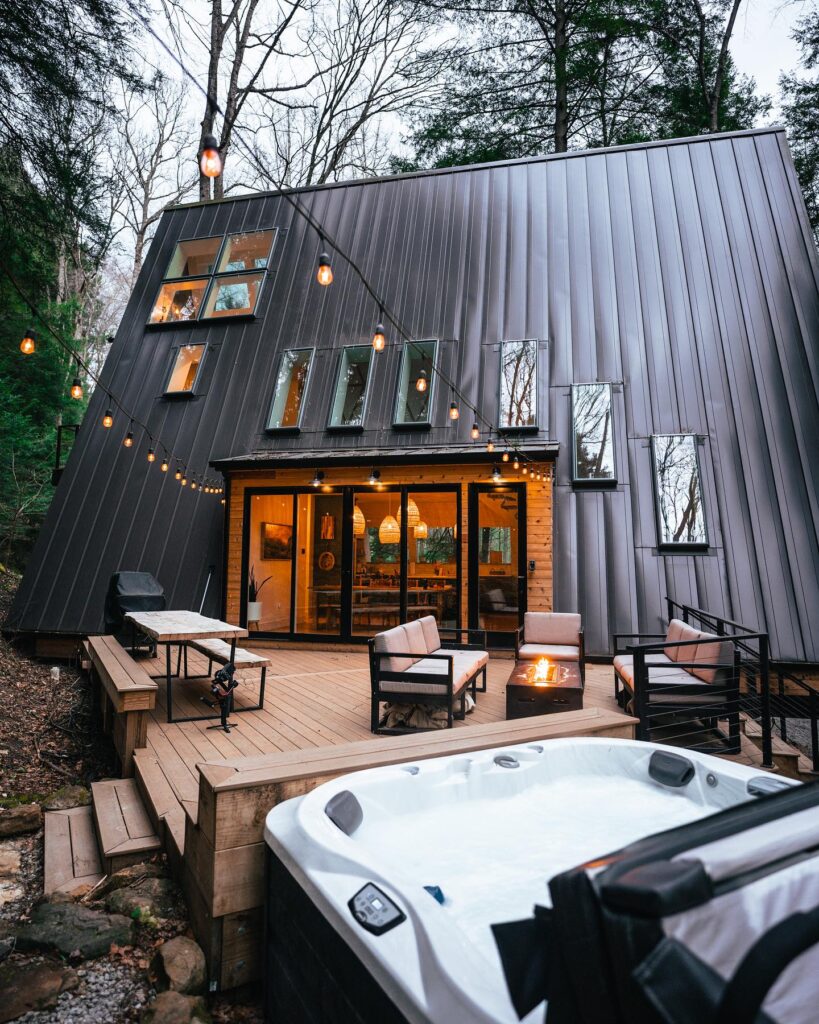
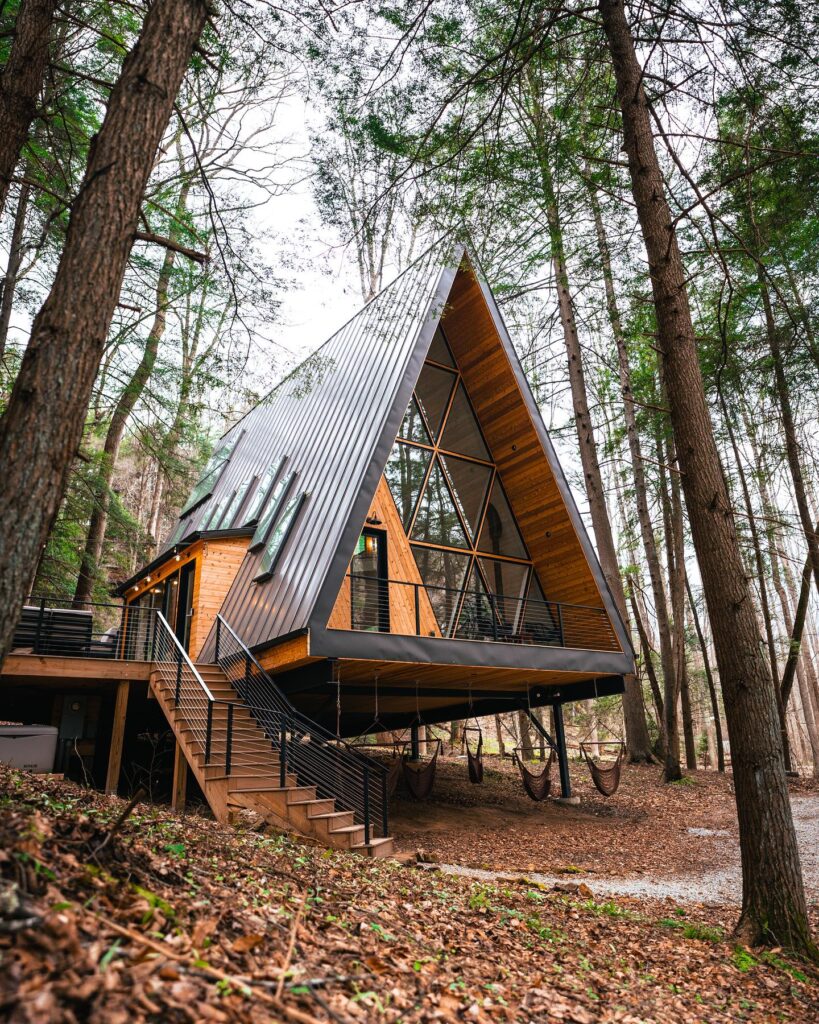
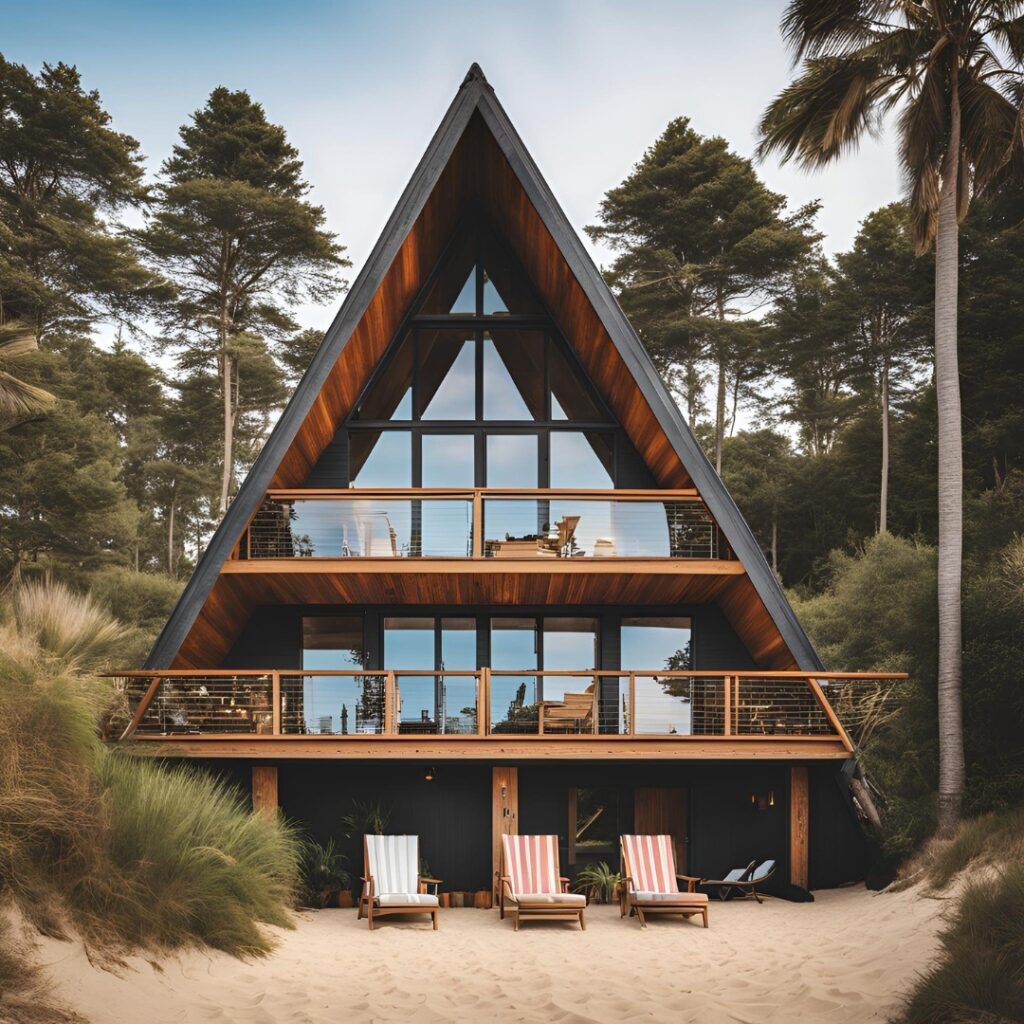
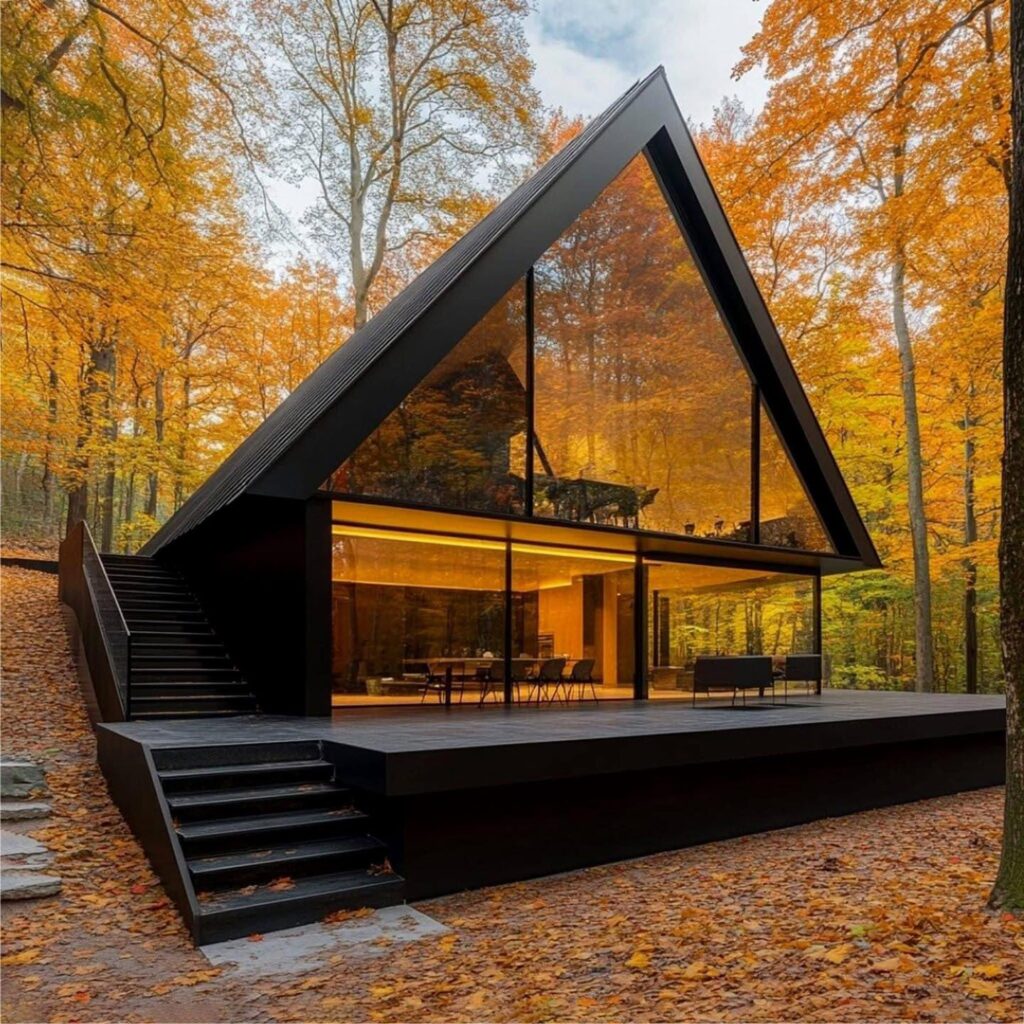
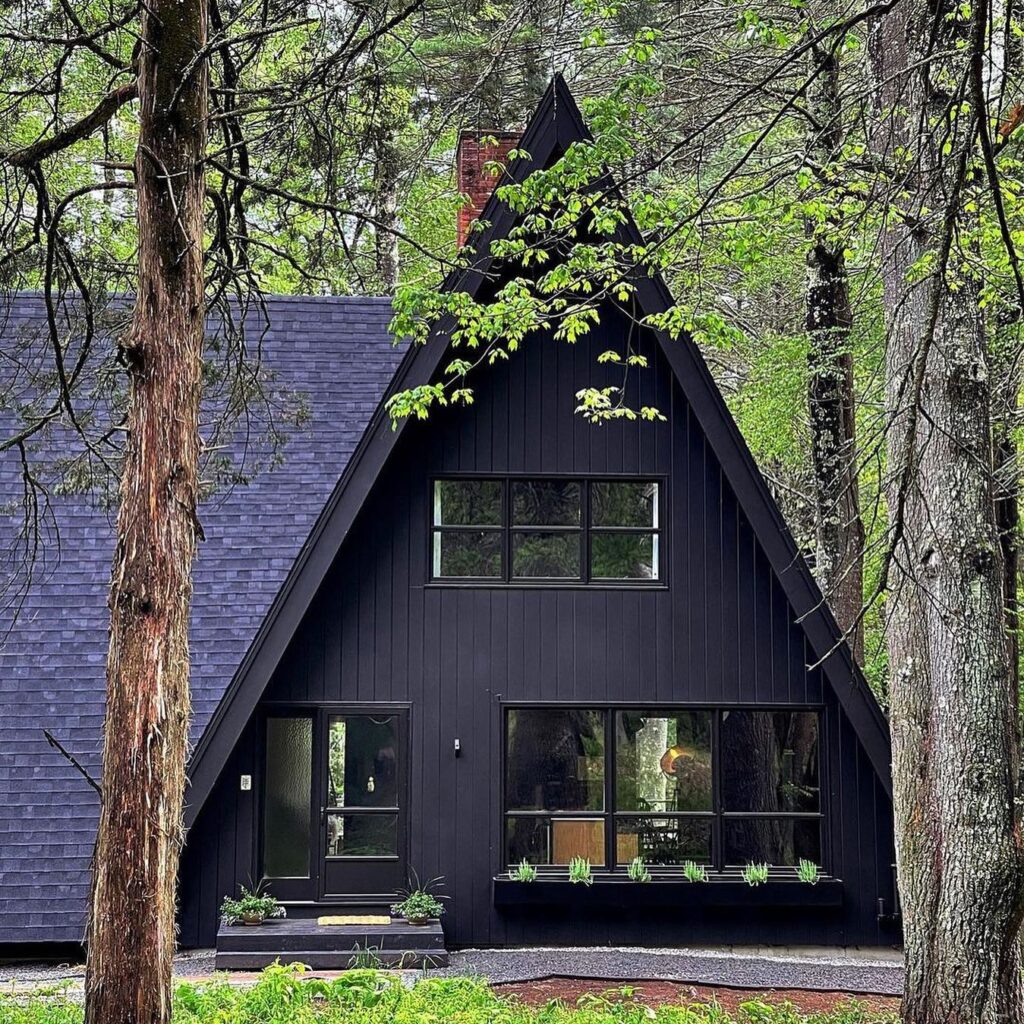
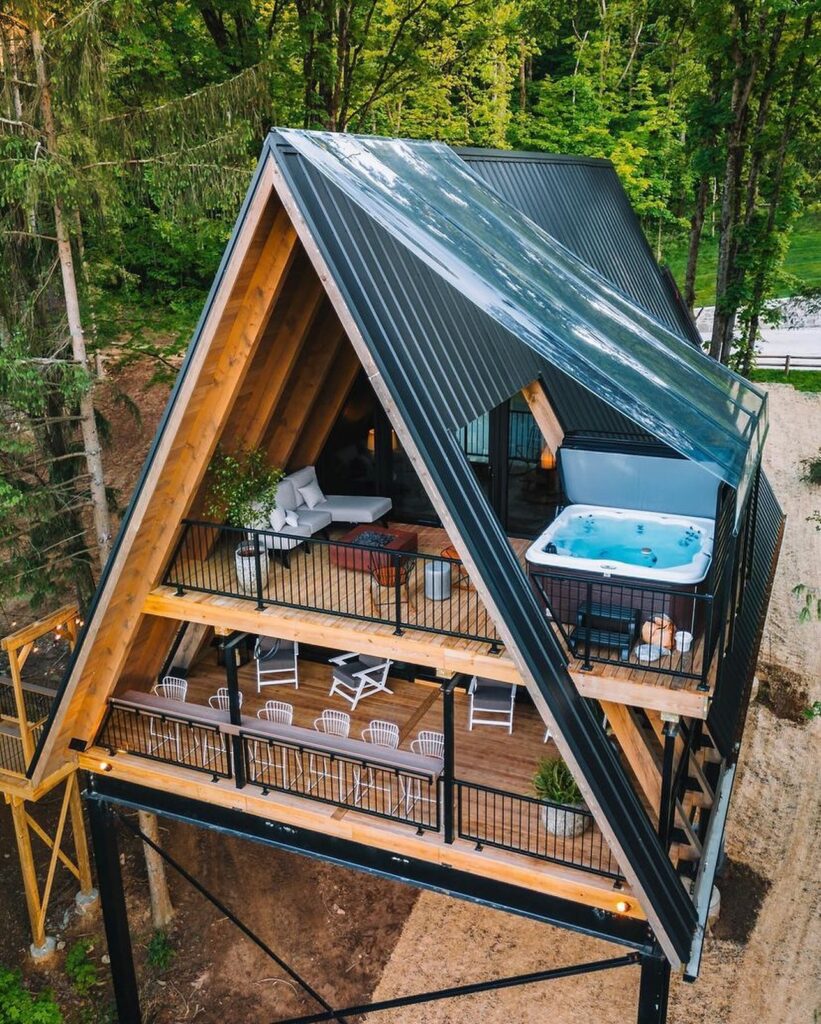
Through these 87 images, spanning rustic humility to lavish innovation, the A-frame reveals itself as more than architecture—it’s a philosophy. Basic tenets like efficient framing and nature attunement underpin each, while ideas for lofts, decks, and sustainable tweaks invite personalization. Whether you’re dreaming of a weekend escape or lifelong abode, this carousel stirs the creative embers, proving elegance thrives in the triangle’s embrace. (Word count for gallery section: approximately 850)
Evolution of the A-Frame: From Ancient Roots to Modern Masterpieces
The story of the A-frame is one of resilient adaptation, weaving through centuries and continents to emerge as a symbol of innovative living. Its origins trace back to prehistoric ingenuity, where nomadic peoples leaned poles together and draped hides or thatch over them, forming rudimentary shelters that withstood the elements. In ancient Europe, cruck-framed huts in rural England and grubenhaus structures in Germanic regions employed similar triangular forms for stability against wind and flood. Farther east, Japan’s gasshō-zukuri farmhouses—named for their “prayer-hand” roofs—piled heavy thatch layers on steep pitches to combat typhoons and snow, a design so effective it persisted for over a millennium.
By the Middle Ages, A-frame principles permeated Scandinavian and Alpine vernacular architecture. Swiss chalets and Norwegian stave churches featured interlocking timbers under soaring roofs, blending utility with spiritual symbolism—the peak evoking uplifted hands in supplication. These early iterations prioritized communal spaces below and storage lofts above, a spatial logic that endures today. In the South Pacific, Maori wharenui meeting houses adopted pitched forms from local palms, fostering gatherings under open rafters that amplified voices and stories.
The modern A-frame’s pivotal moment arrived in 1934, when Austrian émigré architect Rudolph Schindler erected the Bennati House in California’s Lake Arrowhead. Inspired by his Bauhaus roots and the site’s snowy inclines, Schindler fused open-plan interiors with exposed beams and glass gables, creating a vacation haven that married efficiency and experiential drama. This prototype ignited interest among mid-century modernists, who saw in the A-frame a democratic antidote to ornate pre-war homes. Post-World War II prosperity fueled the boom: America’s expanding middle class craved affordable escapes, and A-frames fit the bill.
Enter the prefabrication revolution. Companies like Lindal Cedar Homes and the Douglas Fir Plywood Association churned out kits—the 1957 Hellyer cabin, for instance, showcased plywood’s versatility in national magazines. Architects amplified the trend: Henrik Bull’s 1953 Stowe cabin in Vermont emphasized rustic warmth, while Andrew Geller’s 1955 Elizabeth Reese House on Long Island’s dunes blended beachy minimalism with playful geometry, earning New York Times acclaim. John Campbell’s 1951 “Leisure House,” displayed at San Francisco’s Arts Festival, epitomized leisure-class aspirations, its clean lines echoing the era’s optimism.
By the 1960s, A-frames permeated popular culture. Frank Lloyd Wright’s influence lingered in spiritual adaptations, like the 1949 First Unitarian Society in Madison, Wisconsin—a tent-like assembly hall symbolizing unity. Antonin Raymond’s 1961 Holy Cross Anglican Church in Tokyo drew from Japanese minka traditions, interlacing pillars like clasped hands. In Scandinavia, Ove Bang’s 1959 Bakkehaugen Church and the 1965 Arctic Cathedral solidified the form’s ecclesiastical allure, their white-clad peaks piercing northern skies.
Yet, popularity bred ubiquity. By the 1970s, mass-produced kits diluted the style’s charm, turning A-frames into roadside motels and fast-food stands. The oil crisis and shifting tastes toward sprawling ranches hastened their decline. A brief revival in the 1980s via tiny house precursors fizzled, but the 2008 recession reignited interest. Economic constraints favored compact, efficient builds, and social media amplified their photogenic appeal—think Instagram-famous cabins in the Catskills or Tahoe.
Fast-forward to 2025: A-frames are in renaissance, propelled by sustainability mandates and remote-work lifestyles. Prefab advancements, like Zook Cabins’ modular units, slash construction time while incorporating net-zero features. Architects like Cadaval & Solà-Morales in Spain’s Pyrenees adapt ruins into hybrid forms, preserving heritage amid innovation. In Ontario’s Kawartha Lakes, UUfie reimagines A-frames as “tree houses,” with cantilevered volumes hugging canopies. Iran’s Next Office shields urban villas with sinuous roofs, while Bromley Caldari’s Fire Island revamp marries mid-century nostalgia to waterfront luxury.
This evolution underscores the A-frame’s chameleon-like quality: from survivalist hut to status symbol, it absorbs cultural currents while retaining core virtues. Inspirations abound—Schindler’s experiential voids, Geller’s seaside whimsy—urging today’s builders to honor history while forging futures. In 87 unique iterations, we see this legacy alive, each home a chapter in an ongoing saga of elegant adaptation.
Design Features That Define A-Frame Elegance
What elevates an A-frame from functional shelter to elegant retreat? It’s the symphony of deliberate features that harmonize form, function, and feeling. Foremost is the roofline itself: a steep 45- to 60-degree pitch not only sculpts the iconic profile but also dictates spatial drama. This angle creates vaulted ceilings soaring to 20 feet or more, where rafters—often Douglas fir or glulam beams—crisscross like cathedral ribs, drawing gazes heavenward and infusing spaces with grandeur.
Windows are the A-frame’s soul windows, quite literally. Gable-end glazing, spanning from floor to peak, acts as a proscenium for nature’s theater, framing vistas with architectural precision. In modern iterations, triple-glazed units with low-E coatings balance luminosity and insulation, while operable panels foster cross-ventilation. Side clerestory windows puncture slopes, admitting dappled light without compromising privacy. These apertures transform interiors into lantern-like glows at dusk, their mullion-free expanses underscoring minimalist ethos.
Materials selection amplifies inherent elegance. Exteriors favor weather-resilient choices: western red cedar shakes age to silver elegance, corten steel weathers to russet patinas evoking autumn earth, and board-and-batten siding adds textural rhythm. Bases often employ fieldstone or rammed earth for thermal mass, rooting the structure terrestrially. Interiors embrace tactility—reclaimed oak floors warm underfoot, whitewashed shiplap walls reflect light, and exposed trusses retain raw grain for authenticity. Contemporary twists incorporate polished concrete counters or linen-upholstered banquettes, blending rustic roots with urban polish.
Spatial organization is where ingenuity shines. The ground floor typically unfolds in open-concept splendor: a great room with kitchenette flows to dining nooks, all under the unifying vault. Lofts perch above like eyries, accessed via spiral stairs or custom ladders—ideal for bedrooms or libraries, their knee walls preventing falls while preserving airiness. Modified A-frames introduce raised walls for fuller headroom, or dormers that carve habitable niches from eaves. Basements, where feasible, house utilities, freeing upper levels for living.
Sustainability weaves through these features seamlessly. The compact envelope minimizes heat loss, while south-facing orientations harness solar gain. Rain chains from eaves collect runoff for gardens, and green roofs insulate while hosting pollinators. Smart integrations—like app-controlled blinds or geothermal loops—enhance efficiency without visible intrusion. Accessibility considerations, such as zero-step entries or elevator lofts, ensure inclusivity.
In our 87 exemplars, these elements intermingle uniquely: a Tahoe A-frame’s stone hearth anchors a lofted library, its flue piercing the peak like a spire; a Hamptons dune dwelling’s louvered screens modulate sea breezes. Elegance, then, is emergent—arising from features that serve without dominating, inviting inhabitants to co-author the narrative. By mastering these, A-frames transcend trend, becoming heirlooms of quiet splendor.
Pros and Cons: Weighing the A-Frame Lifestyle
Embracing an A-frame promises a life of distinctive charm, but like any architectural choice, it comes with trade-offs. Let’s unpack the advantages and challenges, drawing from the diverse experiences reflected in our 87 homes.
Pros:
- Cost-Effective Construction: A-frames demand fewer materials—roof and walls merge, slashing lumber needs by up to 20%. Prefab kits start under $15,000 for basics, with full builds averaging $100-$200 per square foot, far below custom contemporaries.
- Environmental Resilience: The pitch excels in extremes: snow slides off in blizzards, rain cascades in monsoons, and winds glance harmlessly. In Tahoe’s winters, this feature prevents roof collapses common in flat designs.
- Spacious Illusion: Vaulted volumes make modest footprints feel palatial. A 600-square-foot A-frame rivals a 900-square-foot ranch in perceived roominess, thanks to lofts and open plans.
- Nature Integration: Expansive glazing fosters biophilic connections—imagine waking to forest canopies in a Vermont cabin. This boosts mental well-being, aligning with wellness trends.
- Versatility and Scalability: From tiny houses to multi-wing estates, A-frames adapt. Add modules for growing families, or downsize for retirees, all while retaining the signature form.
- Aesthetic Timelessness: The geometry defies datedness, evolving from rustic to luxe. Our gallery’s coastal gems and desert sentinels exemplify enduring allure.
Cons:
- Space Constraints: Sloped walls encroach on upper floors—headroom dwindles to 4 feet at edges, limiting tall furniture or storage. Creative solutions like built-ins are essential.
- Maintenance Challenges: Steep roofs deter DIY cleans; pros with harnesses are pricier. Gutters, if added, clog easily in leaf-heavy sites.
- Thermal Quirks: Heat stratifies—lofts swelter in summer, bases chill in winter. Without proper insulation (R-50 minimum recommended), efficiency falters.
- Site Sensitivity: Best on slopes; flat lots yield awkward proportions. Zoning hurdles arise in urban zones favoring orthogonal forms.
- Resale Nuances: Niche appeal suits enthusiasts but may deter traditionalists. In non-vacation markets, premiums evaporate.
- Acoustic Echoes: Open volumes amplify sounds; rugs and panels mitigate, but privacy suffers without strategic partitions.
Balancing these, A-frames reward the adaptable. In our collection, pros dominate for off-grid dreamers, while cons yield to innovations like radiant barriers or modular expansions. Ultimately, they suit those craving uniqueness over convention—a deliberate choice for lives richly lived.
(Word count for this section: approximately 450)
Spotlight: 87 Unique A-Frame Inspirations
Diving deeper into our curated selection, each of the 87 A-frames tells a story of site-specific genius, transforming constraints into canvases of elegance. We’ll group them thematically, highlighting standout features without exhaustive enumeration, to inspire your vision.
Rustic Retreats: These forest-dwellers channel mid-century soul. Number 5, a Bull-inspired Vermont cabin, boasts hand-hewn beams and a fieldstone hearth, its loft hammock swaying over wildflower views. Elegance? A single brass pendant casting golden pools on oak floors.
Coastal Charms: Dune-huggers like Geller’s Reese echo in Number 22: weathered shingles, a widow’s walk loft, and tidal murals. Unique twist: bi-fold doors dissolving walls into decks for sunset symphonies.
Mountain Majesties: Snow-kissed sentinels, such as Number 41’s Pyrenees homage—cross-gables sheltering saunas, with switchback stairs to panoramic lofts. Elegance in asymmetry: one slope solar-clad, the other wild-vined.
Urban Hybrids: City-edge rebels, like Number 55’s Tehran veil: sinuous steel shielding Zen gardens, lofts doubling as ateliers. Innovation: kinetic facades modulating light like living sculptures.
Luxe Lakesides: Water-whisperers, Number 64’s Ontario treehouse floats on pilings, mirrored glass reflecting loons. Signature: submerged libraries with aquatic acoustics.
Desert Dreams: Arid oases, Number 75’s corten-clad mirage integrates rammed-earth berms, lofts cooled by evaporative towers. Poetic: wind-sculpted dunes echoing roof curves.
Eco-Pinnacles: Vanguard visions, Number 83’s net-zero meadow-mimic: living roofs blooming with natives, lofts harvesting breeze via turbines. Culmination: a mirrored finale camouflaging into hills, invisible yet indelible.
These spotlights reveal patterns—material dialogues, spatial poetics—fueling endless ideation. From Schindler shadows to 2025 innovations, they affirm A-frames’ boundless elegance.
Bringing Unique Elegance Indoors: Interior Design Ideas
Interiors are where A-frames truly enchant, turning geometric boldness into tactile havens. The key? Layer textures and scales to counter angularity—soft curves softening sharp slopes.
Start with palettes: earth tones ground—terracotta rugs, sage linens—while whites amplify light. Number 12’s Adirondack-inspired space mixes plaid woolens with brass hardware, evoking fireside tales.
Furniture wisdom: low profiles rule. Modular sectionals hug walls, leaving centers for gatherings; ladder bookshelves climb eaves like ivy. In lofted nooks, platform beds with sheer canopies evoke treehouses.
Lighting layers drama: pendants dangle from peaks like stalactites, while recessed strips trace rafters. Sconces on knee walls cast intimate glows. Number 28’s Japandi fusion employs rice-paper lanterns diffusing lofts into serene pods.
Textures tell stories: shearling throws on leather club chairs, macramé dividers softening divides. Kitchens gleam with soapstone sinks under skylights; baths indulge in clawfoot tubs gazing at stars.
Art and accents personalize: gallery walls of local prints on gables, or antler chandeliers nodding to wild roots. Plants thrive—hanging ferns from beams, moss walls absorbing humidity.
For our 87, interiors vary: rustic hearths in 7, minimalist monochromes in 42. Ideas? Zone with rugs, integrate tech discreetly. Thus, indoors becomes an extension of the frame’s poetic promise—cozy, curated, captivating.
Sustainable Practices in Elegant A-Frame Builds
Sustainability elevates A-frames from charming to consequential, aligning ancient efficiency with 21st-century imperatives. The form’s inherent thrift—minimal materials, tight envelopes—sets a green foundation, but intentional choices amplify impact.
Site synergy first: orient for solar optimization, south-facing gables capturing arcs. Passive strategies shine: overhangs shade summers, thermal chimneys vent heat. Number 82’s permaculture plot funnels roof runoff to edibles, closing water loops.
Materials matter: FSC-sourced timbers, recycled steel, hempcrete infills sequester carbon. Low-VOC finishes preserve air purity. Prefabs like Zook’s cut waste by 90%, assembling onsite in days.
Energy ecosystems: photovoltaic roofs power lofts, geothermal loops temper grounds. Rain gardens filter eaves’ bounty; composting toilets reclaim waste. Number 86’s zero-net design balances output with input, a model for autonomy.
Longevity ensures legacy: durable claddings weather decades; modular frames adapt to needs. Biodiversity bonuses: bird boxes in eaves, pollinator roofs.
In our gallery, eco-elegance threads through—desert berms in 75, meadow integrations in 83. Practices like these don’t just sustain; they inspire, making A-frames beacons of responsible beauty.
Cost Considerations and Building Tips for Your A-Frame
Budgeting an A-frame tempers dreams with reality, but strategic planning unlocks affordability without skimping elegance. Base costs: $100-$150/sq ft for sticks-built, $80-$120 for prefabs, totaling $120,000-$300,000 for 1,200 sq ft, site-dependent.
Breakdown: foundation 15%, framing 25% (A’s efficiency saves here), envelope 20%, interiors 30%, MEP 10%. Variables: terrain hikes civil works; remote sites inflate logistics.
Tips for thrift: kit routes like Lindal’s trim 20%; DIY lofts if skilled. Phase builds—core first, expansions later. Grants for green features offset renewables.
Pitfalls: underinsulate, and bills soar; site blindly, and floods loom. Engage pros early—structural engineers for pitches, locals for codes.
From our 87, coastal 22’s modular path saved 30%; mountain 41’s phased add-ons scaled gracefully. With foresight, your A-frame emerges as wise investment—elegant, enduring, economical.
(Word count for this section: approximately 250)
FAQs: Your A-Frame Questions Answered
Q: Are A-frames suitable for year-round living?
A: Absolutely, with modifications like enhanced insulation and HVAC zoning. Many in our collection, like Number 41, thrive as primaries.
Q: How long do A-frames last?
A: Over 100 years with maintenance; timber frames endure if protected from moisture.
Q: Can I customize an A-frame kit?
A: Yes—add dormers, lofts, or wings. Consult architects for seamless integration.
Q: What’s the best location for an A-frame?
A: Sloped, scenic sites—mountains, coasts, woods—maximize strengths.
Q: Do A-frames hold value?
A: In vacation markets, premiums reach 15%; uniqueness boosts appeal.
Q: How to heat an A-frame efficiently?
A: Radiant floors, wood stoves, or heat pumps; lofts benefit from fans.
Q: Are they family-friendly?
A: For smaller clans; lofts suit kids, but stairs need gating.
(Word count for this section: approximately 200)
Verdict: Why A-Frames Remain the Epitome of Unique Elegance
In surveying 87 A-frame houses, one truth crystallizes: this style’s unique elegance lies in its power to distill life’s essentials into geometric poetry. From ancient thatch to solar skins, A-frames evolve without losing soul—resilient, radiant, resonant. They challenge us to live lightly, love deeply, amid nature’s embrace. If seeking a home that whispers rather than shouts, an A-frame beckons. Embrace its triangle; discover your timeless within.

